
Touropia Travel
Discover the World

10 Best Places to Visit in Hungary
By Carl Austin · Last updated on November 2, 2023
While Hungary is famous for its goulash and paprika (which, by the way, originated in the New World), it’s known for much more than that, including world-class fine wines and its pear liqueur, an orange-colored sweet dessert treat, sometimes known as palinka.
Visitors to Hungary quickly learn it is a land of many cultures, having been ruled over by the Romans, Ottomans, Mongols, Magyars, Czechs and the Soviets. Remains of Roman fortifications can be found as can utterly spectacular buildings dating back to the Middle Ages. Hungary also is the land of the beautiful blue Danube River; no trip here would be complete without a boat ride on it. An overview of the best places to visit in Hungary:
10. Gyor [SEE MAP]
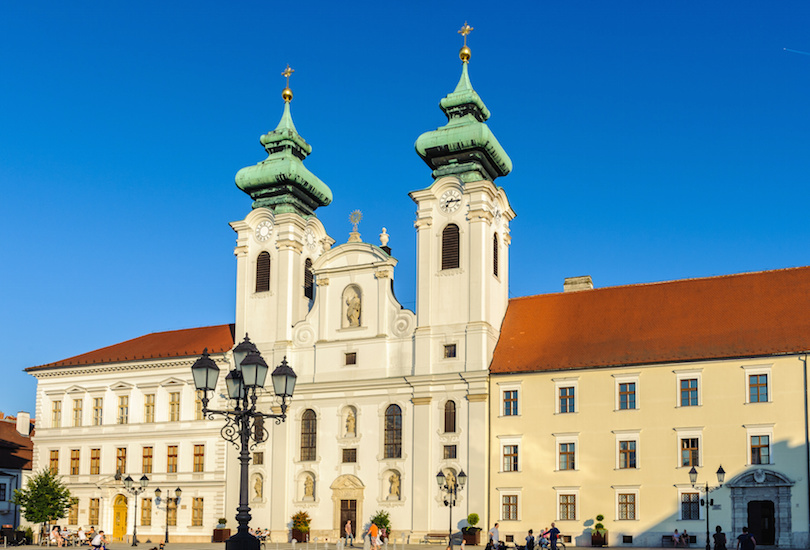
With its roots in Celtic and Roman eras, Gyor also has been ruled by the Mongols, Magyars, Czechs, and Ottomans, though city fathers burned the town to keep the Turks from taking it. Gyor, located between Budapest and Vienna, is a good town to just wander around in. At almost every turn you’ll come across statues and marvelous old buildings. The old town at Kaptalan Hill can be found at the confluence of the Danube, Raba and Rebca rivers. A must-see is the church of St. Ignatius of Loyola, an ornate Benedictine cathedral, which visitors have described as “food for the soul.”
9. Hortobagy National Park [SEE MAP]
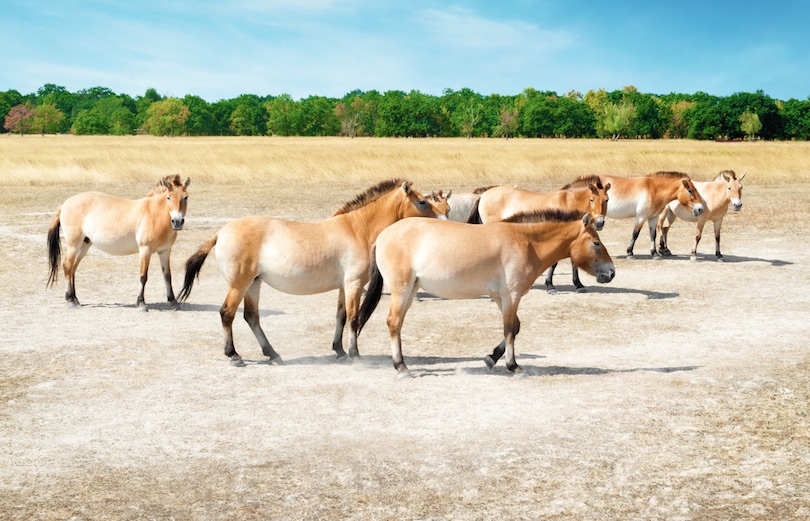
Hortobagy National Park was established as Hungary’s first national park in 1973. It is the country’s largest protected area and Europe’s largest semi-natural grassland, with the alkaline steppe dating back 10,000 years. Animals, including wild horses, lived on the steppe during the Ice Age. Horses, as well as cattle, oxen and water buffalo, still graze on the land. It’s a good place to go bird watching, since 342 species live in the park. A key attraction is the Nine-Arch Bridge that was built in the mid-19th century for people needing to cross the heavily flooded grasslands. Another top site is the Kareag Windmill, also built in the 19th century.
8. Debrecen [SEE MAP]
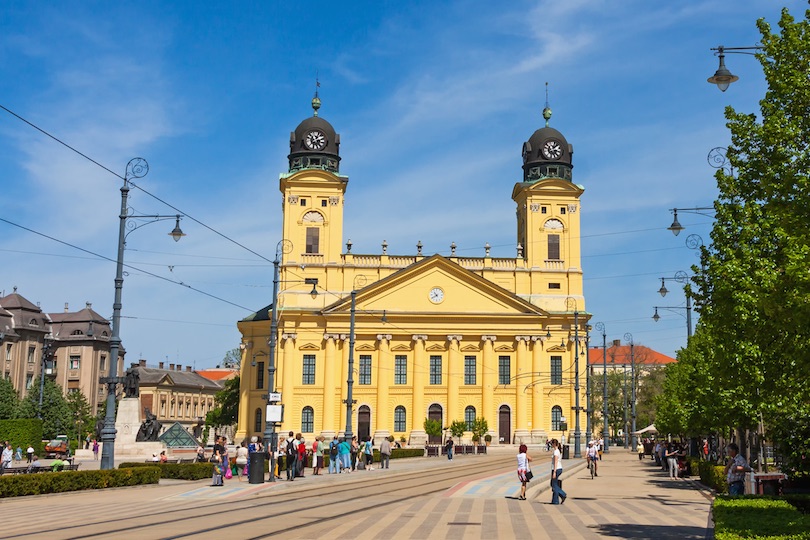
Debrecen, which served as Hungary’s capital various times over the century, is an important cultural center. Heavily destroyed during World War II, Debrecen is considered the intellectual center of the country, starting with the founding of Calvinist College in 1538. Now known as the University of Debrecen, the college is famous for its architecture. The city has a thriving music scene and is home to the Bela Bartok International Choir competition. Top attractions include the Reformed Great Church, the largest Protestant church in Hungary; the Deri Museum with its collection of ancient Egyptian artifacts, and the annual Flower Carnival.
7. Heviz [SEE MAP]
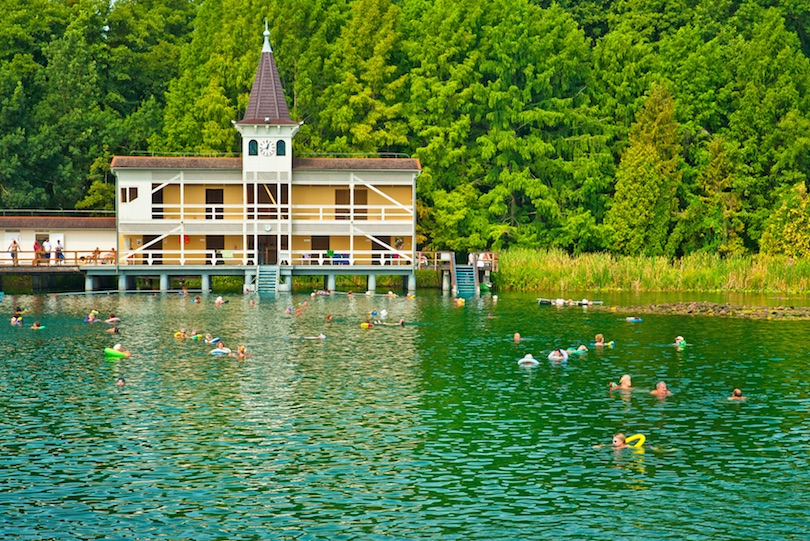
If soaking in hot springs water relaxes you, head to Heviz, home to one of the largest thermal lakes in the world. Water temperature varies from 24 to 37 degrees (71 to 100 °F), making for a pleasant swim. The water flows from its source fast enough to change every 3-1/2 days, keeping the water clean. Located near Lake Balaton, Heviz is famous for its spas with many flourishing resorts. After a swim in these medicinal waters, you might want to hike in the nearby forest, or take in a food festival or outdoor concert. With a Mediterranean-like climate, Heviz is a popular year ‘round destination.
6. Aggtelek National Park [SEE MAP]
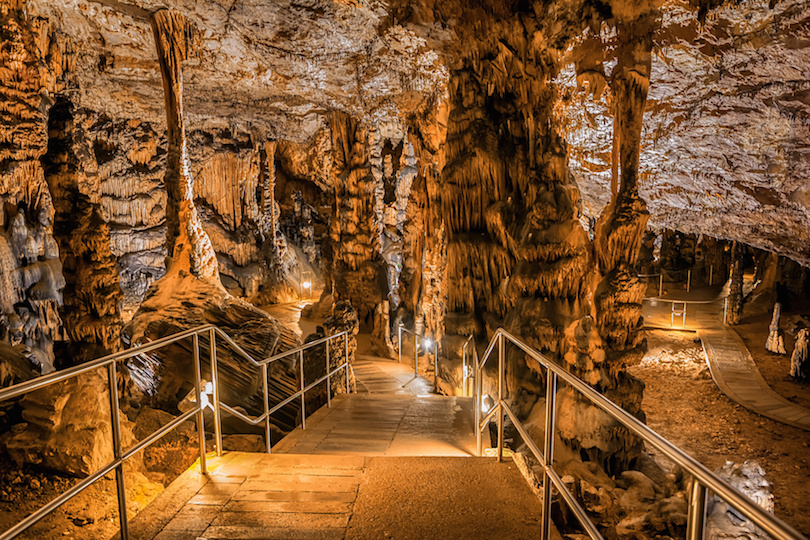
If you’re a spelunker, put Aggtelek National Park on your bucket list for Hungary. Located in northern Hungary about a three-hour drive from Budapest, the park is home to the largest stalactic cave, in Europe. Guided tours, geared to physical capabilities, are available. A special cave experience is listening to concerts inside Baradla. The park is a protected area, with some parts off-limits to tourists, while visitors must remain on marked hiking trails in others. Aggtelek National Park is a good place to see flora and fauna, and visit quaint villages within its boundaries.
5. Pecs [SEE MAP]
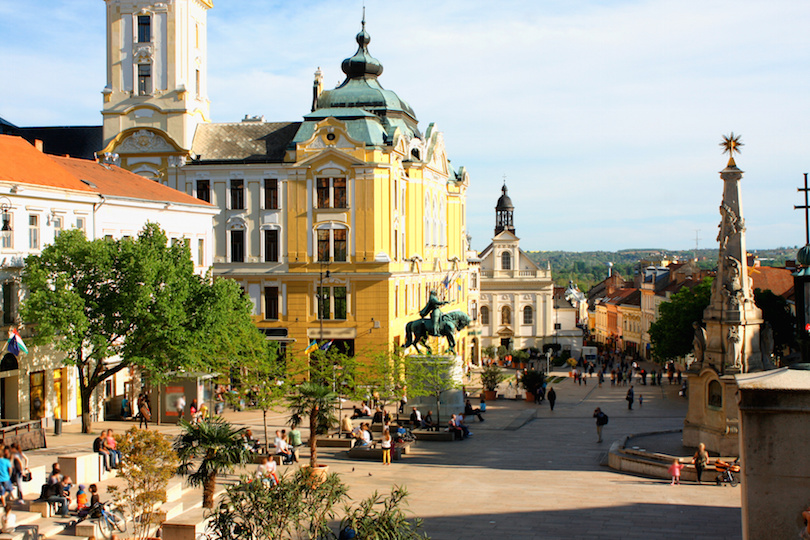
Pecs is a multicultural city where different ethnic groups co-exist peacefully together, where refugees are enfolded into the bosom of the city, making it one of UNESCO’s Cities of Peace. Home to the first university in Hungary, founded in 1367, Pecs has been ruled over by Romans, Christians, and Ottomans. A mild climate, magnificent museums, medieval buildings and fine wines make Pecs a popular travel destination. Historic religious buildings are a big draw, including Pecs Cathedral, Szchenyi Ter, Pecs Synagogue and Mosque of Pasha Gazzi Kassim.
4. Sopron [SEE MAP]
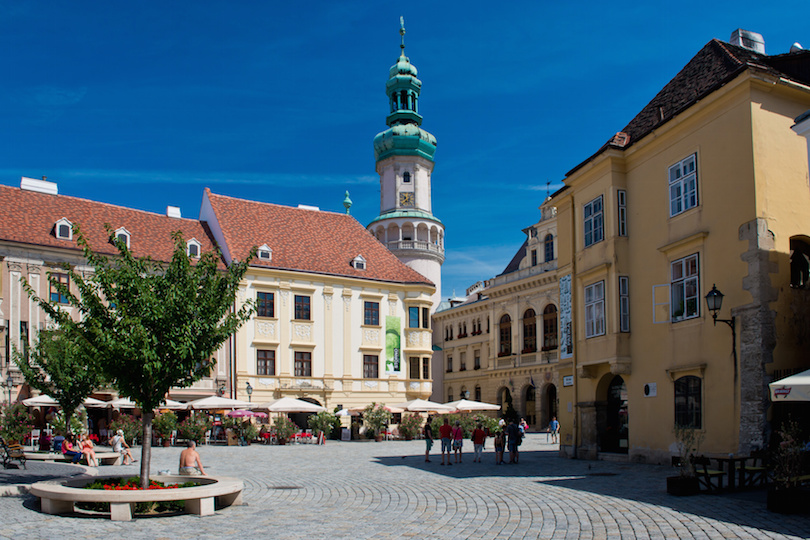
Established in Roman times, Sopron has been both an Austrian and Hungarian city over the centuries. A 1921 vote decided it should be part of Hungary, earning Sopron the nickname of “Most Loyal Town.” The Gate of Allegiance honors this. It is located on the main square next to the city landmark Firewatch Tower. The city was devastated by World War II, though many of its medieval buildings escaped damage. Sopron today is one of Hungary’s major wine producing regions, one of the few famous for both its red and white wines. Great hiking is available in the nearby Alps.
3. Eger [SEE MAP]
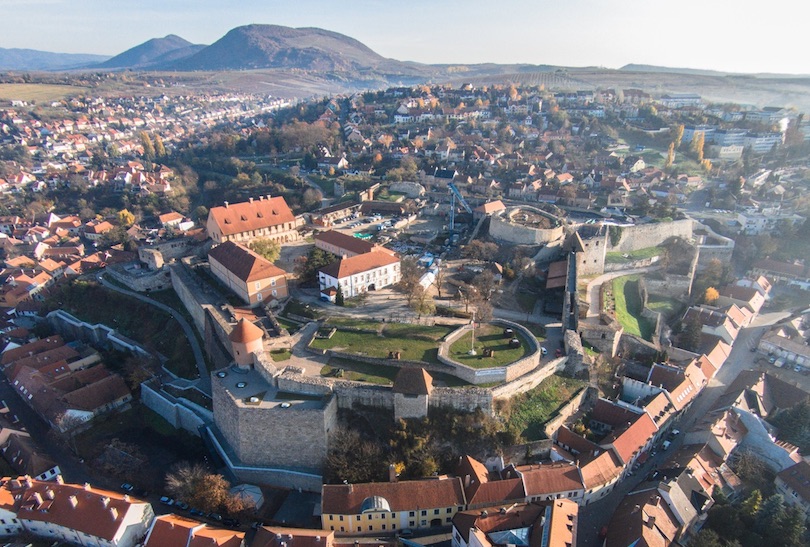
Eger, northern Hungary’s second largest city, is known for several things. Founded by Hungary’s first Christian king, Saint Stephen, in the 10th century, the city is famous for its magnificent baroque buildings. The king founded an Episcopal cathedral, with Eger remaining an important religious center today. The cathedral was built on Castle Hill, with the city growing around it. The castle and basilica remain the city’s top sights, followed by the Valley of the Women, a series of wine cellars and restaurants built into surrounding hills. Check out the Torok Kori Minaret, the northernmost Turkish minaret in Europe; the 150-step climb to the top is steep, but the views are worth it.
2. Lake Balaton [SEE MAP]
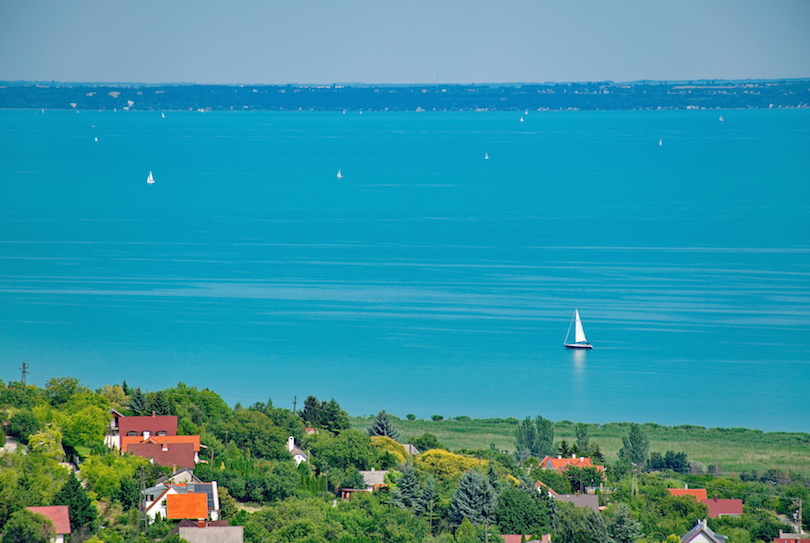
When relaxing at a resort becomes more appealing to you than walking another cobblestone street to see another medieval building, head to Lake Balaton. Europe’s largest freshwater lake is also Hungary’s most popular summer resort. It’s so big it’s sometimes referred to as the “Hungarian Sea,” a delightful misnomer since the country is landlocked. Grass covers many of the beaches, though some resorts have created artificial sandy beaches. Siofok is the lake’s party capital, while ferries at Fonyod take passengers to Badacsony, a major wine-growing region. The north shore offers more wineries, the historical bathing town of Balatonfured, and the baroque Festetics Castle.
1. Budapest [SEE MAP]

Budapest, Hungary’s capital and largest city, is considered one of Europe’s most beautiful cities. One of the best places to visit in Hungary, Budapest is home to the world’s largest thermal water cave system as well as the world’s second largest synagogue and third largest Parliament building, the city’s top attraction . You’ll find spectacular views of the Danube and the city from Fishermen’s Bastion, originally part of the city wall. A poignant memorial to Jews killed in World War II can be found at Shoes of the Danube, where Jews removed their shoes before being shot and washed away by the river.
Budapest is two cities, Buda and Pest, separated by the Danube River but blended into one magnificent metropolis. Located on the western side of the Danube in Buda, Castle Hill is home to the many-times-renovated Royal Palace, which dates back to 1265. The current neo-Baroque building complex houses can’t-miss attractions like the 800-year-old Matthias Church, the National Gallery and other museums that showcase Hungary’s imperial past.
In contrast to hilly Buda, eastern Pest is flat and filled with boulevards that seem to stretch on forever. Pest contains the city’s downtown district, universities and sites like the infamous House of Terror. Now a memorial museum, the former townhouse was the headquarters of the Nazi party in World War II and the secret police when Hungary was a member of the Soviet Union.
Although the past is always present in Budapest, the city is known for its free-wheeling take on modern life too. Nowhere is this more evident than in the kerts, or “ruin pubs,” that spring up in the less developed sections of the city when the weather turns fair. Finding the open-air cafés, pubs and clubs can be challenging, but the cuisine and libations served in these makeshift establishments makes the hunt worthwhile.
Visitors looking for relaxation flock to the Budapest’s many spas, baths fed by natural hot springs that lie beneath the city’s surface. Whether in a modern health spa or an ancient Turkish bath house, “taking the waters” is a must-do Budapest experience. It’s the perfect way to relax after a day exploring one of Eastern Europe’s most popular travel destinations.
Share this post:
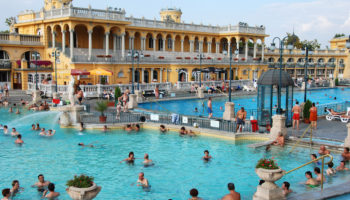
17 Top Tourist Attractions in Budapest
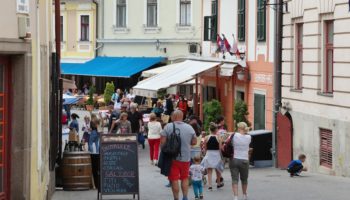
12 Best Cities to Visit in Hungary
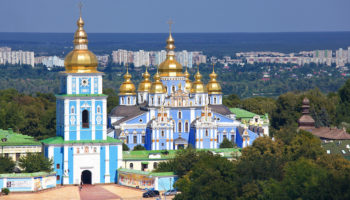
25 Best Places to Visit in Eastern Europe
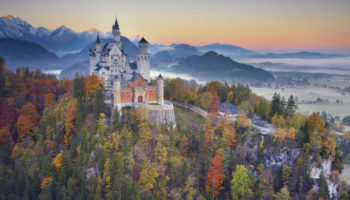
25 Top Tourist Attractions in Europe
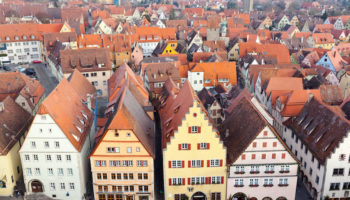
21 Best Places to Visit in Central Europe
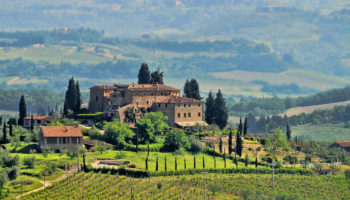
6 Most Beautiful Regions of Europe
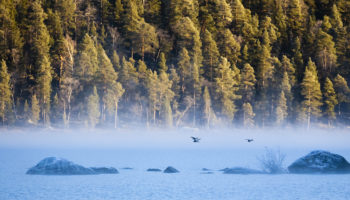
10 Most Beautiful Lakes in Finland
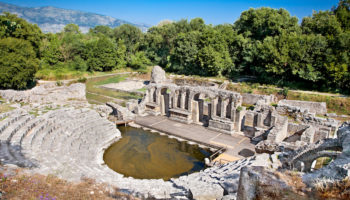
10 Best Places to Visit in Albania
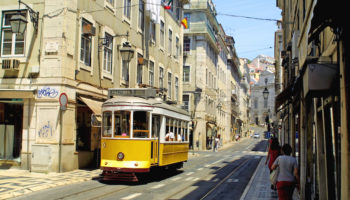
25 Best Cities to Visit in Europe
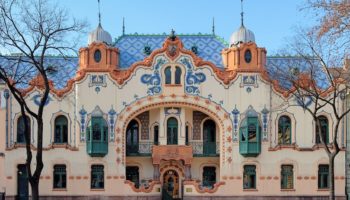
10 Best Places to Visit in Serbia
Reader interactions, leave a reply cancel reply.
Your email address will not be published. Required fields are marked *
This site uses Akismet to reduce spam. Learn how your comment data is processed .
15 Best Places To Visit In Hungary + Itinerary
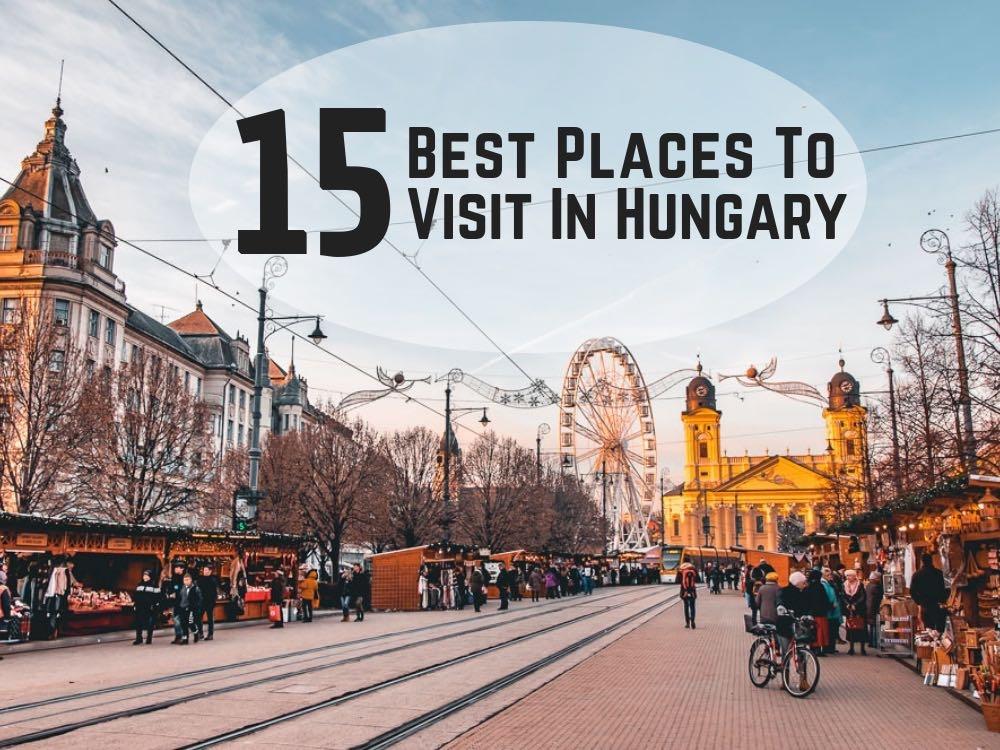
Are you traveling to Hungary soon? Then this is the perfect blog post to find the best places to see in Hungary beyond Budapest. Of course I understand if the beautiful capital is going to be your base and you start traveling around the country from here. Lately I did the same, took a flight to Budapest, enjoyed the city and left on a road trip. In this blog I will tell you all about the Hungary sights to make the most of your holiday in this country. Including a sample itinerary.
1. Budapest
Even after visiting almost 100 countries and countless cities around the world Budapest is mind blowing. This city is full of historical landmarks and fabulous buildings, palaces and churches. The Danube river splits the city in two and beautiful bridges connect the Buda and the Pest side. Most tourist attractions in Budapest are free and walking around feels like strolling through a museum. Don’t forget to check out one of the hot springs and thermal baths in the city center. One of the best places to visit in Hungary surely is Budapest, but there is more.
Booking.com
2. Szentendre
Just 30 minutes North of Budapest you will find the charming village of Szentendre. A lovely local village that is listed in every list of what to do in Hungary. The cobblestoned narrow streets of the cute old town are perfect for window shopping and buying souvenirs. It is a popular escape from the capital and people looking for day trips from Budapest. Most people that visit Hungary will end up an afternoon in Szentendre.
3. Visegrad

Also popular for people on day trips from Budapest. The Visegrad castle is a famous Hungary tourist attraction and the hike to the top makes you appreciate the spectacular views even more. Combine a visit to Szentendre and Visegrad. First visit Szentendre and then continue to Visegrad and watch the sunset from the Visegrad Castle. There is also a bobsled track to spice up your Hungary holidays a little bit.
4. Esztergom

Right on the border of Slovakia you can’t miss Eszetrgom on your trip to Hungary. This city is mostly known for its majestic basilica. Add some adventure to your hungary holidays and climb up to the top of this church. The views are splendid from up here.

Also stroll through the narrow streets of the old town and climb up to the hill opposite the basilica. Here you will find a cool viewpoint and the Sorrowful Virgin Chapel. Combine Szentendre, Visegrad and Esztergom on your road trip. These Hungary sights are all within 1 hour drive. If you are going on a day trip from Budapest consider staying overnight in Esztergom.

5. Lake Balaton
Not to miss when you are ticking off the best places to see in Hungary is Lake Balaton. A popular tourist destination in summer for Western Europeans. There are many things to do around the lake, such as hiking to the Balaton Uplands (totally recommended), bike tours, climb the Aurora mast, hang gliding and all kind of water sports. But making a skydive from a helicopter sounds like on of the best things to do in Hungary to me. Lake Balaton is also famous for its well known festival Balaton Sounds. I want to go some day!
6. Pecs
About 2 hours southwest of Budapest you find the 5th biggest city and another great place to see in Hungary: Pecs. Most tourists have never heard of it and that makes it a great off the beaten path destination in Hungary close to the Croatian border. Highlight of a trip to Eger is the Mosque of Pasha Qasim which is converted into a catholic church.
7. Holloko Castle

Holloko village was the first place I visited on my Hungary itinerary. My road trip led me to this quaint village on the rural countryside of the country, about 2 hours northeast of Budapest. This picture perfect little town was super quiet. Of course it was winter and totally off season, but I enjoyed strolling through this place.

I got myself a hot tea before I hiked up through the forest all the way to the top of the hill to watch the sunset over the castle.
8. Egerszalok Thermal Baths

Thermal baths and Hungary are like oil and the middle east. Everywhere around the country you can find thermal baths and they form one of the most amazing places to visit in Hungary. The one in Egerszalok became a tourist attraction because of its Salt Hill. Thermal water from deep in the earth finds its way out at the Southside of Egerszalok village. This 65 degrees mineral water built white rock formations over the years and formed a white karst hill of salt. It is a unique site in the world as there are only two similar places like this: Pamukkale in Turkey and one in Yellowstone National Park in the US. The nearby Sallris Resort & Spa became a real tourist attraction in Hungary.
Another one of those unknown cities to visit in Hungary. Eger has the potential of becoming a tourist attraction in Hungary, but still you will find yourself pretty much being the only foreign tourist in the off season. Don’t miss the charming streets of Eger Old Town. The colorful houses and the many terraces make this the most vibrant place in the city. People watching in Eger Old Town is one of the best things to do in Hungary. A clear remnant of the Ottoman Empire is the minaret in the center of Eger and the coolest thing about it is that you can climb to the top. Definitely the best Hungary travel tip I got from a local.
10. Caves of Aggtelek
A UNESCO world heritage site with more than 1,000 caves over a relatively small area on the border of Hungary and Slovakia. Visiting the Caves of Aggtelek is one of the best things to do in Hungary for adventurers. There are many tours that lead you into the dark below the earth's surface. The Baradia Domica cave is one of the most popular tourist attractions and is 21 kilometers long. From Budapest to the Caves of Aggtelek takes about 3 hours in a car.
11. Fuzer Castle

All the way northeast on the Slovakian border there is a town called Fuzer. Bare in mind that there is nothing to do, apart from the Fuzer Castle. When you are planning to visit Hungary add this to your road trip itinerary. The drive towards Fuzer will lead you through numerous small villages and is scenic all the way. The castle is built on top of hill looming large over the village below. It is an impressive Hungary sight.
The views from the top are great. Parking the car is about €1, the entrance fee for the castle is €4. Visiting Fuzer Castle was one of my Hungary highlights on my latest trip.

12. Megyer-hegyi Tengerszem
Probably one of the most odd places to visit in Hungary. How best to describe this tourist attraction in Hungary? It is a hidden lake, somewhere up on a hill in the middle of a forest. It is a popular hiking destination in summer, a spooky place in winter. Reaching it was already an adventure, but on an almost getting dark afternoon in winter the setting was a bit creepy. I bet it looks better in summer!

13. Boldog Castle

I got to know this place through Instagram. Or actually I knew about the castle but never knew where it was. When I was setting up my Hungary itinerary I stumbled upon Boldogko Castle. To me it is one of the best things to see in Hungary. I was super excited when I finally got there myself but then found out it was closed. On the internet is says it is open every day, but not when I was there. To get to the famous photo spot you can actually just climb a little hill. It was a bit risky with my expensive camera gear, but totally worth it. After all the effort I decided to stay until sunset, it was freezing, but one of my best memories from my trip to Hungary.
14. Debrecen
The second biggest city in Hungary and a hidden gem close to the Romanian border. in the east. A quaint city not yet overrun by tourists where you can experience the authentic Hungarian lifestyle. I was visiting in winter and there were Christmas markets throughout the city. I indulged on the many local delicacies and mulled wine and found refuge from the cold in many different coffee cafes. These are the best coffee cafes in Debrecen: Cut & Coffee, Black Sheep Microroastery, Vintage World Cafe and Menta Coffee. I also found a vegetarian restaurant called Kis Padlizsan which was the best restaurant in Debrecen.

15. Lake Tisza
After Lake Balaton, Lake Tisza is the second largest body of water in the country. The lake has formed quiet wetlands and multiple little islands across the lake. It is a playground for many species of flora and fauna and heaven for birdwatching. Relaxing is the best thing to do here, but Lake Tisza also offers active Hungary holidays: canoe trips, horse riding and bike tours.
you may also like...

Ultimate Hungary Itinerary for 2 weeks
This is my proposed itinerary for Hungary for you. Depending on how long your Hungary holiday lasts you can pick the by you preferred tourist attractions and best places to see in Hungary.

The numbers on the itinerary map correspond with the numbers of the things to do and places to visit in Hungary in the beginning of this article.
Hungary tourism
A landlocked country in Eastern Europe, bordering 7 other countries. Hungary is most famous for its goulash and of course Budapest, its magical capital. Hungarian is the official spoken language the almost 10 million inhabitants speak. Don’t try it! It is impossible to learn. Budapest draws tourists from all over the world and lets the other tourist attractions in Hungary far behind. To me to show you that the countryside of this country has a lot to offer. There are many things to do in Hungary and I will show you the best places to go.
Don't waste money on high roaming costs. Get here all info about buying a sim card for Hungary in 2023 is easy and it will make your trip much easier! Landing at Budapest and in need of a Hungary sim card? Stay connected on your road trip and buy a Hungary sim card at Budapest Airport .

History of Hungary
Don’t worry I will keep it short! I know you are here for the best places to see in Hungary, but as the countryside of Hungary is full of castles a little history won’t harm you.
It all started with the rise of the Ottoman Empire in the Balkan, which eventually divided Hungary into 3 parts in 1526: The Kingdom of Hungary, Transylvania and the Ottoman Empire. It took till 1718 until the Kingdom of Hungary could finally strike back and pushed the Ottomans back into the Balkan. After some civil unrest in the country in the previous years, the Austro-Hungarian Empire was formed in 1867. This empire became the new leading power in Central Europe and led to major economic and industrial development. Budapest became one of the most prominent European cities in that decade and became known for the first underground in Europe.
In both World Wars the Hungarians chose the side of Germany which led to devastating loses. The fallen apart country was then taken over by the communists, the economy collapsed dramatically and resulted in many protests. Though only with the fall of the Berlin Wall in 1989 the Republic of Hungary was proclaimed on October 23th. Since 2004 Hungary is part of the European Union.

Best time to visit Hungary
It is no secret that traveling to Hungary is best in the European summer months June till August. Hungary gets cold in winter and wet in autumn, but the good thing about traveling in Hungary is that even though summer is peak season, it still feels of the beaten path in Europe. Most tourist attractions in Hungary are not discovered by mass tourism yet, so visiting Hungary in summer still is the best time of the year. That said my last trip to Hungary was in December 2018 and all the photos in this Hungary travel blog are taken in that time. Weather plays an important role when choosing the best time to travel, but as long as it is dry, you are going to have a blast. Mind you that in winter the days in Hungary are very short and there is basically only 8 hours of day light. Nevertheless I had an awesome time traveling in Hungary in December 2018.

My Hungary trip
It was my second time in the country and I was lucky to see more than just Budapest this time. When I did some research for my Hungary itinerary and cool places to see I found out I actually did not know that much about Hungary tourism. My first Hungary trip was actually just to Budapest. On the internet I found that Hungary holidays could be filled with medieval castles, lovely countryside villages, lakes and thermal baths.
First I stayed a couple days in Budapest before starting my Hungary itinerary. All the below listed places to see in Hungary are totally worth checking out. I rented a car for a week and ended up ticking off all the things to do in Hungary. I would recommend you travel to Hungary for a t least a week. It is going to be difficult to put all the below sights in a 1-week itinerary, so you will have to make choices otherwise. I hope this Hungary travel blog points you in the right direction.

Flights to Hungary
Budapest is a very well connected destination in Eastern Europe, especially since the low-cost airline Wizz Air made Budapest its main hub. Wizz Air serves over 60 destinations alone already from BUD airport. Air fares are cheap but remember to play by the rules and expect to pay for check in luggage. Ryanair also flies directly to Budapest. Getting to Budapest was never this easy and if you are only traveling with hand luggage you can already find one-way tickets for just $10! Then rent a car and let your adventurous Hungary holidays begin!

Luxury hotels in Hungary can be pretty affordable. There are not always many accommodation options available when on a road trip through the countryside. Still I mostly found some cool places to stay. Budapest obviously has a wide array of luxury hotels and loads of amazing mid-range options. I stayed in a chic modern apartment in the middle of the city for just $50 a night. In the countryside you will mostly only find pensions and bed & breakfasts.

Hopefully all the above information about the best places to visit in Hungary were helpful and you were able to create your own Hungary itinerary based on my tips. Please consider helping me by sharing this blog link somewhere on the internet. A tweet, a pin, or a post in a Facebook Group, anythings would help me a lot. Thank you very much!
- eastern europe
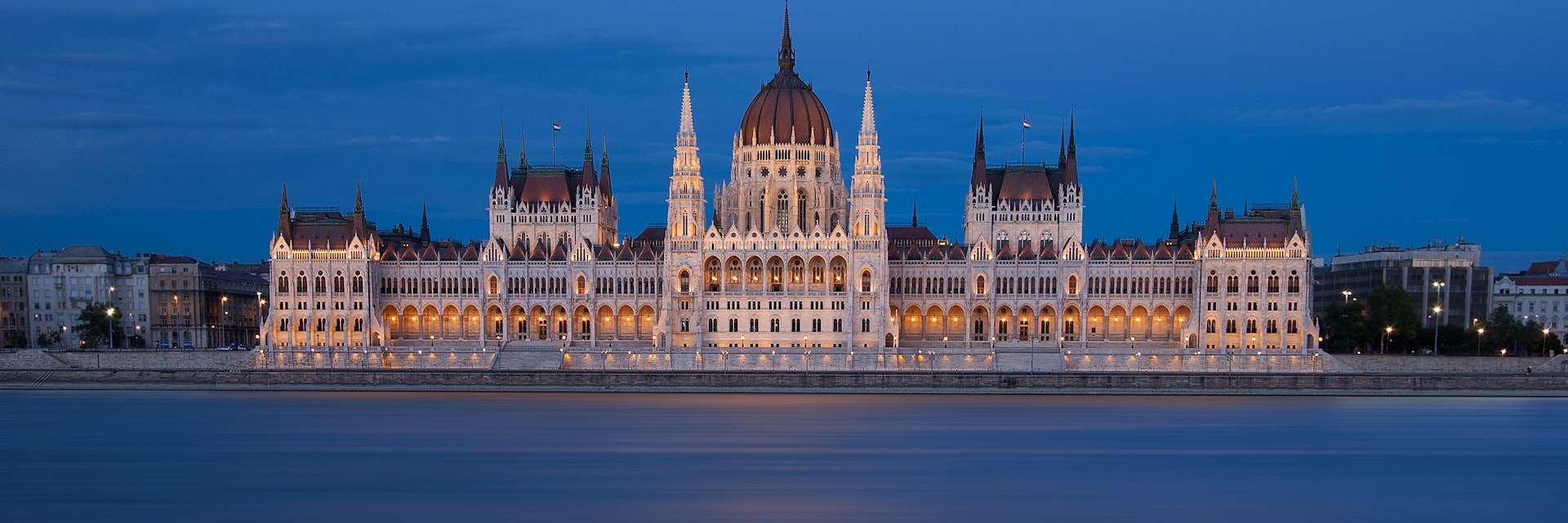
Stunning architecture, vital folk art, thermal spas and Europe's most exciting capital after dark are Hungary's major drawing cards.
Attractions
Must-see attractions.
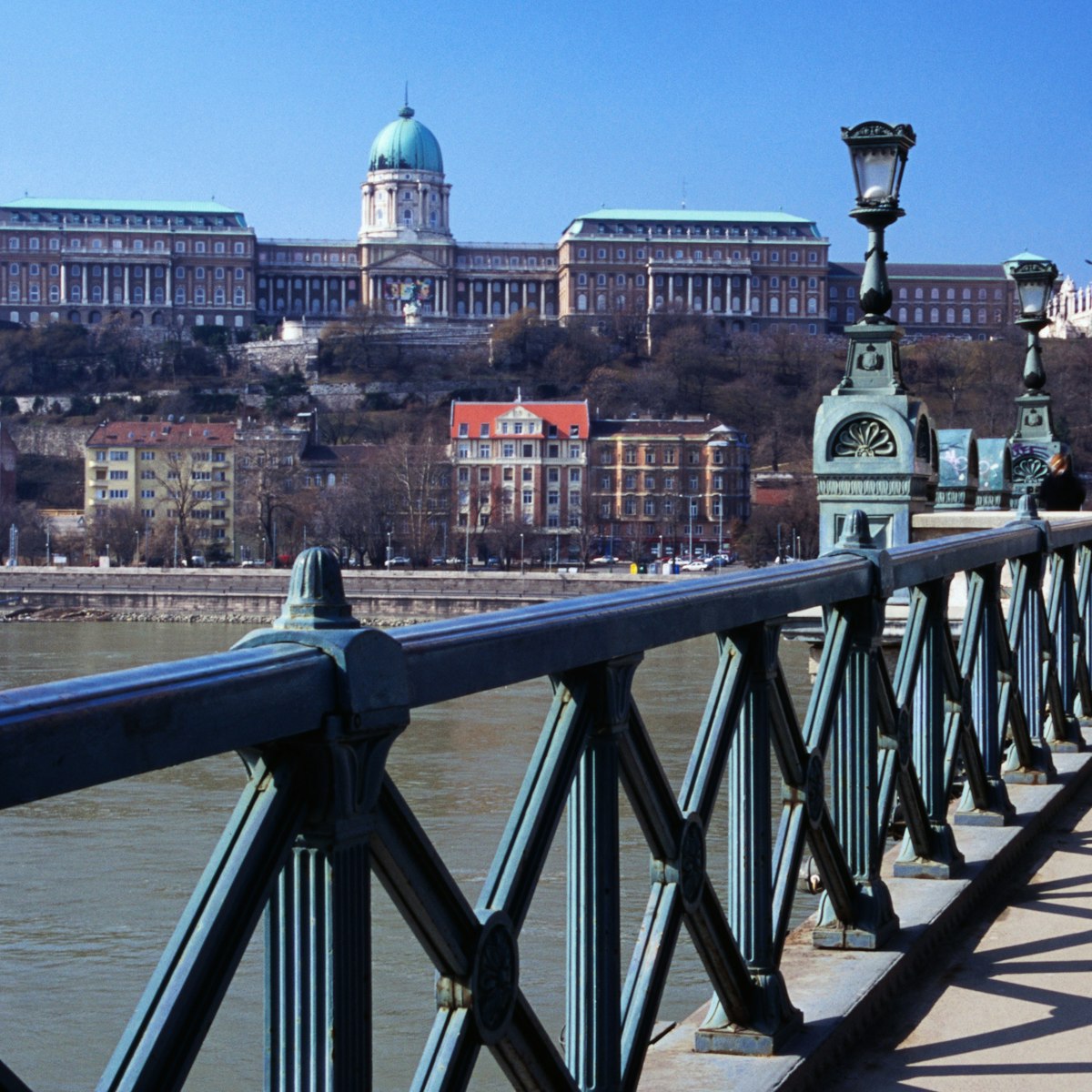
Castle Hill
Castle District
Castle Hill is a kilometre-long limestone plateau towering 170m above the Danube. It contains some of Budapest’s most important medieval monuments and…
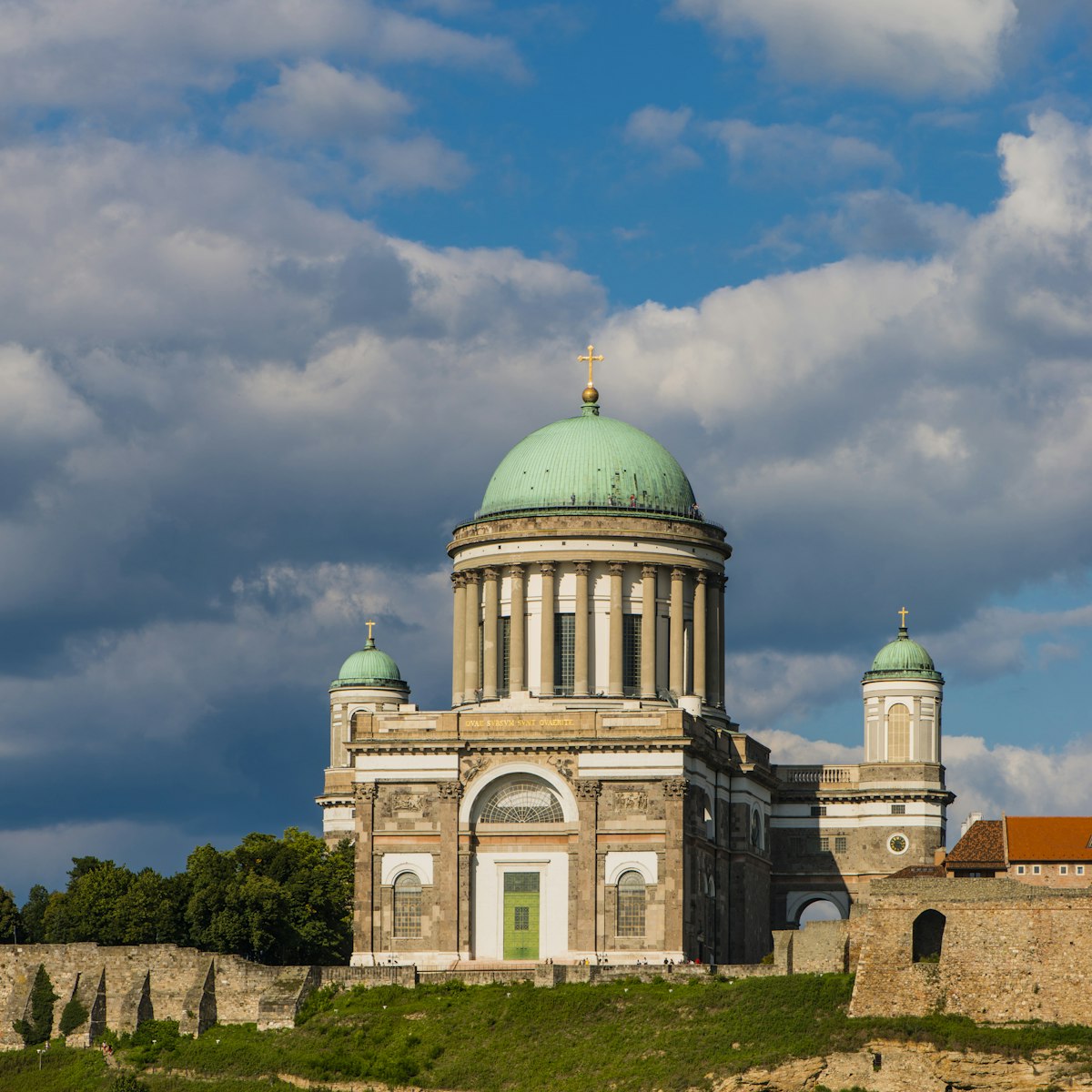
Esztergom Basilica
The largest church in Hungary sits on Castle Hill, and its 72m-high central dome can be seen for many kilometres around. The building of the present…
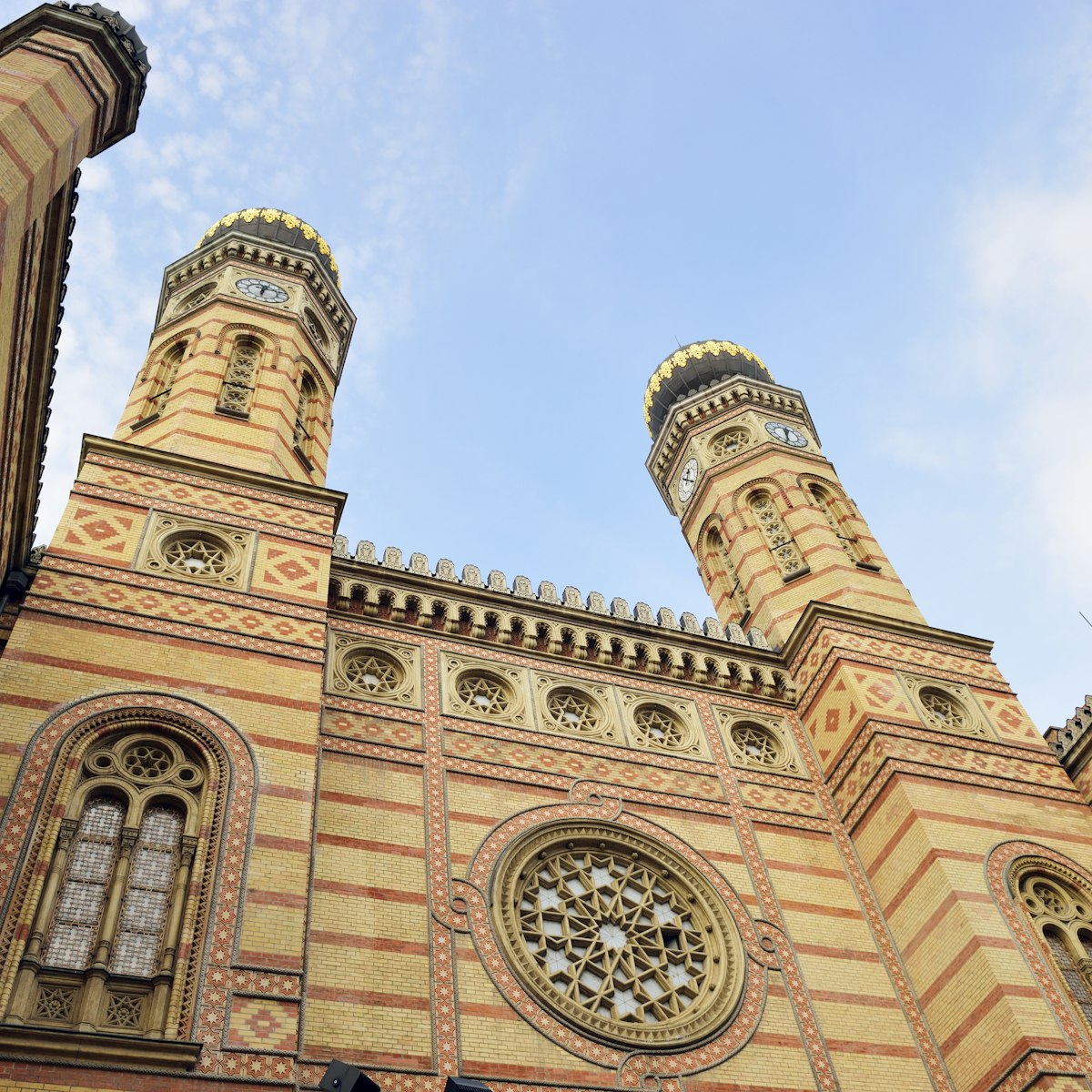
Great Synagogue
Erzsébetváros & the Jewish Quarter
Budapest's stunning Great Synagogue is the world's largest Jewish house of worship outside New York City. Built in 1859, the synagogue has both Romantic…
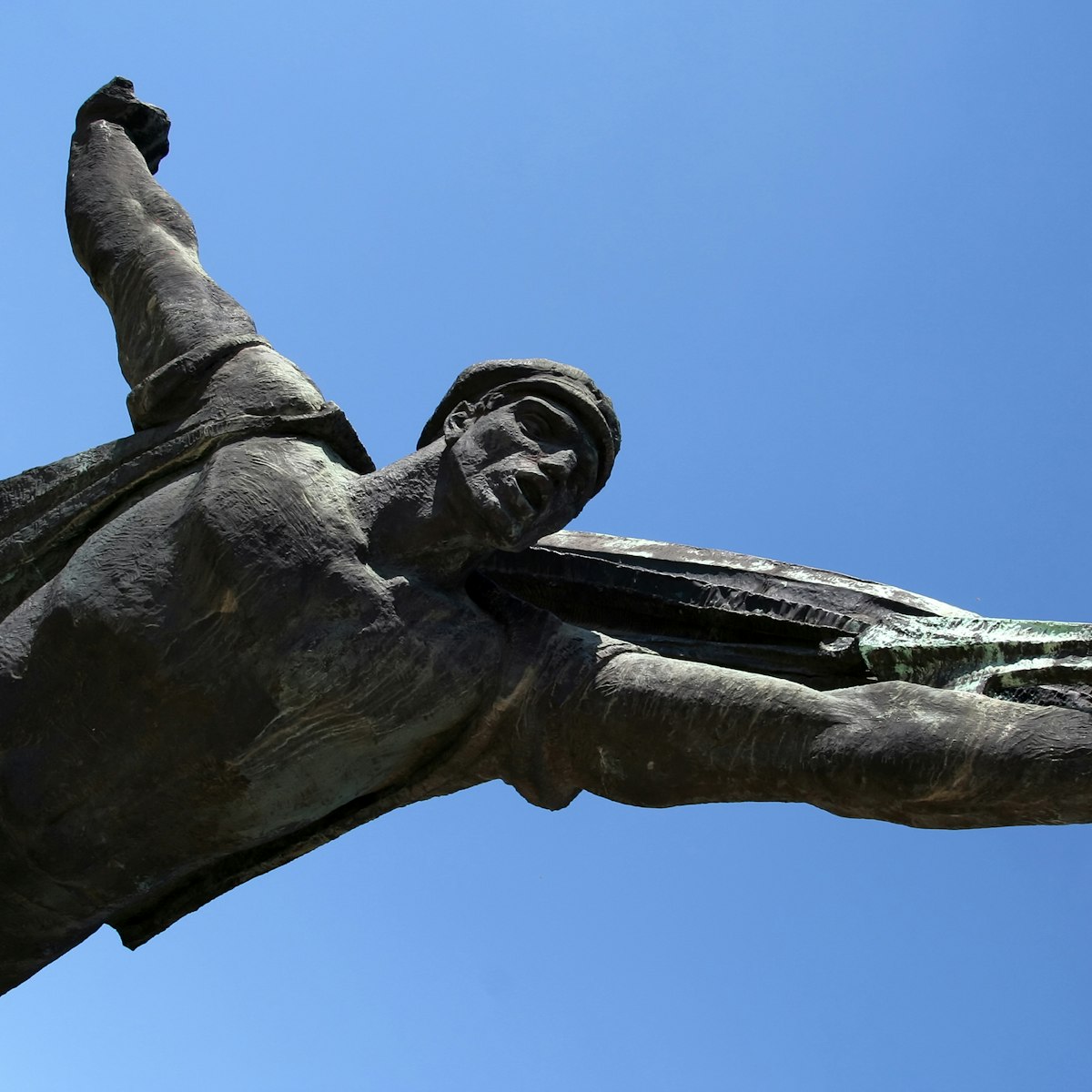
Memento Park
Home to more than 40 statues, busts and plaques of Lenin, Marx, Béla Kun and others whose likenesses have ended up on trash heaps elsewhere, Memento Park,…
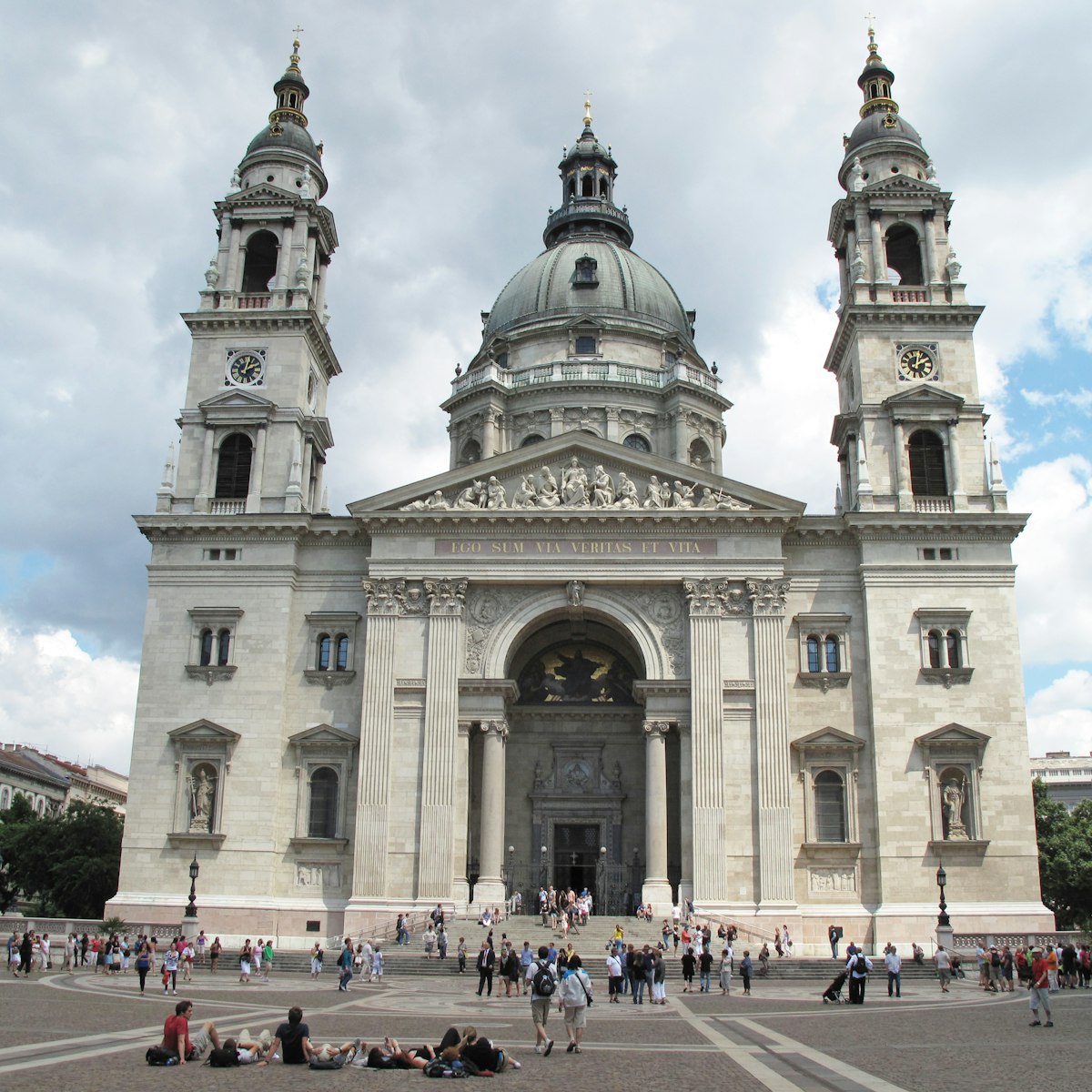
Basilica of St Stephen
Budapest’s neoclassical cathedral is the most sacred Catholic church in all of Hungary and contains its most revered relic: the mummified right hand of…
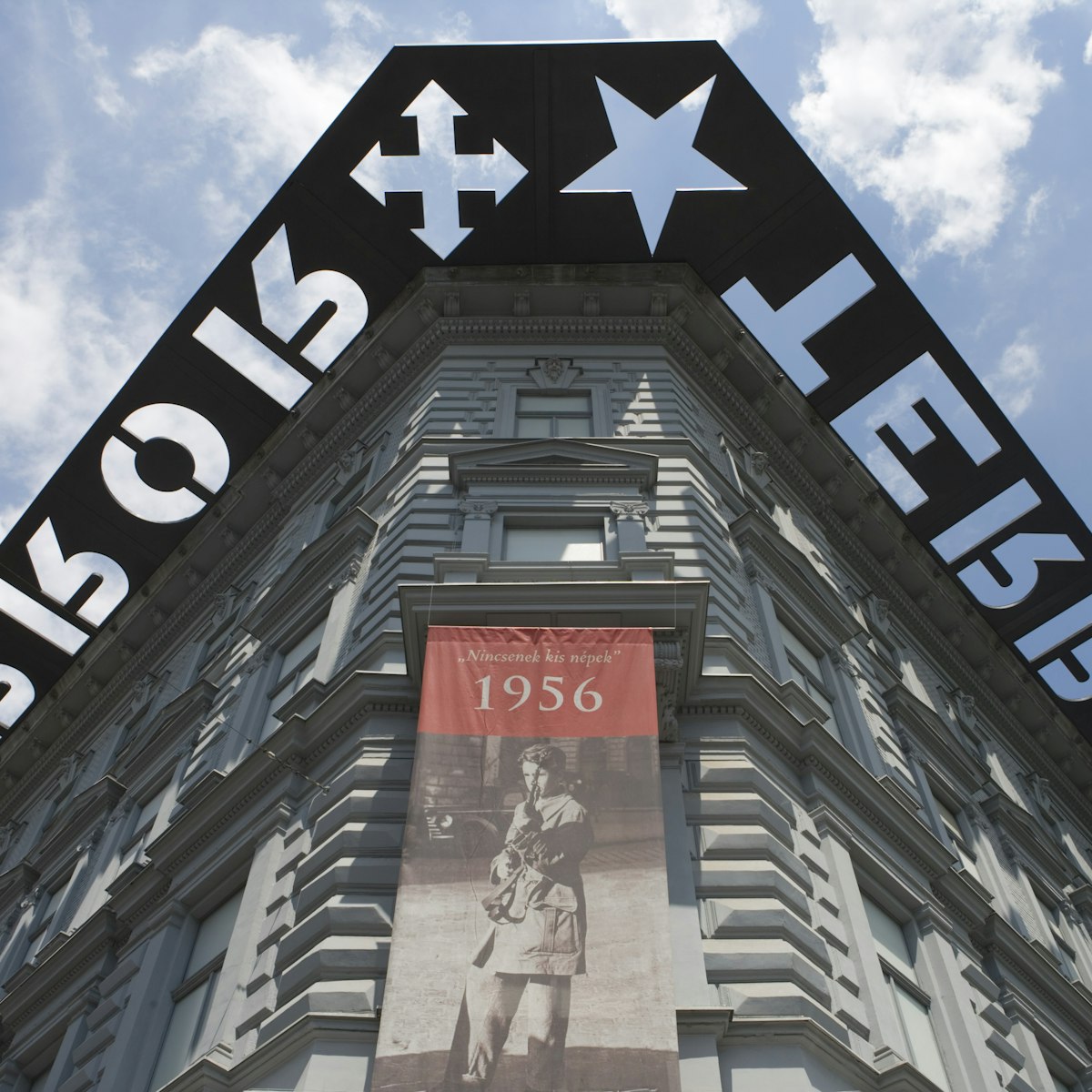
House of Terror
The headquarters of the dreaded ÁVH secret police houses the disturbing House of Terror, focusing on the crimes and atrocities of Hungary's fascist and…
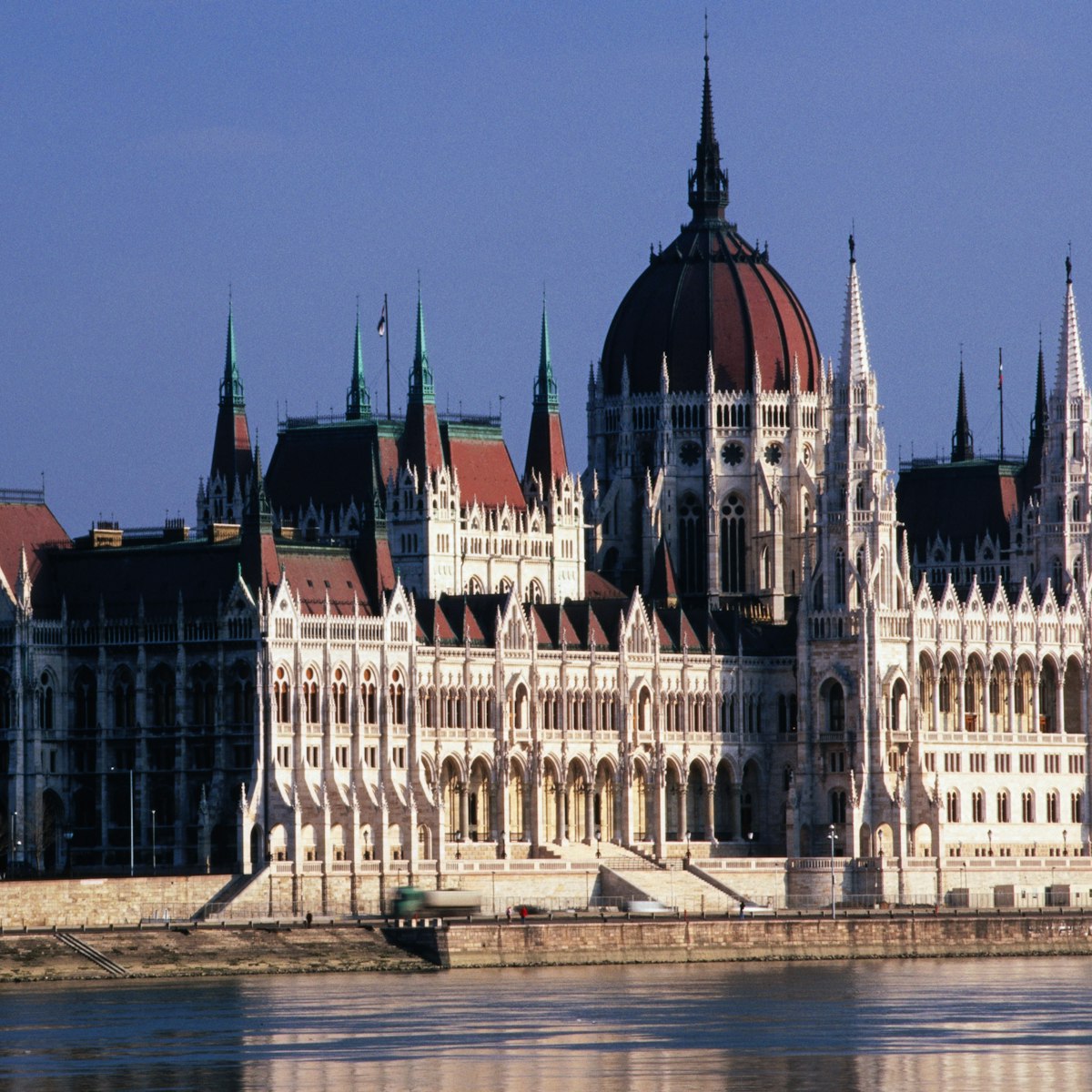
The Eclectic-style Parliament, designed by Imre Steindl and completed in 1902, has 691 sumptuously decorated rooms. You’ll get to see several of these and…
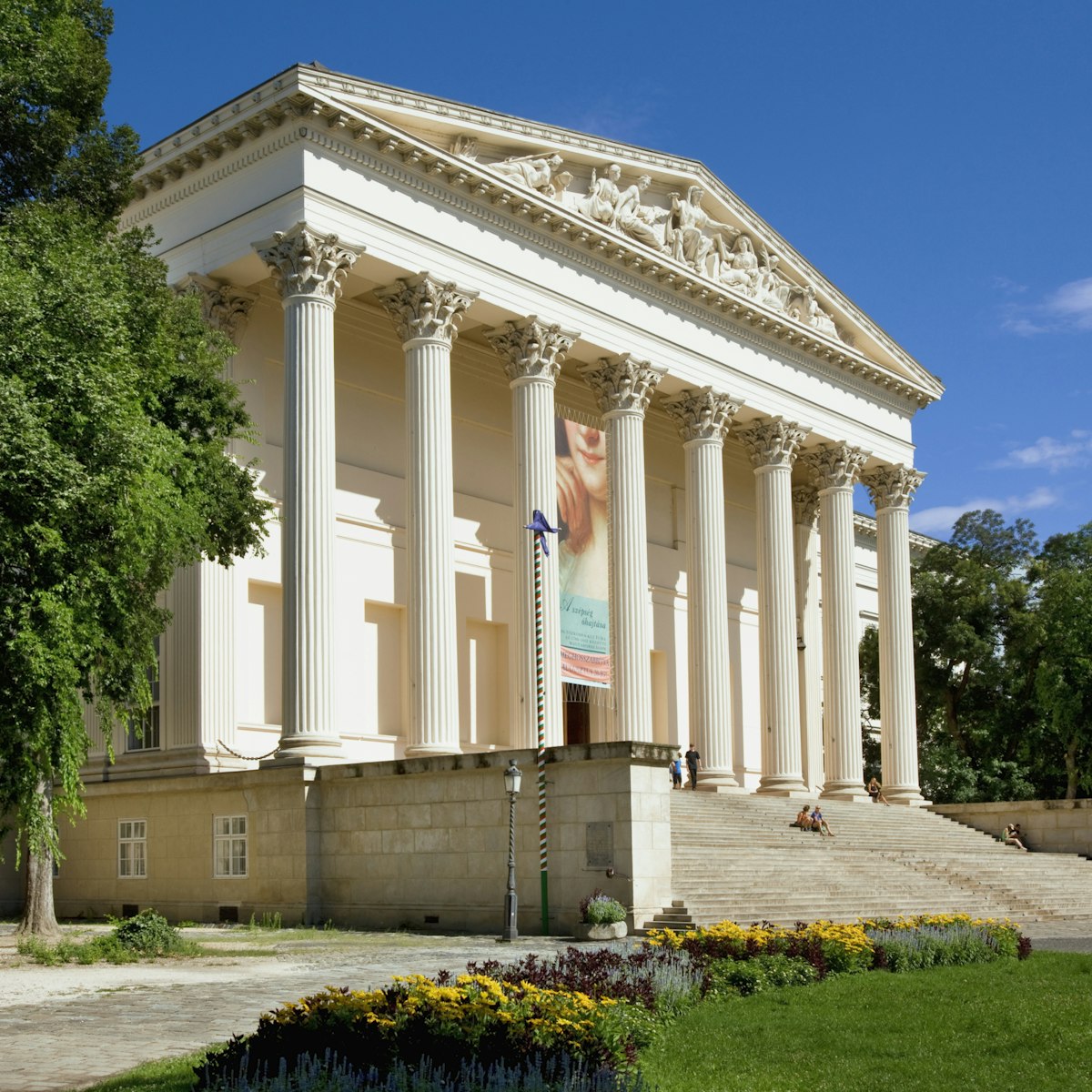
Hungarian National Museum
The Hungarian National Museum houses the nation’s most important collection of historical relics in an impressive neoclassical building, purpose built in…
Latest stories from Hungary
Filter by interest:
- All Interests
- Adventure Travel
- Art & Culture
- Beaches, Coasts & Islands
- Food & Drink
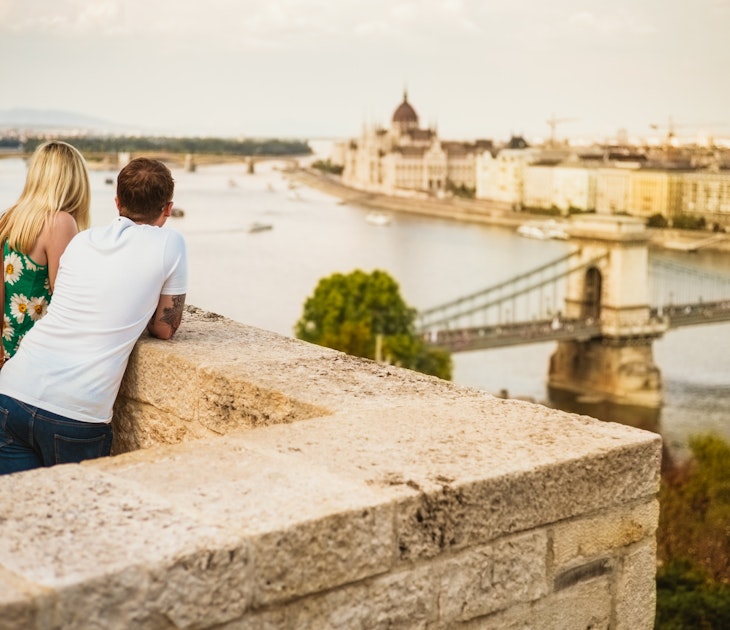
Mar 7, 2022 • 6 min read
Budapest is a symbol of Hungary’s history, architecture, and identity, but there’s more to experience beyond the capital
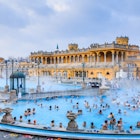
Sep 20, 2021 • 8 min read
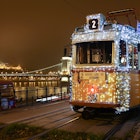
Oct 24, 2019 • 4 min read
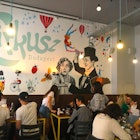
Jun 7, 2019 • 5 min read
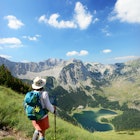
Mar 28, 2019 • 5 min read

Jan 22, 2019 • 2 min read

Oct 31, 2018 • 2 min read
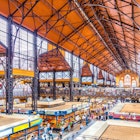
Sep 28, 2018 • 5 min read

Jun 13, 2018 • 4 min read
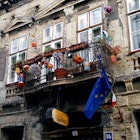
Jan 28, 2018 • 4 min read
in partnership with getyourguide
Book popular activities in Hungary
Purchase our award-winning guidebooks.
Get to the heart of Hungary with one of our in-depth, award-winning guidebooks, covering maps, itineraries, and expert guidance.
Hungary and beyond
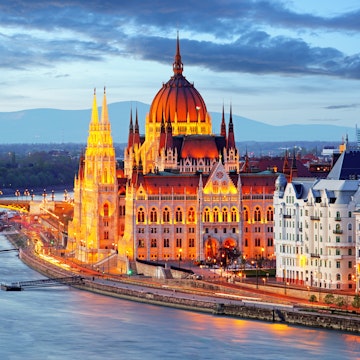
Map of Hungary
Book your individual trip , stress-free with local travel experts
- roughguides.com
Find inspiration and information for your next trip.
Get a local travel expert to plan your personalized trip.
Book & travel securely with our money-back guarantee and local expert assistance.
- Travel guide
- Local Experts
- Travel Advice
- Accommodation
Plan your tailor-made trip with a local expert
Book securely with money-back guarantee
Travel stress-free with local assistance and 24/7 support
Interactive map

Regions in Hungary
Split in two by the Danube, Hungary blends the beauty of old Europe with a touch of eastern magic. As our map of Hungary shows, it’s right on the edge of Central Europe, sandwiched between seven other countries.
The first port of call for most visitors is Budapest , where trolleybuses and trams rattle past splendid Art Nouveau buildings. Beyond the capital’s crowded coffee houses and steamy Turkish baths, you’ll find fairytale castles, sun-soaked lakeside resorts, and the sprawling Hortobágy National Park, where wild horses still run free through the wispy grass.
Rolling vineyards tempt a steady trickle of tourists out to Hungary’s wine regions, including Villány and Tokaj, the latter known for its sweet, honey-coloured vintages. You’ll want to try goulash, the country’s national dish, but be sure to save space for some of the other hearty soups, stews and pastries. There’s no need to leave Hungary feeling hungry.
If you are planning to travel to Hungary, check out the best places to go in Hungary , learn about getting there as well as great things to do and where to stay once you are there.
Tailor-made travel itineraries for Hungary, created by local experts

16 days / from 5292 USD
Gorgeous gems of Hungary, Slovenia and Croatia
From the spas of Budapest to Lake Bled with its castle and further on to Croatia - this itinerary takes you across 3 countries, with a special focus on Slovenia's lake area and the Dalmatian coast in Croatia.
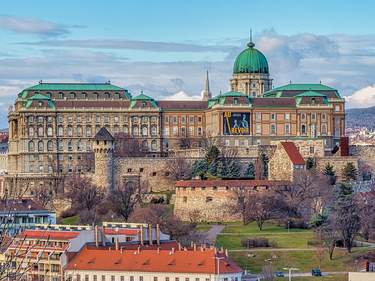
8 days / from 2106 USD
Fairytale Czech Republic and Hungary
Visit 3 countries at once: Czechia with the beautiful cities of Prague, Cesky Krumlov and Kutna Hora. Afterwards, visit Bratislava in Slovakia before continuing to Budapest. Hungary's capital is full of interesting activities and wonder.

4 days / from 1188 USD
Danube capitals
Keen to explore three of Europe's capital cities but short on time? This three-country trip allows you to visit Vienna, Bratislava and Budapest, three remarkable capital cities with a wealth of history and culture at your fingertips.

- Budapest and around
- Western Hungary
- Eastern Hungary
- The Great Plain
The Rough Guides to Hungary and related travel guides
In-depth, easy-to-use travel guides filled with expert advice.
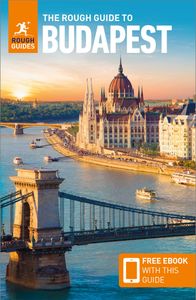
Travel advice for Hungary
From travel safety to visa requirements, discover the best tips for traveling to Hungary
- Culture and Etiquette in Hungary
- Eating and drinking in Hungary
- Getting around Hungary: Transportation Tips
- How to get to Hungary
- Sports and Outdoor activities in Hungary
- Travel Tips Hungary for planning and on the go
- Best time to visit Hungary
Find even more inspiration here

written by Eleanor Aldridge
updated 09.02.2021
Ready to travel and discover Hungary?
Get support from our local experts for stress-free planning & worry-free travels.
- 3 Other destinations
- 4.1 Politics
- 4.2 Climate
- 4.3 Holidays
- 4.4 Visitor information
- 6.1 By plane
- 6.2 By train
- 6.5 By ship
- 6.6 From Slovakia
- 7.1 By plane
- 7.2.1 By train
- 7.2.2 By bus
- 7.2.3 By boat
- 7.3.1 Highways
- 7.4 By car pool
- 7.5 By taxi
- 10.1.1 Money exchange
- 10.2 Tipping
- 10.3.1 Hungarian foods
- 10.3.2 Hungarian beverages
- 10.3.3 Others
- 11.1 Cuisine
- 11.2 Vegetarian food
- 12.2 Liquor
- 12.4 Coffee
- 13.1 Hostels
- 13.2 Farmhouses
- 13.3 Camping
- 16.1 Driving conditions
- 17 Stay healthy
- 18.1 General etiquette
- 18.2.1 National issues
- 18.3 Uncommon customs
Hungary ( Hungarian : Magyarország ) is a small landlocked country in the south-eastern region of Central Europe . It features a gorgeous capital city, Budapest , and the largest lake in Central Europe, Balaton . Hungary offers many diverse destinations: relatively low mountains in the north-west, the Great Plain in the east, lakes and rivers of all sorts, and many beautiful small villages and hidden gems of cities. Top this off with Hungary's great accessibility in the middle of Europe, a vivid culture and economy, and you get a destination absolutely worth visiting if you're in the region.
Regions [ edit ]

Cities [ edit ]
- 47.498333 19.040833 1 Budapest — with green filled parks, interesting museums, and a pulsating nightlife, Budapest is one of Europe's most delightful and enjoyable cities
- 47.53 21.639167 2 Debrecen — the second largest city in the country
- 47.684167 17.634444 3 Győr — there are many cafés, restaurants, boutiques, and night clubs in its lovely baroque city center
- 46.9075 19.691667 4 Kecskemét — a town famous for its vibrant music scene, plum brandy, and Art Nouveau architecture
- 48.1 20.783333 5 Miskolc — with the unique cave bath in Miskolc-Tapolca , the third largest city in the country, located near the Bükk hills
- 47.95 21.716667 6 Nyíregyháza — a medium-sized city with a busy water resort, museum village, and annual autumn festival
- 46.070833 18.233056 7 Pécs — a pleasant cultural centre and university town
- 46.25 20.166667 8 Szeged — the sunniest city in Hungary
- 47.2 18.416667 9 Székesfehérvár — former royal seat, famous for its baroque architecture and museums
Other destinations [ edit ]
- 46.85 17.72 1 Lake Balaton — the major lake of Hungary and the biggest lake in Central Europe
- 47.59458 21.15678 2 Hortobágy National Park — Hungary's largest protected area and the largest semi-natural grassland in Europe
Understand [ edit ]

Hungary is one of the 15 most popular tourist destinations in the world, with a capital regarded as one of the most beautiful in the world . Despite its relatively small size, Hungary is home to numerous World Heritage Sites, UNESCO Biosphere reserves, the second largest thermal lake in the world (Lake Hévíz), the largest lake in Central Europe ( Lake Balaton ), and the largest natural grassland in Europe ( Hortobágy ). In terms of buildings, Hungary is home to the largest synagogue in Europe (the Great Synagogue of Budapest), the largest medicinal bath in Europe (Széchenyi Medicinal Bath), the third largest church in Europe (Esztergom Basilica), the second largest territorial abbey in the world (Pannonhalma Archabbey), the second largest Baroque castle in the world (Gödöllő), and the largest Early Christian Necropolis outside Italy (Pécs).
You can expect to find safe food and water, good safety and a generally stable political climate.
Hungary has been ethnically diverse since its inception, and while today over 90% of the population are ethnically Hungarian, pockets of ethnic and cultural Slovaks, Romanians, Germans, Romani/Sinti people (Gypsies), and others dot the country. Due to the border changes of Hungary after World War I, over 2 million ethnic and cultural Hungarians live in bordering countries, as well. The Hungarians, otherwise known as Magyars, are the descendants of several tribes from Central Asia, who were believed to be fierce, nomadic horsemen and came to Central Europe in the 9th century.
Politics [ edit ]
Hungary is governed by a right-wing conservative party that is accused of authoritarian behaviour, and the country's status was declared to be no longer a full democracy but an electoral autocracy by resolution of the EU parliament in Sep 2022. This is unlikely to affect travellers who refrain from political activity and do not run afoul of the law. There are also reports of general anti-foreigner sentiment and racism against people who look ethnically non-European, however, Hungary seems to lie within the average of the former Eastern Bloc in that regard.
Climate [ edit ]
Temperatures in Hungary vary from -20°C to 39°C through the year. Distribution and frequency of rainfall are unpredictable due to the continental climate of the country. Heavy storms are frequent after hot summer days, and so do more days long still rainfalls in the autumn. The western part of the country usually receives more rain than the eastern part, and severe droughts may occur in summertime. Weather conditions in the Great Plain can be especially harsh, with hot summers, cold winters, and scant rainfall.
Holidays [ edit ]
- 1 January - New Year's Day
- 15 March - National Day (commemorating the 1848 Hungarian revolution and independence war against the Austrian Empire)
- moveable - Good Friday
- moveable - Easter
- 1 May - International Worker's Day
- moveable - Pentecost
- 20 August - State Foundation Day (also known as St. Stephen's Day)
- 23 October - National Day (also known as Republic Day)
- 1 November - All Saints Day
- 25-26 December - Christmas
Visitor information [ edit ]
- Visit Hungary
Talk [ edit ]

Hungarians are rightly proud of their unique, complex, sophisticated, richly expressive language, Hungarian ( Magyar pronounced "mohdyohr"). It is a Uralic language most closely related to Mansi and Khanty of western Siberia. It is further sub-classified into the Finno-Ugric languages which include Finnish and Estonian ; it is not at all related to any of its neighbours: the Slavic, Germanic, and Romance languages belonging to the Indo-European language family.
Although Hungarian is related to Finnish and Estonian, it is not mutually intelligible with either of them. While there are some similarities in the vocabulary, the complicated grammar and pronunciation make it one of the most challenging languages for English speakers to learn. However, modern Hungarian is written in the Latin alphabet, which eliminates the need for English speakers to learn a new script.
English is a mandatory subject in schools in Hungary. However, most Hungarians are not fluent in the language, and their level of proficiency is lower than that of many other European countries. Younger generations and people living in Budapest may be able to hold a decent conversation in English but don't expect the same from people in rural areas. It's best not to expect people to speak English at all in rural parts of the country.
German is spoken almost as widely as English and is almost universally spoken near the Austrian border, especially in Sopron , which is officially bilingual and has significant contacts with Vienna due to its accessibility by Vienna suburban trains.
Russian , which was compulsory in the Communist era, is spoken by a minority of Hungarians. Speaking Russian to Hungarians is a sensitive issue due to the history of unwanted Soviet domination, so be sure to begin the conversation in Hungarian and ask if the person speaks Russian before proceeding, and only use Russian as a last resort.
Get in [ edit ]
Hungary is a member of the Schengen Agreement . See Travelling around the Schengen Area for more information on how the scheme works, which countries are members and what the requirements are for your nationality. In summary:
- There are normally no immigration controls between countries that have signed and implemented the treaty.
- There are usually identity checks before boarding international flights or boats entering the Schengen Area. Sometimes there are temporary border controls at land borders.
- A visa granted for any Schengen member is valid in all other countries that have signed and implemented the treaty.
Recognised refugees and stateless persons in possession of a valid travel document issued by the government of any one of the above countries/territories are exempt from obtaining a visa for Hungary (but no other Schengen country, except Germany and, for refugees, Slovakia ) for a maximum stay of 90 days in a 180-day period.
Citizens of Antigua and Barbuda are permitted to work in Hungary without the need to obtain a visa for the period of their 90-day visa-free stay. However, this ability to work visa-free does not necessarily extend to other Schengen countries.
Citizens of Croatia can also enter the country by showing their identity card, but may not stay longer than 90 days in a 180-day period or work in Hungary without a work permit.
By plane [ edit ]

Hungary's international airports are Liszt Ferenc Airport ( BUD IATA ) in Budapest , Airport Debrecen [dead link] ( DEB IATA ) in Debrecen and Hévíz–Balaton Airport ( SOB IATA ) in Sármellék. The Hungarian national carrier, Malév (Hungarian Airlines) was closed down in early 2012. There are also several low cost carriers operating to Budapest: for example Ryanair , Wizzair , Easyjet and Eurowings .
By train [ edit ]
Budapest is an important railway hub for the whole Hungary and large part of eastern Europe, with frequent trains from Austria , Germany , Czechia and Slovakia . There are at least one train daily from Bosnia and Herzegovina , Croatia , Italy , Romania , Russia , Slovenia , Serbia , Switzerland and Ukraine , as well as through cars from Poland and seasonal through sleepers from Bulgaria and Montenegro .
For detailed info see Budapest#By_train .
You can search for international train connections at official schedule site of MÁV, national train company, or at German Railways website covering almost whole Europe.
By car [ edit ]

To enter the country, ensure that your International Motor Insurance Card is valid for Hungary (H) along with the Vehicle Registration and a Power of Attorney from the owner if the car is not yours. The border guards are very strict about allowing cars through without these documents (see excepts below).
The Hungarian border control is very strict and thorough. They will not hesitate to conduct a full vehicle search if necessary. Entry from Schengen countries (Austria, Slovenia, Slovakia, Croatia) is out of such border control since the abolition of physical borders. All those remain show light control and due to a bilateral agreement Serbian citizens are also no more undergo a strict border control. However you have to take into consideration that from Schengen area you might undergo a so-called inside-customs control wherever moving/driving in the country. Non-Schengen passengers must take into account facing a strict control upon customs prescriptions from Ukraine and Serbia. Coming from Serbia you are allowed to bring 2 packets of cigarettes into Hungary. If you bring more they will take it and fine for €102. Weapons for hunting are allowed to bring in from any EU member state if you have a European Licence. However with possessing that you may not buy or sell your or a new weapon here. The same is the situation with illicit drugs as well. Infringement of these rules may definitely lead to your immediate arrest!
Entry from non-Schengen countries can take quite a long time, in particular in the summer months on the weekends when EU-Nationals are returning north along the E75 corridor from Belgrade, Serbia. The wait lines to get through the border have been as long as 7 km with a wait time of up to 6 hours. Alternative border points in Hungary or Croatia can be used to by-pass. If you are driving in from an EU country e.g. Austria, you are required to pull over to check with authorities at the border, otherwise, the borders are open and usually the immigration control kiosk are empty.
When driving into Hungary, ensure that the border crossing on the route you choose allows the passage of foreigners. Also some smaller crossings close in the afternoon for the night. It is also required to buy a vignette for driving on highways. 20€ for 10 days, 30€ for a month as of 2024.
By bus [ edit ]
Several international bus lines go in or through Hungary. You can find timetables and book tickets on the homepage of Volánbusz , which is the national bus company and also the local Eurolines representation. Alternatively, Orangeways bus company [dead link] offer services on routes between Budapest and Austria, Croatia, Czech Republic, Germany, Poland, Romania and Slovakia. Timetables and online booking are available on their website. On the southern border with Serbia you shouldn't be surprised when there in the bus a collection is being held for a donation to the border-guards, to let the bus pass faster.
By ship [ edit ]
It is possible to enter Hungary by international shipping lines on Danube (Duna) or Tisza rivers. There is a scheduled hydrofoil service on the Danube to and from Vienna and Bratislava between May and September operated by Mahart.
From Slovakia [ edit ]
- You can use the bus no. 91 of the urban traffic company of Bratislava (DPB) going to Čunovo in order to cross between Rajka (Hungary) and Bratislava (Slovakia). In Bratislava, the bus has Nový most as its terminus, and near the Hungarian border you get on/off at the stop Čunovské jazerá (you need to signal to the driver if you plan to get off at this stop). From Čunovské jazerá it's a four-kilometer-long straight walk through a flat terrain to the town of Rajka, two kilometers on each side of the border. You may detour to visit a monument at the Austrian-Hungarian-Slovakian three country border.
Get around [ edit ]
Hungary has no regular domestic flights. As Budapest lies in the centre of the country and pretty much any point can be reached within three hours by train or bus, there isn't much need for scheduled domestic flights.
However there are many opportunities for people with a valid pilot's license to rent a plane and explore by air.
- A Pilot's Academy of Malev Flying Club [dead link] T:+36 20 565-6467, Dunakeszi . Lightweight gliders and other stuff.
By public transport [ edit ]
There are multiple trip planning websites for Hungarian public transport, for example: utas.hu , menetrendek.hu [dead link] or uj.utvonalterv.hu (this seems to be available only in Hungarian but the first two are available in English). They provide real-time position information about your buses, as well as the planned schedule of the trains and allow you to plan your journey between any two points in the country.
Some important words in Hungarian that may be helpful are:
- “honnan” - from
- “hová” - to
- “Autóbusz állomás” - bus station
- “naponta” - daily
- “munkanapokon” - on workdays
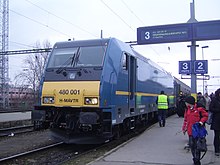
The Hungarian National Railway is MÁV and GYSEV (some lines in the west of the country). MÁV has online schedule and pricing site [dead link] . You can purchase domestic and some international train tickets on the web in English. Read and follow the instruction here .
The train network is star-shaped (hub-and-spoke), fanning out from the centre at Budapest . This is caused by history because half of the once complete train system went to the neighbor countries after World War I. If neither the starting or ending point is Budapest, expect to travel for a long time often with change in Budapest.
Intercity (IC) trains are the fastest, and they're up-to-date, well maintained and clean. They link the major cities with Budapest. Expect to pay about 550 Ft (= €2) extra fee independently from the distance for the mandatory seat reservation (not in international ICs, ECs). In some cases the extra charge can be lower. Compared to the majority of Western European ticket prices, Hungary's IC trains are among the cheapest, with an excellent record of speed and comfort. At the weekends many students use these IC trains to commute between Budapest and other cities, so an early advance booking is recommended on Friday afternoons for the trains leaving Budapest and on Sunday evenings for trains towards Budapest. Working with a notebook is generally safe, unless it's heavy overcrowded.
Other train lines usually are not that fast, and not always cleaned up to the high standards (even in the 1st class), and often vandalised (mostly in Budapest region); however quality standards are improving. During summer trains linking Balaton to Budapest are sometimes overcrowded with the IC usually being sold out. The next choice is the gyorsvonat, or the old fast train. Pricing depends only on the distance and on the car class. Cash desks assume 2nd class by default for non-IC trains (at least in Budapest for English speakers), so if you didn't catch your IC, consider asking 1st class, paying small extra for much more comfort. Smoking is prohibited on all trains, as well as on the station platforms.
Since March 2024, people aged 65 and older and people under 14 generally travel free of charge. People under 26 receive a 50% discount. There is also a nationwide 24-hour-pass. It's called Hungary24 and costs 4999 HUF (approx. 13.10 euros).
It is possible to buy Inter Rail pass for Hungary. Check whether buying tickets for each journey is cheaper.
Check the MAV site for a station list [dead link] where you can buy a train ticket with a debit or credit card. A gépi menetjegykiadás is a staffed cashier desk; jegykiadó automata is a vending machine.
You can buy tickets with euro . It is possible to purchase an international ticket and supplement at every Hungarian railway station which has an international cash desk. Cash desks do not accept euro bank notes of values above €50, and you will get the change in forints.
A station list with ticket vending machine [dead link] usually to destinations which are not enlisted by the vending machines, tickets will be issued without extra charge by the conductor on board. These ar working with a short midnight break.
International bike transport [dead link] on the train also possible on selected trains cost €4-10 (vary), first price to Vienna , the highest to Hamburg (via Berlin ).
List of e-ticket acceptance point [dead link] s like a vending machine. Buy the ticket on the Net [dead link] and find at the station the pre-purchased ticket issuing machine to validate and print your ticket.
There are luggage rooms or lockers [dead link] (Hu: csomagmegörző) in train stations. Lockers cost (since 2010): small 400 Ft, or bigger 600 Ft per 24hours. More than one day cost 600 Ft per each started day. An incomplete list of stations with Luggage rooms or/and lockers: Budapest-Déli, Kelenföld (Budapest), Budapest-Keleti, Budapest-Nyugati, Debrecen, Győr, Miskolc-Tiszai, Nyíregyháza, Siófok, Sopron , Szolnok , Szombathely .
Hungary’s national bus network is operated by 28 state run companies, united in Volán Association . Connections are frequent, and prices are identical to those on non-Intercity trains. Bus lines often are more complete than train lines, but the speed is quite similar. Long-distance buses are clean and safe, but often subject to delays. Buy your ticket at the station ticket desk before boarding; if you do not take your bus at a main station, purchase a ticket from the driver. Make sure that you validate tickets even when buying from the bus driver. The small orange boxes are used for validating tickets and are seen at several points throughout the bus. Ticket inspectors operate on the airport bus and if you have not validated your ticket, you are liable for a 7000 Ft on the spot fine. It is a good idea to reserve your tickets for national holidays, Friday and Sunday evenings beforehand. Online booking is available in English . You can plan your trip with any of the trip planning services mentioned at the beginning of the chapter.
Citizens from EU countries over 65 years can travel free of charge. Children aged 6-14 get 50 % Discount.
By boat [ edit ]
There are several scheduled riverboat and hydrofoil lines operated by MAHART PassNave Ltd. from the capital city Budapest to towns in the Danubebend, like Szentendre , Visegrád and Esztergom , and also a good hydrofoil boat connection operated by the same company between Vienna and Budapest from May to September.
In the capital city there are several sightseeing and night cruises operated by MAHART PassNave Ltd. and other shipping companies, like Legenda Ltd.
There are some ferries on Danube and Tisza but their working hours are undependable. You can trust the ferry on Lake Balaton, though, for a modest price.
Aggressive and unpredictable driving and speeds significantly higher than in northern Europe are a constant source of traffic incidents. Traffic lights are not always obeyed.
Most roads in Hungary are two-lane, apart from modern motorways. Roads and motorways leading to Budapest are mostly in good shape; however, cracks, potholes and bumpy roads are common on minor roads and in major cities, though they are constantly being repaired. It is usually not difficult to travel by using a map and following road signs.
Expressways are not free, but there are no other toll roads or tunnels. A vignette system is used, similar to that in neighboring Austria and Slovakia, but as of 2013 the vignette is stored electronically and checked for using gantries that read license plate numbers. You can purchase them in intervals of 10 days (called "Weekly vignette"), 1 month, or 1 year. The vignette is very important and it is a good idea to buy it even if you don't plan to use the highway. Control is automatic with video cameras and you will get a high ticket (20,000 Ft) automatically without any warning.
If you travel by normal roads the speed limit is 90 km/h between cities and 50 km/h inside, which slows you to the average around 60 km/h. Roads often have high traffic (especially main roads like #8 to the west, #6 to the south and #4 to the east). On highways the speed limit is 130 km/h, travel is the same as in Germany, and on the inside lane it is very common to have someone speed by you.
Expect the Police to use speed traps of all kinds: fixed ones on all motorways which are signed, and mobile ones from bridges, cars standing on the shoulder or behind bushes and trees. Beware that some policemen hide around speed limit signs, especially when the sign visibly useless or if it's extremely slow for the given road type. Police corruption is widespread especially around Budapest (generally 10,000 Ft solves usual problems if you don't get arrested for it).
When you cross the country from the west to the east (or vice versa), take into account that there are only a few bridges crossing the Danube outside Budapest . There are some ferries available though.
Outside urban areas, it is a legal requirement to drive with headlights on, even during the day—a requirement that is becoming more common across the EU.
Hungary has a policy of zero tolerance for driving under the influence of alcohol. If you are caught driving even after only having a couple of units of alcohol you are most likely to be arrested.
Highways [ edit ]
There is a fast growing highway network in Hungary (1,480 km in total). Each highway starts in Budapest.
- M0 - Motorway ring around Budapest. The north-east and south sections are ready.
- M1 - connection to Győr , Austria and Slovakia (west)
- M2 - connection to Vác , planned to reach the border to Slovakia by 2015 (north)
- M3/M30/M35 - connection to Miskolc , Debrecen and Nyíregyháza (east)
- M5 - connection to Serbia , via Kecskemét and Szeged (south-east)
- M6/M60 - Connection to Dunaújváros and Pécs (south)
- M7/M70 - connection to Lake Balaton , Croatia and Slovenia (south-west)
- M4 - will provide connection to Romania via Szolnok by the year 2015 (east)
- M44 - will provide connection between the M5 at Kecskemét and the Romanian border via Békéscsaba (east)
- M8/M9 - will cross the country east-west by 2015
A single vignette is required to use all highways, except for M0 and short sections around major cities, which are free. Vignettes can be purchased online with bankcard on the official web (and several private online companies), at filling stations and at ÁAK (State Motorway Management Co.) offices. A 10-day vignette for a passenger car costs 2975 Ft during summertime, the 4-day ticket for car has been cancelled. Vignettes are controlled automatically through a camera system.
By car pool [ edit ]
The Hungarian oszkar.com social car pool network/website will allow you to find cheap transport around the country and from (and to) many European cities (especially Vienna, but many German cities are also well "serviced").
In case you're not familiar with the idea: people who travel by car and willing to take passengers post their itinerary. You can hitch a ride by booking it on the website and then contacting the driver, whose contact information the website furnishes you with. People wishing to travel by car pool can also post and hope to be found by a prospective driver. Passengers are expected to contribute to the cost of the trip, but "fares" are typically much lower than bus/coach or rail fares (e.g. as of 2013, a trip from Vienna to Budapest may cost 2,500–6,500 Ft). A significant downside is that the site is in Hungarian (although you might be able to navigate it with a service Google Translate) and that booking (but not searching) requires registration, which is free. Drivers as well as passengers can rate each other after trips, much like at auction sites.
Drivers are typically young adults (young enough to be familiar with the Internet and old enough to own their own cars); this also means they're slightly more likely to speak a foreign language than the average Hungarian, but you still shouldn't depend on it.
Some commercial "shuttle operators" use oszkar.com to offer rides too; their postings are visually distinguishable from "amateur" ones.
Oszkar.com is a buyer's market: there are generally many more passenger seats available than passengers.
By taxi [ edit ]
Inspect the change that taxi drivers give you. Cabbies commonly rip off tourists by giving them change in outdated Romanian currency, which looks similar to Hungarian currency, but is worthless and cannot be redeemed.
Ride-hailing is available in Hungary and the following are the most anticipated providers:
- Bolt . Works in Budapest, Debrecen and Pécs. ( updated Jul 2020 )
See [ edit ]
Hungary has several World Heritage sites . These are:
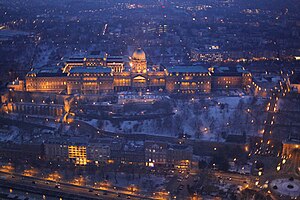
- Budapest , including the Banks of the Danube, the Buda Castle Quarter and Andrássy Avenue
- Old Village of Hollókő and its Surroundings
- Caves of Aggtelek National Park — beautiful caves with dripstones and stalagmites
- Millenary Benedictine Abbey of Pannonhalma and its Natural Environment
- Hortobágy National Park - the Puszta
- Early Christian Necropolis of Pécs (Sopianae)
- Fertő Lake Cultural Landscape common place with Austria more see there.
- Tokaj and Villány Wine Regions and Historic Cultural Landscapes
Other major tourist destination is Lake Balaton , with winehills, thermal spa in Hévíz , Hajdúszoboszló and Harkány around. Sopron is one of the most popular place for a sightseeing in the region.
There are also some amazing things to see.
- Tiszavirágzás . In mid-June the Tisza produces swarms of mayflies which are likened to flowers. Once decimated by pollution, the population is rebounding. (They're famous for living only for 1–2 days.)
- Busójárás . In February the people chase away bad ghosts by loud clamping on streets of Mohács .
Do [ edit ]
- Birdwatching: Hungary has wooded hills, vast fish-pond systems and grasslands, the puszta . Particularly good areas are the Kiskunsag and Hortobagy National Parks and the Aggtelek, Bukk and Zemplen Hills.
- Horse riding: Vast areas of open countryside coupled with the long traditions of horsemanship make Hungary an ideal country for riding. Wide open plains in the south and forested hills in the north offer varied riding terrain.
- Baths: Thermal waters abound in Hungary, with over 1000 thermal springs many of which have been turned into baths and spas. The most famous are the Szechenyi baths in Budapest , but there are hundreds more. The cave baths at Miskolc-Tapolca and the spa at Egerszalók are good examples. See also Budapest#Baths , Nyíregyháza#Do , and a selected list of authorized medicinal waters.
- Football: 12 teams play soccer in the country's top tier, Nemzeti Bajnokság I or NB1; four of them are based in Budapest. The national team play home games at Puskás Aréna in Budapest, completed in 2019.
- Cycling: the premier race is the Tour de Hongrie held over four days in May.
Buy [ edit ]
Money [ edit ].

The Hungarian currency is the forint , denoted by the symbol " Ft " (ISO code: HUF ). Notes come in denominations of 500, 1,000, 2,000, 5,000, 10,000 and 20,000 forint; coins are available in denominations of 5, 10, 20, 50, 100 two-coloured, similar to €2) and 200 (two-coloured, similar to €1) forint.
Euros are now accepted at most hotels and some of the restaurants and shops. Make sure you check the exchange rate, sometimes even well known places (like McDonald's) will exchange at unrealistic rates. Forints are to disappear in the coming years in favour of the euro, but no date has been fixed.
You can use major credit cards (EuroCard, Visa) in major shops and larger restaurants, but never expect that without checking first. Small places cannot afford to handle cards. ATMs are available even in small cities, the coverage is good. In Budapest, almost all businesses and services relevant to tourists support card payments.
While completing any monetary transactions, it is best to pay in forint when you can. Some restaurants and hotels charge a steep rate for exchanging euros and often due to the fluctuation in forint, cost and services stated may vary drastically.
Money exchange [ edit ]
Shopping in Hungary is extremely cheap for people from the euro zone and the US. An exception to this rule is that luxury goods are often at higher prices than would be encountered in Western Europe or the US.
Exchange rates for euros and US dollars are roughly the same within central (at least in Budapest and Eger ). Rates will likely be much worse in airports and large train stations, so only change what you need to reach the city centre. A good habit is to compare the buy and sell rates: if they are drastically different, you're best going somewhere else. Official exchange offices always give a receipt and normally have a large glass between client and a cashier making all steps transparent for clients.
Euros are very widely accepted, in hotels, in some splurge restaurants or bars, in some shop (like all SPAR super/hypermarkets, usually at the cashdesk area is a board with the actual rate), or international cash desk of course the rates five even ten percent worse than in the banks and be prepare the change they will get back in forint. Try using small notes (max. 50), at international cash desk even can pay also with coins and the rate is ok. Traded currencies at the two biggest Hungarian bank K&H Bank : AUD, CAD, CHF, CZK, DKK, EUR, GBP, JPY, NOK, PLN, SEK, USD; OTP Bank : same as K&H plus BGN, RUB and accepted Euro or Amex travellers cheques (comission). Smaller banks like Raiffeisen Bank [dead link] (for CZK), Oberbank [dead link] (for CHF) or Sberbank [dead link] (for RUB) giving better rates, but not change so many currencies (need to check as it is variable). For your remained forints buying euros, US dollars and Swiss francs always available, but others only when in stock. More unusual currencies, such as Israeli shekels, Hong Kong dollars, or Ukrainian hryvnia, can only be exchanged at money changers.
If you arrive in Hungary at weekends, holidays or evening banks are closed only ATMs or money changer shops or some hotels (mostly the biggers). ATMs and banks can be found in hypermarkets.
There are many ATMs in Budapest which will accept European and North American debit or credit cards. Be aware that "Euronet" ATMs have high charges in addition to any charges your own bank may apply, whereas ATMs operated by banks (e.g. OTP Bank, Raiffeisenbank) don't add extra charges.
Visitors report that unofficial money changers operating nearby an official money changing booth offer unfavourable rates, and recommend using the official exchange offices. Such exchangers are illegal and there is the possibility that you will receive other than Hungarian currency or nothing at all.
Tipping [ edit ]
Tips ( borravaló ) are given in Hungary for some services: in restaurants, in bars, to taxi drivers, to hairdressers, and often to people that fix things around the house, like plumbers and electricians.
Although not legally required, social norms encourage that tips are given. 10% is usually enough. Check your receipt before you pay, because some bars and restaurants charge a 10% service fee (szervizdíj), in this case tipping is not expected.
Shopping [ edit ]
Apart from classic tourist souvenirs such as postcards and trinkets, here are some things unique to Hungary or just hard to find elsewhere.
Hungarian foods [ edit ]

- Duck and goose liver
- Salamis - products of Hertz , Picks are the best, try Winter salami (Hu: Téliszalámi)
- Sweets Chocolates with fruit Brandy, Szamos Marzipan dessert, Praline with Truffle, szaloncukor, literally: "parlour candy", is a popular sweet at Christmas.
- Cold-smoked sausages - Mangalica and grey beef specials
- Herbal Teas
- Truffle Products - Honeys, Jams
- Spices : Paprika and Hungarian Saffron
- Gundel set of cheese : aged in Gundel wines or with walnut pieces or seasonings. Most easily found in 350 g sets of three kinds in duty-free of Ferihegy Airport in Budapest (at least in Terminal 2), but is likely available in Gundel 1894 Food & Wine Cellar (see Pest#Eat ). Keep in mind that shelf life for this cheese is only 2 months.
Hungarian beverages [ edit ]
- Wines : the vineries of Badacsony, Tokaj, Villány have the best products, but when purchasing wine beyond the right kind and vintage is also important the wine rack. The wrought iron with wine leaves is very showy, but if you are traveling by plane difficult to transport, so maybe a wood is more practical and you can buy a wide range of it. Other good names are: Somlói Juhfark, Egri Bikavér (see Liquor), Kadarka, red wine from Villány area etc.
- Pálinka : very famous and strong brandy made from fruits.
- Unicum : a herbal digestif liqueur.
Others [ edit ]

- Black pottery - part of the Transdanubian folk art
- Porcelain - look for high quality handmade Herend and Zsolnay products, usually sell them in set, simple candle holders are much cheaper and also popular
- Herend majolica at more affordable prices than the classic Herend.
- Hungarian Cuisine book (English, German, French, Spanish, Italian)
- 'matyó' patterned wooden spoons, ceramic of Sárospatak spoon holder
- Embroideries such as patterned of Kalocsa or Matyó.
- Blueprinted textiles mostly linen or cotton materials
- Diamonds in handmade white gold, platinum inlaid jewellery, try your luck at Szentendre the Europe’s largest diamond & jewellery centre
- Handicrafts and decorative arts works decorated with traditional, Hungarian folk motifs (letter-paper envelope sets, greeting cards, handkerchiefs, napkins, tablecloths, pillows, towels)
- The Rubik's cube originated in Hungary and was invented in 1974 by Erno Rubik and is one example of its longstanding gaming tradition.
Eat [ edit ]
Main courses in menu are normally 3000–5000 Ft in touristy places in Budapest, 2000–3000 Ft outside it, or in towns like Eger and Szentendre . A two-course lunch with a soft drink in Budapest typically costs 3000–10000 Ft per person, and half or third of that outside Budapest . A Chinese fast food menu is around 1500 Ft. (updated Jan 2023)
In restaurants, a service charge is frequently included into bill, 10% or even 12%, but this has to be clearly pointed out on the menu. If it's not mentioned, the place has no right to include a service charge in the bill.
Even if there's no service charge, unless the service was preposterous most Hungarians tend to leave a tip of 10% minimum. Unlike in most western countries, tip is usually not left on the table but rather the amount is specified to the waiting staff when you pay.
There were some places, mainly in the centre of Pest, that try to rip off drunk tourists at night by charging ridiculously high prices for drinks. Most of these places are closed now, but it's still a good idea to always check the prices before ordering.
Common in major cities and next to the highways are branches of major international chains such as KFC , McDonald's , Burger King [dead link] , Subway [dead link] , Pizza Hut and TGI Friday's last two just in Budapest.
Cuisine [ edit ]
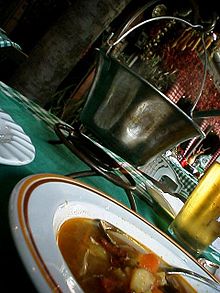
Hungarians are quite proud of their cuisine ( Magyar konyha ), and most of the time not without reason. Food is usually spicy, but not hot by general standards, and it's tasty rather than healthy: many dishes are prepared with lard or deep-fried. The national spice is paprika , made from ground sweet bell peppers.
Meat is popular, especially pork (sertés), beef (marha) and venison (őz). Less common are lamb and mutton. Chicken (csirke) and turkey (pulyka) are common, and you will also find game birds excellent in smarter restaurants and country areas: pheasant (fácán), partridge (fogoly) and duck (kacsa). Goose is also quite popular in Hungary. While tourists gorge on goose liver ( libamáj ), still cheap by Western standards, probably the most common dish is sült libacomb , roast goose leg . The best fish in Hungary are river fish: carp (ponty), zander (fogas/süllő) and catfish (harcsa), though many restaurants will serve fish from far away. Another typical Hungarian fish meal is roasted hake (sült hekk). Less well known in the rest of the world are csirke paprikás , chicken stew in paprika sauce, and halászlé , paprika fish soup often made from carp.
Stuffed ( töltött ) vegetables of all kinds are also popular, and Hungarian pancakes ( palacsinta ), both savoury and sweet, are a treat. Common snacks include kolbász , a Hungarianised version of the Polish kielbasa sausage, and lángos , deep-fried dough with a variety of toppings (mostly sour cream, cheese, or garlic).
A typical Hungarian meal will involve soup, often like a consommé (erőleves), meat with potatoes (burgonya) and a side salad, and a dessert such as pancakes (palacsinta). A meal is almost always, even at breakfast, accompanied by Hungarian pickles called savanyúság , literally "sourness". These are often dubbed saláta on menus, so order a vitamin saláta if you want fresh vegetables. Starch is most often served as potatoes, rice or dumplings ( galuska or nokedli ). The primary Hungarian contribution in this field is an unusual type of small couscous-like pasta called tarhonya .
It is worth visiting a "cukrászda" if you are in Hungary. These are very popular with delicious cakes and coffee. Try the traditional krémes (with vanilla cream), eszterházy (lots of nuts) or somlói galuska.
Another favourite is lángos , which is deep-fried bread served served with various fillings. The most common is plain, with salt, garlic (fokhagyma) and soured cream (tejföl). If you do come across a lángos stand, there are usually a large number of options from pizza lángos, or eggs with mayonnaise or Nutella and bananas.
Vegetarian food [ edit ]
Vegetarians and Vegans will have about as much ease eating out as in any other western country. Budapest is not a problem, as there is a wide variety of restaurants to choose from, but in an ordinary Hungarian restaurant the non-meat mains on the menu are pretty much limited to rántott sajt (fried cheese) and gombafejek rántva (fried mushrooms).
Italian food is popular, so as long as you don't mind a pasta heavy diet as a vegetarian you will find a wider choice.
For self-catering, the selection of fruits and vegetables from supermarkets or local shops and market is quite good, especially in summer.
There are plenty of vegetarian and vegan restaurants, and a lot of health food stores that offer all sorts of vegetarian/vegan products, including cosmetics.
Drink [ edit ]
Wine [ edit ].
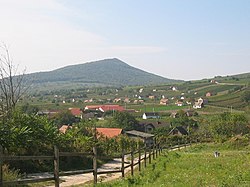
- Egri Bikavér (Bull's Blood of Eger) (1000 Ft for a good one) is a strong red Hungarian wine which supposedly saved a clever Hungarian girl from her fate with a Turkish sultan. During the time of the Turkish occupation, it is said a young girl was summoned to become a member of the local sultan's harem. Not wanting this fate for his daughter, her father gave her a bottle of Egri Bikavér to take to the sultan. He told her to tell the ruler it was bull's blood, and would make him invincible. The sultan, being Muslim, was unaccustomed to alcohol, and proceeded to pass out, leaving the daughter unharmed. There is another story connected to why Bull's Blood is called so, and it also comes from the Turkish era. According to that one, the defenders of the different castles used to drink this red wine. When they saw the color on the mouths of the Hungarians, they thought that it must have been from a bull, thus the name.
- Tokaj is known for its sweet dessert wines ( Tokaji aszú ), (2000–6000 Ft) which acquire their distinctive taste from grapes infected by the "noble rot" Botrytis cinerea . The favorite tipple of aristocracy, past fans of Tokaji include Louis XIV (who called Tokaj as " The king of the wines, the wine of the kings "), Beethoven, Napoleon III and Peter the Great — which is still reflected in the steep pricing of the best varieties. Almost uniquely among white wines, Tokaj keeps well for a long time.
If new to Hungarian wine, be aware that both champagne ("pezsgő") and wine, red or white, are quite likely to be sweet ("Édes" or "félédes"). If dry wine is your preference, look for the word "Száraz" on the label. When buying bottled wine, don't bother with types cheaper than 600–700 Ft, as these are usually very low quality (maybe not even produced from grapes). In wine cellars high quality may be available at surprisingly low prices.

Liquor [ edit ]
In Hungarian, pálinka denotes strong brandy-like liquor distilled from fruit. Pálinka is a very social drink: just as the English drink tea, the Hungarians, especially in rural areas, will offer pálinka to guests upon arrival. The best-known varieties are barackpálinka , made from apricots, körtepálinka from pears, and szilvapálinka made from plums. Factory-made pálinka is widely available, but keep an eye out for homemade házipálinka . Pálinkas usually contain around or above 50% of alcohol, often more for the homemade ones. Pálinka bottles marked mézes will be heavily sweetened with honey. (3000 Ft for something good)
Unicum is a strong digestif made from a secret mix of over 40 herbs. It comes in striking black bottles emblazoned with a red and white cross, and has a very strong and unusual taste. Unicum Next has a lighter, citrusy flavor, and is rather more palatable. Definitely worth trying, the spherical bottle (affectionately called "the Holy Hand Grenade") itself may also be used for decoration, and keeps very well for a long time. It is available in every bar in Hungary but it is rare to see someone drinking it.
Beer [ edit ]
Hungarian beer is quite average compared to other Central European countries like Germany and the Czech Republic as it has long been a wine culture. The most common beers are Dreher, Szalon, Borsodi, Soproni and Arany Ászok, available in the styles világos (lager) and barna (brown). All of Hungarian breweries are owned and managed by international brands such as: Dreher Sörgyár (Budapest); Heineken Hungaria (Sopron and Martfű); Heineken; Borsodi Sörgyár (Bőcs); Pécsi Sörfőzde (Pécs); Ottakinger. They cost 200–300 Ft at a store and 400–600 Ft at a bar. Some expensive club can charge up to 900 in Budapest.
Imported beers like Pilsner Urquell, Staropramen and Budweiser-Budvar (the original Czech variety) are widely available in bars and markets for not much more than the ubiquitous Hungarian brands.
When offering a toast with beer, be warned that most Hungarians will politely refuse. This is due to an old tradition due to remembering soldiers executed by the Habsburgs of Austria in the 1848 revolution, whereby it was decreed no Hungarian would toast with beer for 150 years. It's been so long, however, that most Hungarians no longer know the origins of this tradition or that they've been free to make toasts over beer for the past ten years.
Coffee [ edit ]
Cafe culture is widespread in Hungary, although it may never recover the romance of its turn-of-the-century intellectual heyday. Unless asked, it's a good idea to specify what kind of coffee you prefer. The word kávé means the strong, espresso-like coffee, although American-style coffee, known as hosszú kávé in Hungarian, usually translated as "long coffee", is also available at most places.
Tea [ edit ]
Tea houses are becoming popular in cities, especially among the young. There is a growing number of tea houses, mainly in Budapest and some bigger cities where people can buy several types of loose tea. The best teas are herbal and fruit varieties. In restaurants and cafes, lemon juice is frequently served in a small bottle. However, in traditional restaurants or cafes good teas are hard to find as coffee are preferred.
Sleep [ edit ]
Hostels [ edit ].
Very good rated hostels cost about €9–22 per night. The lower prices you usually get during week-days and in low season. (updated July 2022)
Farmhouses [ edit ]
Village Tourism is popular and very well developed in Hungary, and can be a remarkable experience. Start your research with 1Hungary [1] , National Federation of Rural and Agrotourism [2] [dead link] and Centre of Rural Tourism [3] . Near Budapest it is also possible to find rural houses to rent, for instance the Wild Grape Guesthouse [4] [dead link] , what makes a good combination to explore the capital and a National Park while staying at the same accommodation.
Camping [ edit ]
There are campgrounds available. See the city guides, including the Budapest guide.
Learn [ edit ]
Hungary is a country known for its rich academic tradition and cultural diversity, where education is highly valued. It boasts 13 Nobel laureates, numerous inventors, artists, and scientists, and is home to some of the oldest and most prestigious universities in Europe. Despite facing many historical challenges and transformations, Hungarians strongly believe in the power of knowledge to preserve their identity and sovereignty. This unwavering commitment to education and innovation has made Hungary a member of the European Union and a leader in several fields of science and technology.
Hungarian universities are open to all foreign students. Many European exchange students come through the EU's Erasmus program. There are quite a lot students from Asia and the Middle East as well, particularly because despite the high standard of education, fees are still considerably lower than in the more developed Western European countries. Those interested should visit Study in Hungary [5] or University of Debrecen [6] websites. Map of Hungarian universities and colleges [dead link] .
Work [ edit ]
It could be very difficult for an individual to seek legal employment in Hungary because of the complexity, cost and time involved. Most foreign workers in Hungary have received their visas and other necessary documents through the company they are employed by. It is hoped, however, that since the joining of Hungary to the EU a reduction will follow in the amount of red tape involved.
Citizens of Antigua and Barbuda are permitted to work in Hungary without the need to obtain a visa for the period of their 90 day visa-free stay. However, this ability to work visa-free does not necessarily extend to other Schengen countries.
Many students, usually on a gap year, work as second language teachers at one of Budapest's many language schools. A qualification is required (ESL/TEFL/TESOL) and experience is preferred.
One option is to teach through the Central European Teaching Program. For a placement fee they will take care of paperwork and set you up in a school in Hungary teaching English on a local salary. Contracts are for one semester or a whole school year. Qualified ESL/EFL teachers can find employment in Hungary at private language schools which offer better rates of pay and without having to pay a placement fee.
See also Work section in Budapest article .
Stay safe [ edit ]

Hungary in general is a very safe country. However, petty crime in particular remains a concern, just like in any other country.
Watch your bags and pockets on public transport. There is a danger of pickpockets . Passports, cash and credit cards are common targets of thieves. Keep items that you do not store in your hotel safe or residence in a safe place, but be aware that pockets, purses and backpacks are especially vulnerable, even if closed. There are also reported cases of people who got their baggage stolen while sleeping on the train.
Generally, Hungary is rather quiet during the night compared to other European countries, and crime to tourists is limited to pickpocketing, and cheating on prices and bills and taxi fares .
Everyone is required to carry their passport and ID card. Not doing so lead to trouble with the police. The police generally accept a colour copy of your passport.
The police force is professional and well trained, but most hardly speak any English.
See the Budapest travel guide for more specific and valuable information about common street scams and tourist traps in Hungary.
Despite the government's controversial rhetoric regarding immigration, most Hungarians are not racist or xenophobic, and Budapest does have a small yet vibrant immigrant community. With that said, you might to to avoid living in rural areas if you are not white.
Driving conditions [ edit ]
The majority of Hungarians drive dangerously and had 739 deaths on the roads in 2010. This is largely due to careless driving habits. Many drivers do not observe the speed limits and you should be extra careful on two-way roads where local drivers pass each other frequently and allow for less space than you may be used to.
Car seats are required for infants. Children under age 12 may not sit in the front seat. Seat belts are mandatory for everyone in the car. You may not turn right on a red light. The police issues tickets for traffic violations and issue on the spot fines. In practice the laws are widely ignored.
Also, Hungarian laws have zero tolerance to drink and drive, and the penalty is a severe fine. It means no alcoholic beverage is allowed to be consumed if driving, no blood alcohol of any level is acceptable. Failure to pay fines may result in your passport getting confiscated, or even a jail term until or unless you pay the fine.
More importantly, the police stops vehicles regularly for document checks. You shouldn't worry when you are stopped because by law, everyone needs to have their identification papers checked.
Hungary has some of the harshest penalties for those involved in a car accident. Involvement in a car accident results in a fine, and maybe a prison sentence from 1 year to 5 years (depending on the aggravating circumstances).
Stay healthy [ edit ]
Food and water is generally safe, even in remote villages. It is safe to drink tap water anywhere, even in remote areas, however, due to the cleaning process the taste of the water can be really unpleasant. Best idea is to try before changing to the bottled water. Bottled waters has a large selection, both the fizzy (blue bottle cap) and still (red/pink bottle cap) water and it is cheap (starts from less than 100 Ft for 1.5 litre). The only notable exception of the drinking water are trains where the tap water is not drinkable and other places where tap water is labeled as such.
It is widely available and good practice to have with you a bottle during hot summer.
Private health care providers are high quality, but limited in scope once outside Budapest. Dentistry is cheaper here than in Western Europe (8000–10,000 Ft for an appointment and x-ray), and physiotherapy also (3000 Ft for a half-hour treatment), but check the price with the provider before you confirm the appointment. Outside Budapest you will likely have to speak basic Hungarian to communicate your needs as few doctors will have any English or German skills.
Public health care is free for qualifying (insured) people, and is of adequate quality in urban areas.
The country has joined the EU, so basic coverage is present for EU citizens, but check before entering the country how far are you insured and what you have to pay for. Do not expect at this time that the local doctor will know the EU rules, prepare to provide info.
The European Health Insurance Card is required from EU citizens applying for free treatment under this regulation.
Pharmacies are everywhere, you may expect high prices, but good pharmaceutical coverage. Sadly the situation clearly has worsened a lot since early 2010, as many pharmacies can not maintain an adequate reserve of medicines. Another problem might be communicating with the pharmacist as most of them speak only Hungarian. Quite unexpectedly some rusty Latin might come handy. Due to reduced trade between Hungary and andania (as of Dec 2006), some of familiar medications are unavailable—so be prepared to find a substitute in advance.
Respect [ edit ]
General etiquette [ edit ].
Hungarians are generally straightforward communicators. They are quite comfortable with expressing their innermost thoughts and feelings openly, and you can expect them to tell you exactly what they think. Although their directness may come across as blunt, assertive, or even rude to some, it's important to understand that they are not trying to offend or hurt anyone's feelings. They simply believe in being truthful and straightforward in their interactions with others.
Hungarians believe in strong familial values and often live with extended family members who provide both financial and emotional support. Therefore, it is important to show respect for the elderly . Don't use first names unless you've been told to, and compose yourself in a mature fashion around someone older than you. On public transportation, it is obligatory to offer your seat to older people.
Talking loudly is generally considered rude. You will notice how most Hungarians tend to keep their voices down in public places.
When entering a home, shoes should generally be taken off.
Sensitive issues [ edit ]
- The 1956 Revolution continues to be a sensitive subject with many of the Hungarians, and anti-Russian sentiment is high due to the violent suppression of the uprising by the Soviet army. Even if you are the most ardent Russophile in the world, you should avoid saying anything positive about Russia as it could evoke strong feelings among locals.
- You are well advised not to discuss the Treaty of Trianon (1920) at all — the Hungarians can take it surprisingly sensitively.
- Open display of the Communist red star and hammer and sickle symbol, the Nazi swastika and SS symbols, and the Hungarian fascist Arrow Cross, is prohibited by law. Make sure your clothing does not have these symbols on it, even if it's just a joke. You can be fined for it.
- Members of the Roma community may find "Gypsy", or the traditional Hungarian label 'Cigány' (pronounced tzigan ) to be offensive.
- As a rural tradition, Hungarians affectionately refer to themselves as "dancing with tears in our eyes" ("sírva vígad a magyar"), as in a bittersweet resignation to the perceived bad luck in their long history. Avoid mocking Hungarian history and Hungarian patriotism.
National issues [ edit ]
Given Hungary's history of enduring turbulent events, the Hungarians exhibit sensitivity towards various historical occurrences. You should avoid discussing or bringing up the following topics as they can quickly unsettle people:
- Hungarian Revolution of 1956 — the Soviets arrested and killed thousands of Hungarians for revolting against the Hungarian People's Republic, leading to the exodus of nearly a quarter of a million Hungarians.
- Anything regarding the Hungarian People's Republic — thousands of Hungarians were arrested, imprisoned, tortured, exiled, and mistreated by the pro-Soviet communist government.
- Hungary's relationship with Russia — although relations have improved since the early 1990s, there is some antipathy and distrust towards Russia in some circles.
Uncommon customs [ edit ]
- It's an old tradition that Hungarians do not clink beer glasses or beer bottles. This is due to the legend that Austrians celebrated the execution of the 13 Hungarian Martyrs in 1849 by clinking their beer glasses, so Hungarians vowed not to clink with beer for 150 years. Obviously this time period has expired, but old habits die hard although less so by younger generations.
Connect [ edit ]
- Broadband Internet access is now widespread in Hungary. It's quite usual to find free Internet access (wifi) in Shopping centers; in Budapest, most cafes and pubs. You'll have wifi access even in small towns. Look for the "wifi" signs, you may have to ask for the access password, however, if you consume, it will be freely given.
Go next [ edit ]
The land border can be crossed to Austria , Slovenia , Croatia , Serbia , Romania , Ukraine and Slovakia .
- Has custom banner
- Has map markers
- Articles with dead external links
- Go listing with no coordinates
- Eat listing with no coordinates
- Has Geo parameter
- Central Europe
- All destination articles
- Outline countries
- Outline articles
- Country articles
- Pages with maps
Navigation menu
Map of Budapest — Best attractions, restaurants, and transportation info
What’s on this map.
We’ve made the ultimate tourist map of Budapest, Hungary for travelers! Check out Budapest’s top things to do, attractions, restaurants, and major transportation hubs all in one interactive map.
Visiting Budapest? See our Budapest Trip Planner.
How to use the map
Use this interactive map to plan your trip before and while in Budapest. Learn about each place by clicking it on the map or read more in the article below. Here’s more ways to perfect your trip using our Budapest map:
- Explore the best restaurants, shopping, and things to do in Budapest by categories
- Get directions in Google Maps to each place
- Export all places to save to your Google Maps
- Plan your travels by turning on metro and bus lines
- Create a Wanderlog trip plan (link to create a trip plan for the city) that keep all the places on the map in your phone
- Print a physical map to bring it on your trip

Top 20 attractions in Budapest
Fisherman's bastion, st. stephen's basilica.
Navigate forward to interact with the calendar and select a date. Press the question mark key to get the keyboard shortcuts for changing dates.
Navigate backward to interact with the calendar and select a date. Press the question mark key to get the keyboard shortcuts for changing dates.

Matthias Church
Hungarian parliament building, heroes' square.

Track your travel spending and split costs with friends
Plan your trip. Keep your budget organized. Split the cost between tripmates. Wanderlog does it all.

Széchenyi Chain Bridge
Buda castle, hungarian national gallery, müpa budapest, hungarian state opera, shoes on the danube bank, budapest castle hill funicular, four seasons hotel gresham palace budapest, andrássy út, hungarian national museum.
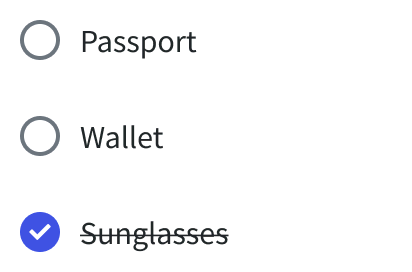
Don’t forget to pack anything
Stay organized with a to-do list, packing list, shopping list, any kind of list.

Budapest History Museum / Castle Museum
House of terror, széchenyi thermal bath, dohány street synagogue, top 10 restaurants in budapest, borkonyha winekitchen.

Rosenstein Vendéglő
Babel budapest.

Café Gerbeaud
Két szerecsen, menza étterem és kávéház, kádár étkezde, stand étterem, transportation in budapest, nearby airports, budapest ferenc liszt international airport, highways and major roads.
- M1/E60 Motorway
- M3/E71 Motorway
- M5/E60 Motorway
- M6/E73 Motorway
- M7/E71 Motorway
- M9/E71 Motorway
- Körút (Grand Boulevard)
- Andrássy Avenue
- Rákóczi Avenue
- Budaörsi Street.
Top searches in Budapest
Popular road trips from budapest, what's the weather like in budapest.
It depends on when you visit! We've compiled data from NASA on what the weather is like in Budapest for each month of the year: see the links below for more information.
- Weather in Budapest in January
- Weather in Budapest in February
- Weather in Budapest in March
- Weather in Budapest in April
- Weather in Budapest in May
- Weather in Budapest in June
- Weather in Budapest in July
- Weather in Budapest in August
- Weather in Budapest in September
- Weather in Budapest in October
- Weather in Budapest in November
- Weather in Budapest in December
All road trips from Budapest
- Budapest to Vienna drive
- Budapest to Rome drive
- Budapest to Prague drive
- Budapest to London drive
- Budapest to Paris drive
- Budapest to Berlin drive
- Budapest to Barcelona drive
- Budapest to Venice drive
- Budapest to Florence drive
- Budapest to Amsterdam drive
- Budapest to Milan drive
- Budapest to Istanbul drive
- Budapest to Munich drive
- Budapest to Bratislava drive
- Budapest to Krakow drive
- Budapest to Madrid drive
- Budapest to Edinburgh drive
- Budapest to Dublin drive
- Budapest to Copenhagen drive
- Budapest to Athens drive
- Budapest to Salzburg drive
- Budapest to Brussels drive
- Budapest to Turin drive
- Budapest to Naples drive
- Budapest to Moscow drive
- Budapest to Dubrovnik drive
- Budapest to Warsaw drive
- Budapest to St. Petersburg drive
- Budapest to Zagreb drive
Explore nearby places
- Torokbalint
- Pilisborosjeno
- Halasztelek
- Szigetszentmiklos
- Szazhalombatta
- Dunavarsany
- Pilisszentkereszt
All related maps of Budapest
- Map of Budaors
- Map of Budakeszi
- Map of Diosd
- Map of Torokbalint
- Map of Pilisborosjeno
- Map of Solymar
- Map of Budakalasz
- Map of Halasztelek
- Map of Szigetszentmiklos
- Map of Biatorbagy
- Map of Dunakeszi
- Map of Pomaz
- Map of Paty
- Map of Csobanka
- Map of Mogyorod
- Map of Gyal
- Map of Vecses
- Map of Szentendre
- Map of Budajeno
- Map of Tokol
- Map of Szazhalombatta
- Map of Pecel
- Map of Piliscsaba
- Map of Etyek
- Map of Dunavarsany
- Map of Perbal
- Map of Maglod
- Map of Pilisszentkereszt
Budapest throughout the year
- Budapest in January
- Budapest in February
- Budapest in March
- Budapest in April
- Budapest in May
- Budapest in June
- Budapest in July
- Budapest in August
- Budapest in September
- Budapest in October
- Budapest in November
- Budapest in December
Looking for day-by-day itineraries in Budapest?
Get inspired for your trip to Budapest with our curated itineraries that are jam-packed with popular attractions everyday! Check them out here:
- 1-Day Budapest Itinerary
- 2-Day Budapest Itinerary
- 3-Day Budapest Itinerary
- 4-Day Budapest Itinerary
- 5-Day Budapest Itinerary

- Itinerary + map in one view
- Live collaboration
- Auto-import hotels and reservations
- Optimize your route
- Offline access on mobile
- See time and distance between all your places

22 Top-Rated Tourist Attractions in Budapest
Written by Joni Sweet and Bryan Dearsley Updated Dec 28, 2023 We may earn a commission from affiliate links ( )
Budapest, the capital of Hungary, is considered by many to be the "Paris of the East." Not only is this beautiful city one of the most culturally important metropolises in Eastern Europe, it's also home to numerous UNESCO World Heritage Sites .
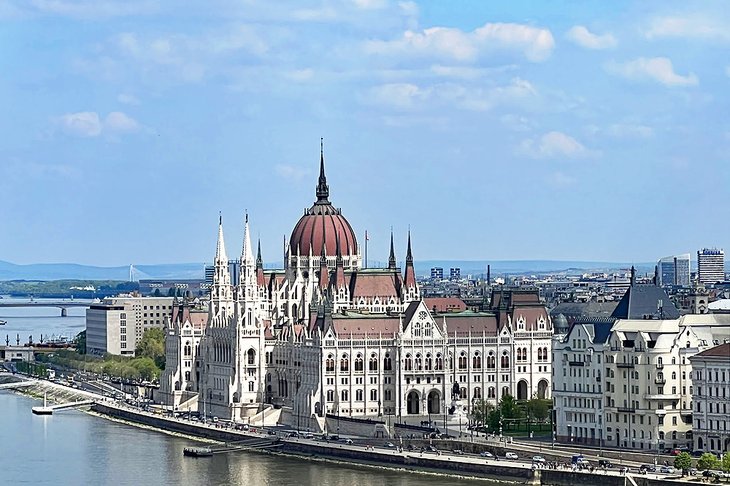
Straddling the River Danube , Budapest is famous for its thermal springs , some of which have been used for therapeutic purposes since prehistory. In fact, Budapest has so many things to do that you'll want to spend at least a few days exploring this dynamic city. Popular attractions range from impressive architecture and poignant reminders of 20th-century history to its vibrant cultural and entertainment scene, with everything from street buskers to classical concerts in beautiful churches.
Budapest is also a shopper's paradise , from the traditional wares and foodstuffs available at the grand old Central Market Hall to Vaci Street, noted for its mix of luxury boutique stores and big brand names.
Whatever your sightseeing preferences, get the most out of your Hungary travel itinerary with our guide to the top tourist attractions in Budapest, Hungary.
1. Buda Castle & Castle Hill
2. hungarian parliament building & crown jewels, 3. st. stephen's basilica, 4. fisherman's bastion, 5. the danube promenade, 6. matthias church (church of our lady), 7. exploring gellért hill, 8. central market hall, 9. the museum of fine arts, 10. heroes' square and the millennium monument, 11. széchenyi thermal bath, 12. hungarian state opera house, 13. budapest zoo & botanical garden, 14. hospital in the rock nuclear bunker museum, 15. the university church, 16. hungarian national museum, 17. city park (városliget), 18. margaret island, 19. gellért spa, 20. labyrinth of buda castle, 21. ferris wheel of budapest, 22. the garden of philosophers, where to stay in budapest for sightseeing, tips and tours: how to make the most of your visit to budapest, map of tourist attractions in budapest, budapest, hungary - climate chart, more must-see destinations near budapest.
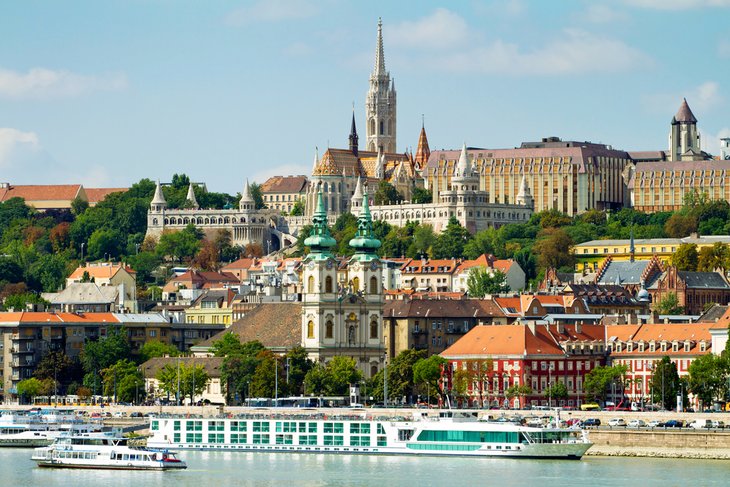
Towering over the Danube, Budapest's Castle Hill (Várhegy) contains many of the city's most important medieval monuments and museums. Topping the list of these impressive structures is the 18th-century Buda Castle (Budavári Palota), a massive 200-room palace that replaced a 13th-century castle built to protect the stronghold from Mongol and Tartar attacks.
Although badly damaged in World War II, much of the exterior has been restored, along with sections of the interior, which now houses a number of important museums. These include the Hungarian National Gallery in the main wing, while in the south wing, the Budapest History Museum occupies four floors.
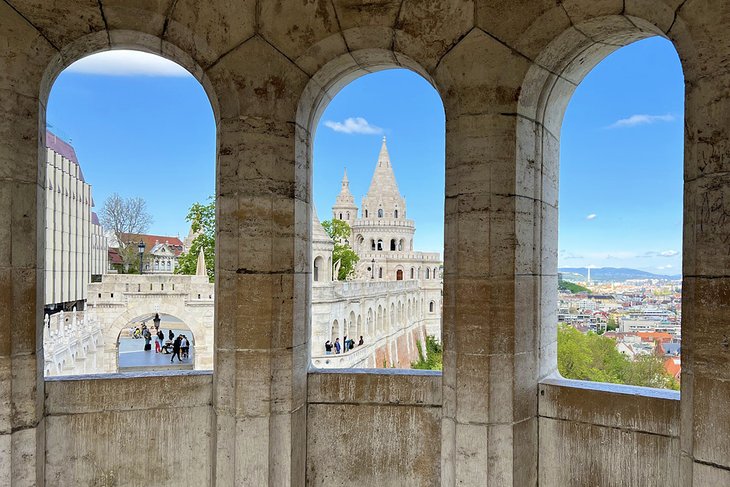
In front of the castle, overlooking the Danube, stands a bronze equestrian statue of Prince Eugene of Savoy, a hero of Turkish attacks on the city. Castle Hill is worth exploring for its medieval lanes and it Romanesque, Gothic, and Baroque architecture. This entire historic complex is a UNESCO World Heritage Site .
Like much of the city, Buda Castle is spectacularly illuminated at night, and the castle courtyards remain open 24 hours a day. You can reach the castle on the restored historic Castle Funicular Railway , which departs from the Buda end of the Chain Bridge.
Address: 1014 Budapest, Szent György tér 2
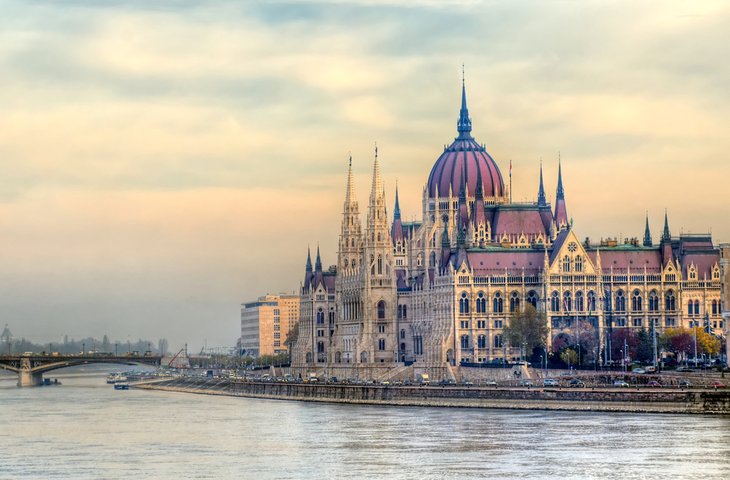
A highlight of a walk around Budapest's lovely pedestrian-friendly cobbled streets is the area around the country's architecturally pleasing Parliament building (Országház). Along with its neighbors, the Museum of Ethnography and the Ministry of Agriculture, it's perhaps one of the city's most attractive quarters architecturally.
The world's third largest parliament building, this Neo-Gothic building was inaugurated in 1886 to mark the country's 1,000th anniversary. (Hungary was then part of the Austro-Hungarian Empire.) This impressive structure boasts 691 rooms, as well as an impressive 19 kilometers of corridors and stairs.
Guided tours last approximately 45 minutes and are available whenever the government is not sitting, and include many of the building's highlights, such as the main entrance hall, various lobbies, and the Hungarian Crown Jewels. Most tickets sell out a week in advance, so make your reservations as early as possible.
Address: 1055 Budapest, Kossuth Lajos tér 1-3
Official site: http://hungarianparliament.com/tours/
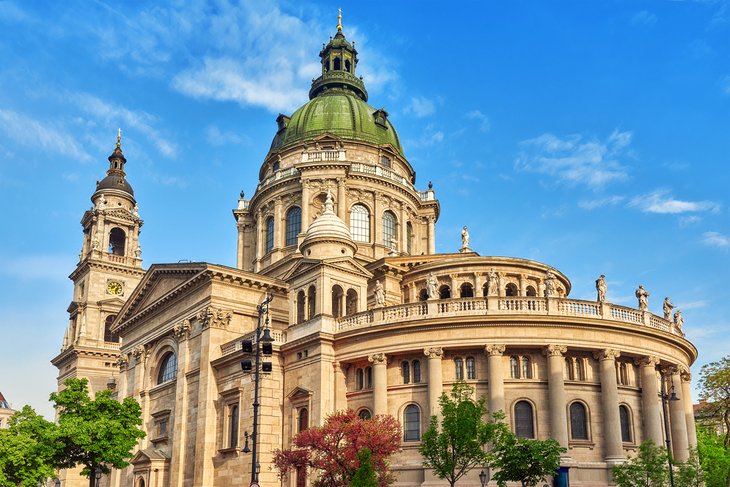
Budapest's St. Stephen's Basilica (Szent István-bazilika) is a popular attraction for its impressive architecture, the beauty of its interior, and the panoramic views from its dome. The cathedral is dedicated to St. Stephen, Hungary's holy king and the founder of the Hungarian state, and construction began in 1851, but after several construction setbacks—including the collapse of its unfinished dome—it was not dedicated until 1905.
The roof, towers, and external walls were badly damaged in World War II, and the church's precious mosaics fell from the walls. However, these were successfully restored to their original place and are the highlight of the richly decorated interior. The most impressive of these, the five-part Venetian mosaic is in the sanctuary and represents the allegories of the mass.
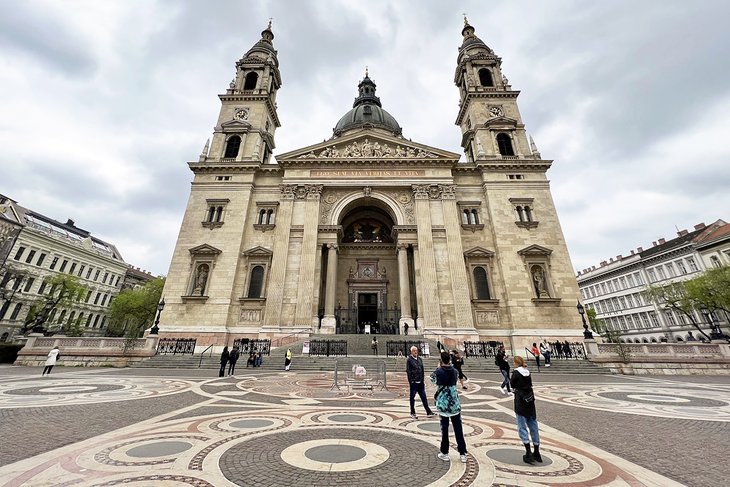
The cathedral's most precious holy relic, the mummified right hand of the church's patron saint, the first king of Hungary, is displayed under glass in the chapel to the left of the high altar.
One of the best things to do here, if time permits, is to take one of the two elevators that carry visitors up to the cupola for sweeping 360-degree views over the city and the Danube (alternatively, you can climb the 364 steps). Guided tours of the basilica are available on weekdays. Also, be sure to check the cathedral's website for details of one of its frequent organ and classical music concerts .
Address: 1051 Budapest, Szent István tér
Official site: http://en.bazilika.biz/
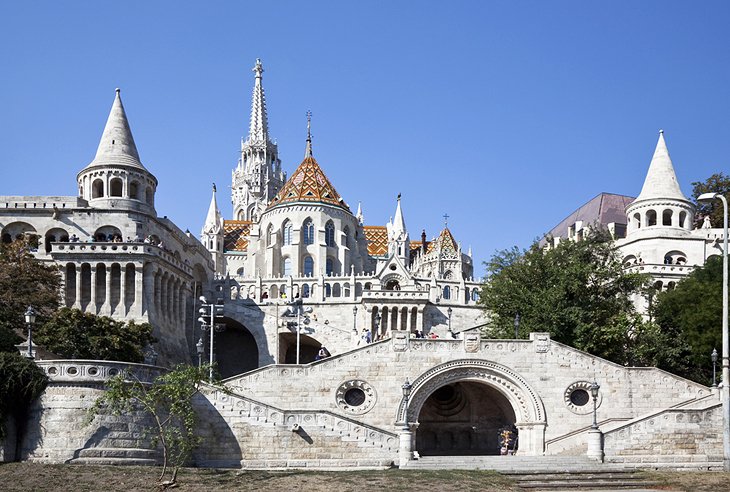
Overlooking the Danube, on the spot where the city's fishermen's guild built their defence walls in the Middle Ages, stands the impressive Fisherman's Bastion (Halászbástya). This exquisite collection of Neo-Romanesque towers, courtyards, colonnades, and walls was built between 1895 and 1902, and is one of the most popular points in the city for tourists, largely for its spectacular views over the city and the Danube.
While here, be sure to look for the bronze equestrian statue of St. Stephen, the first King of Hungary, in the south courtyard. The reliefs on the sides of the base depict scenes from Stephen's life, and make for an incredible selfie backdrop.
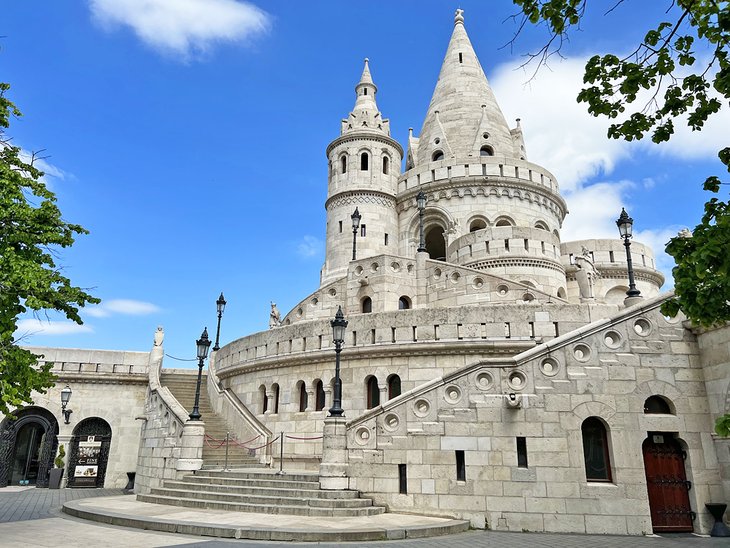
For more great photo ops , head to the upper towers or turrets. There's a small entry fee, but it helps reduce crowding on that part of the attraction.
Address: Szentháromság tér 5, Budapest
Official site: www.fishermansbastion.com
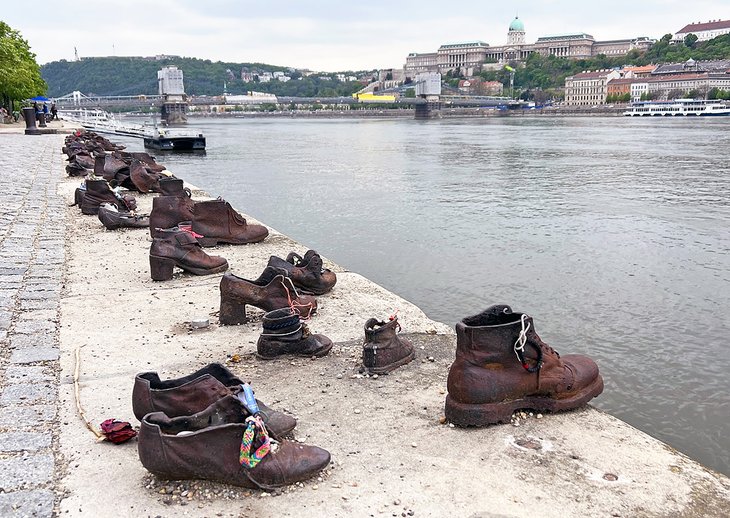
The Danube (or "Duna" in Hungarian) flows through Budapest from north to south, and in some places within city boundaries is as much as 640 meters wide. One of the top free things to do in Budapest is strolling along the Danube Promenade (Dunakorzó), a pleasant century-old riverside walk that extends between the Elisabeth and Széchenyi Chain Bridges.
Although there are many places from which to enjoy views of the majestic river as you stroll its banks (either the Buda or Pest sides, they're both good), the Danube Promenade is definitely one of the best vantage points to take in views of the city's stunning architecture.
It's also on the banks of the Danube (the northeast side, close to the Hungarian Parliament buildings) that you'll find the chilling Shoes on the Danube Bank memorial. It consists of a series of 60 pairs of steel sculpted shoes memorializing Jews shot here by the Nazis, and is a poignant and moving reminder of the Nazi atrocities suffered by Hungary in World War II.
Another great way to view the city is via a boat cruise along the Danube . Numerous tourist excursions depart regularly from the landing stages at Vigadó tér on the Pest bank and Bem József tér on the Buda bank, and are highly recommended. It's also fun watching these sturdy vessels from the historic Freedom Bridge as they whip down river only to have to struggle back against the current.
Alternatively, you could enjoy incredible views on a budget by taking a ride on the number 2 tram . Skirting the eastern bank of the Danube, it's considered to be one of the most beautiful tram lines in the world .
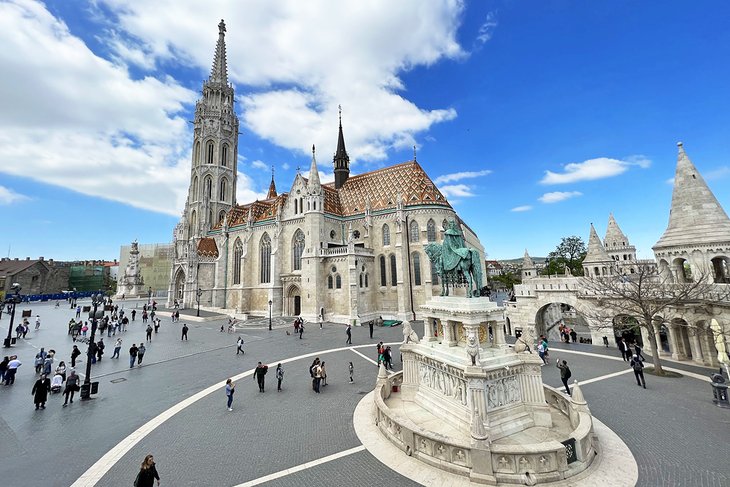
Matthias Church, also known as The Church of Our Lady (Nagyboldogasszony-templom), is a prominent landmark on Castle Hill. It was completed in 1269, and its magnificent south doorway with its relief depicting the Death of Mary was added in the 1300s.
During the Turkish occupation of 1541-1699, the church was used as a mosque, and was later renovated in the Baroque style. It has been the scene of several historic events, including the coronation of King Charles I of Hungary in 1309 and the coronation of Emperor Franz Joseph I of Austria and his consort Elisabeth (Sissy) as rulers of Hungary. It was for this event that Franz Liszt composed his coronation mass.
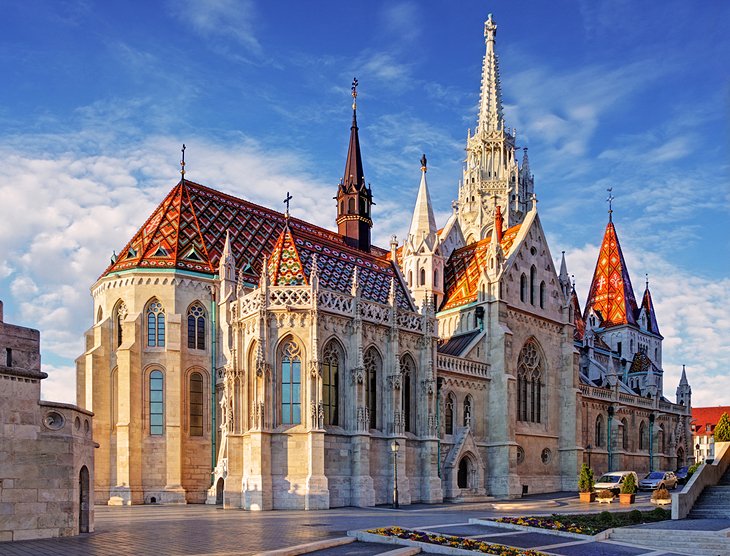
The free organ concerts held here on some Sunday evenings are well worth attending (check the website for specific dates).
Also worth checking out, the Ecclesiastical Art Museum is located on the church's medieval crypt and features a collection of sacred relics, stone carvings, and replicas of the Hungarian crown jewels.
Address: Szentháromság tér 2, Budapest
Official site: https://matyas-templom.hu/home
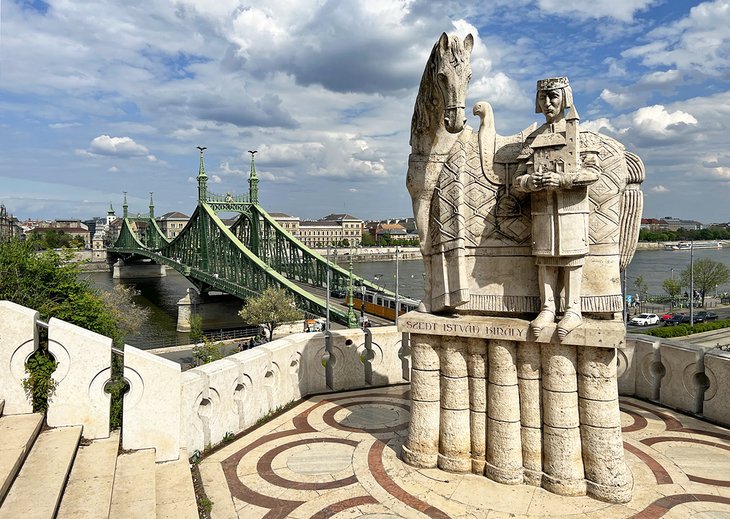
Another of Budapest's most striking features is the panoramic Gellért Hill (Gellért-hegy), a 235-meter block of dolomite that falls steeply down to the Danube. It's here along the hill's geological fault line that several of the city's most famous medicinal springs emerge to supply the Gellért Spa and Rudas Baths , which have lured visitors from far and wide since the 13th century.
The Rudas Baths are one of a handful of buildings remaining from the Turkish occupation, and are among the few original Turkish bathhouses in the world still in use that date back to the 1600s.
On the hill's northeast slope is the Gellért Monument , a tribute to Hungary's beloved famous saint, a Benedictine monk who died in 1046 and after whom the hill is named. Perched high above a man-made waterfall, it offers magnificent views over the city. The Citadel on the summit was built by the Austrians in 1851, and the Liberation Monument was erected in 1947 in memory of the Soviet soldiers who died fighting in WWII.
Finally, if you have energy left, take a stroll around Jubilee Park . Laid out to celebrate the 40th anniversary of the October Revolution, it's home to many charming walkways, beautiful flowerbeds, and sculptures.
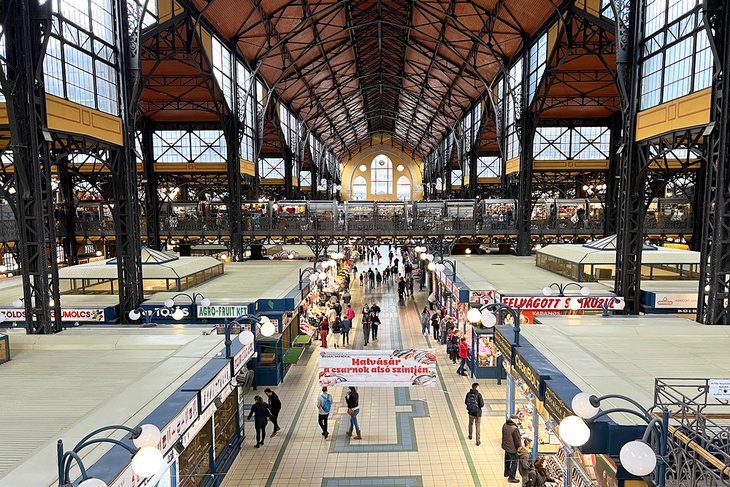
Located just across the Freedom Bridge from the Gellért Spa is Budapest's Central Market Hall (Nagyvásárcsarnok), also known as the Great Market Hall. You can't miss it for its central location and its roof of colorful Zsolnay tiles from the town of Pécs.
Built in 1897 and the largest and oldest of Budapest's many markets, it's as interesting to view from the inside as it is on the outside – particularly if you enjoy people watching. As cavernous as any major rail terminal in Europe, this popular indoor marketplace encompasses an area of over 10,000 square meters and is as popular with the locals as it is with tourists, here for the abundance of fresh produce, food stuffs, and other goods being traded across its many levels.
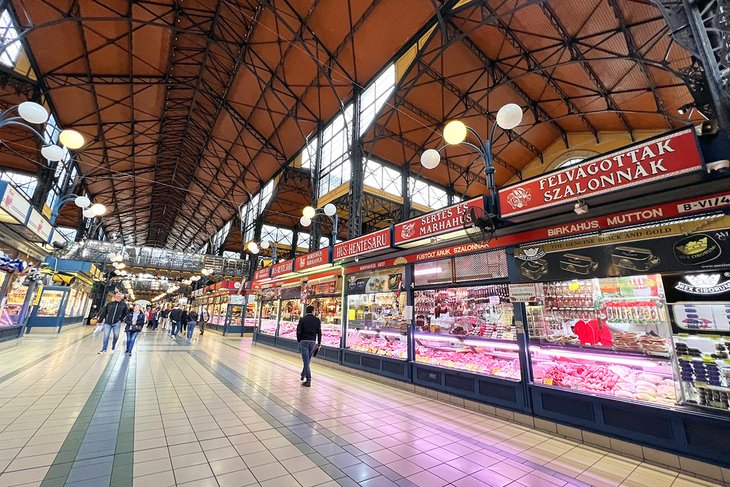
Feeling peckish? Grab a bite to eat from one of the vendors on the second mezzanine level, or a pastry and coffee on the go as you continue to explore. There, you can try typical Hungarian street food, like lángos, a delicious deep-fried dough smothered in sour cream, cheese, and your choice of veggie and meat toppings.
While Saturdays are naturally the busiest days at the market (it's closed on Sundays), you can avoid the larger crowds with a weekday visit. If you're an early riser, get here for early morning; it opens at 6am, when it's fun watching the vendors setting up and prepping their produce for sale.
Address: Budapest, Vámház krt. 1-3, 1093 Hungary
Official site: https://piaconline.hu/en/central-market-hall/
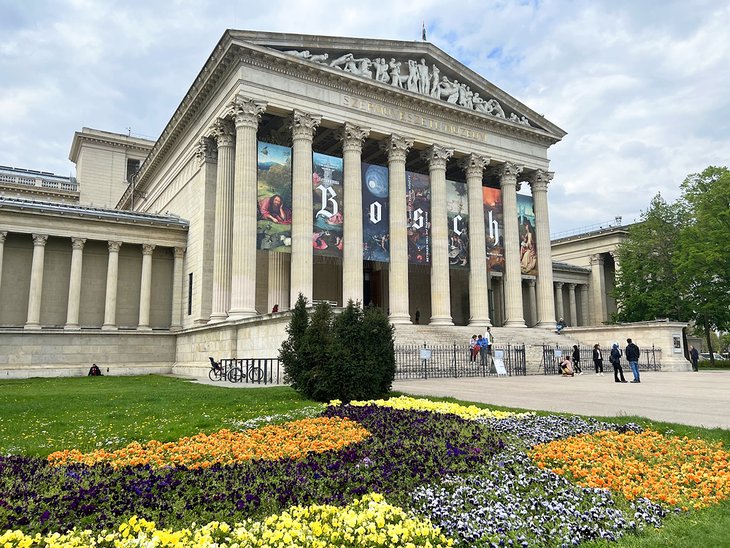
The Museum of Fine Arts (Szépmuvészeti Múzeum) is not only Budapest's most important art gallery, it houses one of the largest collections of works by the Old Masters to be found in Europe.
The extensive array of Italian, Spanish, and Dutch paintings are on display in a spectacular, classically influenced 19th century building with long rooms for the larger paintings, cabinets for smaller and more intimate items, together with architecturally interesting space such as the Renaissance Hall.
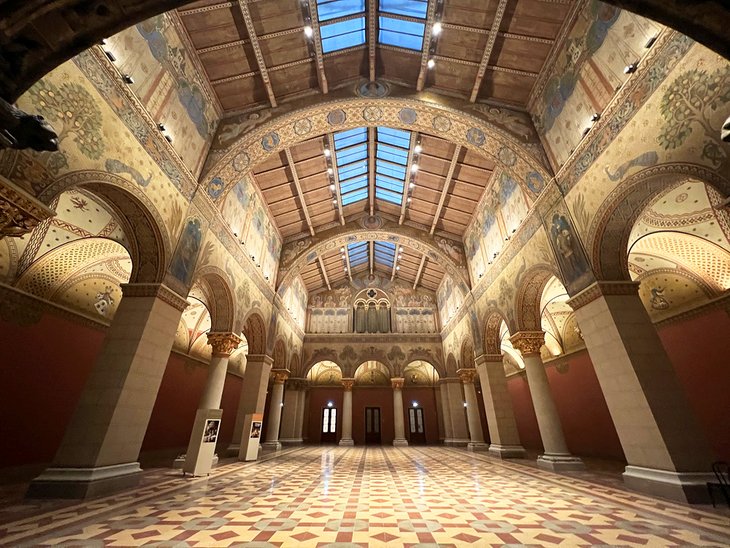
Established in 1870 after Hungary inherited a fine collection of paintings, drawings, and prints, the museum is divided into six excellent departments: Egyptian Art, Ancient Art, the Old Sculpture Gallery, the Old Painter Gallery, the Modern Collection, and the Graphics Collection.
The adjacent Palace of Art is the city's leading contemporary art museum and hosts many temporary exhibits, so be sure to check for current offerings. (Note that this is not to be confused with the Palace of Arts, a high-tech arts center that houses the Ludwig Museum , a contemporary art collection with works by Picasso, David Hockney and numerous Hungarian Masters.)
Address: 1146 Budapest, Dózsa György út 41
Official site: www.szepmuveszeti.hu/main
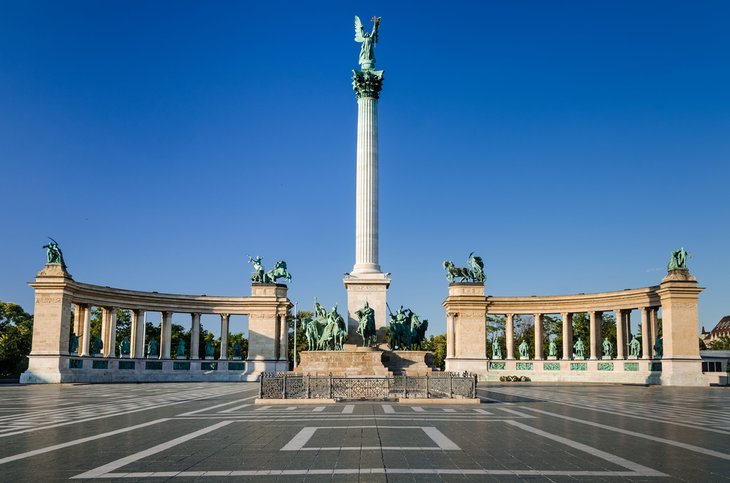
The impressive Heroes' Square (Hosök tere) was largely the work of architect Albert Schickedanz, who was also responsible for the huge Museum of Fine Arts that flanks this large open space.
Highlights include the Millennium Monument, a 36-meter column crowned by a figure of the Archangel Gabriel and unveiled in the late 19th century. Around the plinth can be seen a group of bronze horsemen representing the conquering Magyar Prince Árpád and six of his fellow warriors.
On either side of the column, colonnades extend in a semi-circle, and between the individual pillars stand statues of Hungarian rulers. Above the corner pillars are beautiful works in bronze by Zala.
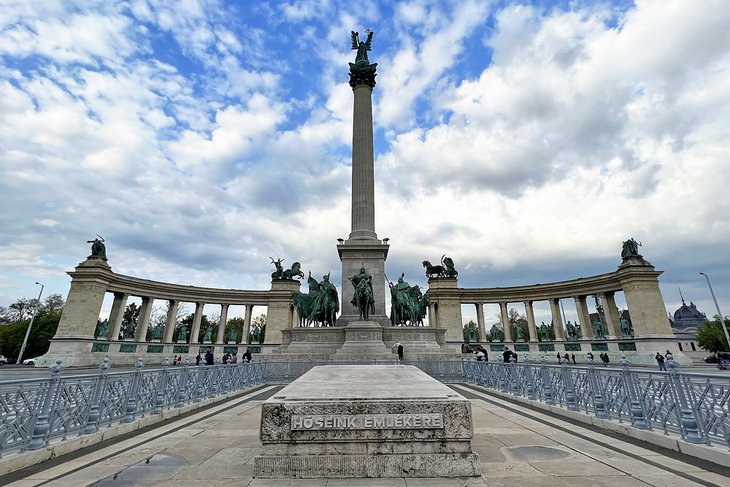
In front of the Millennium Monument stands a memorial to the Unknown Soldier. It's an especially nice place to visit at night when illuminated.
Address: Budapest, Hosök tere, 1146
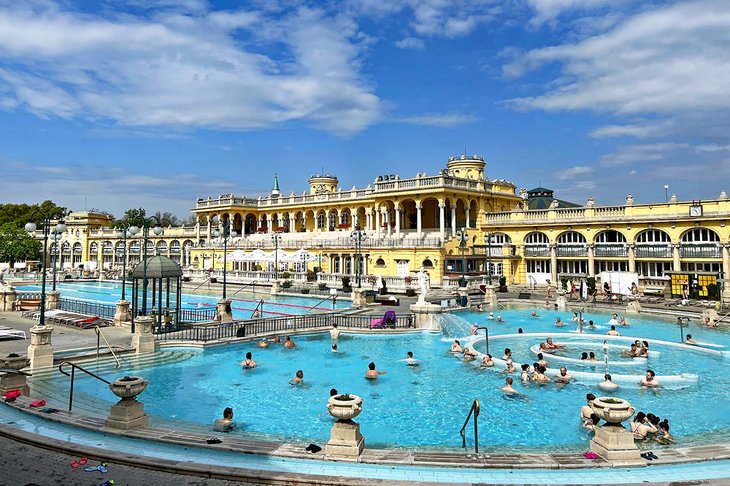
Budapest is well-known worldwide for its incredible thermal springs, many of which have been harnessed to provide citizens, as well as visiting tourists, the opportunity to relax and rejuvenate in thermal baths.
Of the many such attractions Budapest, the best known is Széchenyi Thermal Bath (Széchenyi gyógyfürdo). Established in 1913, it's supplied by two thermal springs; it's also the biggest such facility in Europe, capable of handling thousands of bathers at a time in its three outdoor pools (including an adventure pool that's great for families) and 15 indoor pools.
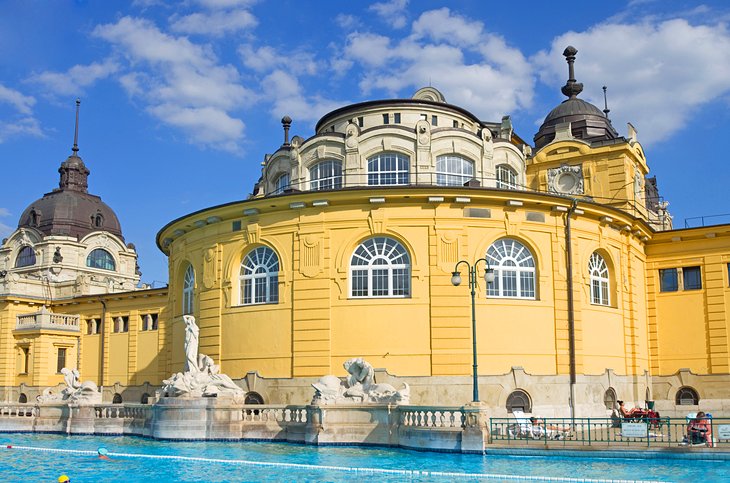
In addition to its pools, guests can enjoy its saunas and steam rooms, as well as spa services including massages. For a special treat, pay a visit to the baths after nightfall. Day tickets, which include use of a locker, can be purchased online, or upon arrival. Don't forget to bring your bathing suit, a towel, and flip-flops!
Address: Budapest, Állatkerti krt. 9-11, 1146
Official site: www.szechenyibath.hu
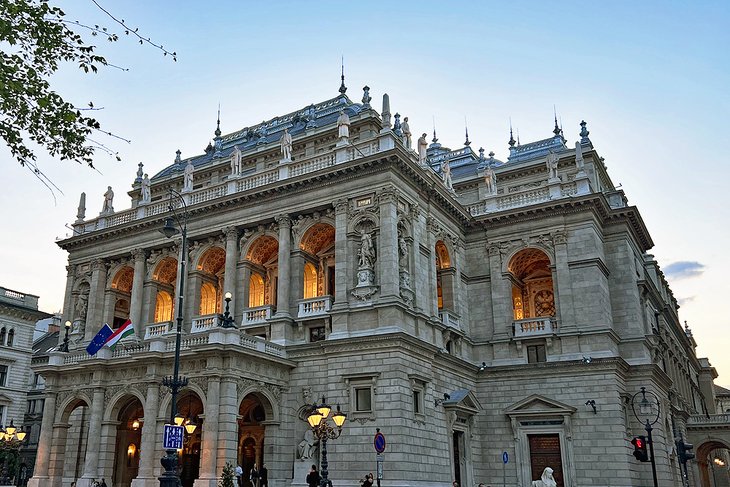
As impressive inside as it is on the outside, the Hungarian State Opera House (Magyar Állami Operaház) is a must-see when in Budapest. The building's dimensions alone are impressive, and since it opened in 1884, it has commanded top spot on the city's cultural events calendar.
As delightful as its many performances (more on that in a minute) is the sumptuous interior of the building. Festooned with wonderful artwork and sculptures from the country's most significant artists, the Opera House can seat up to 1,300 people in its horseshoe-shaped (and acoustically pleasing) auditorium.
The Hungarian State Opera House is home to the Budapest Philharmonic Orchestra and the Hungarian National Ballet , and you'd certainly find attending a performance a crowning moment in your Budapest travel itinerary. The orchestra's season typically runs from September to June, and tickets can be purchased online. Daily guided English-language tours are also available.
Address: Budapest, Andrássy út 22, 1061
Official site: www.opera.hu/?lan=en
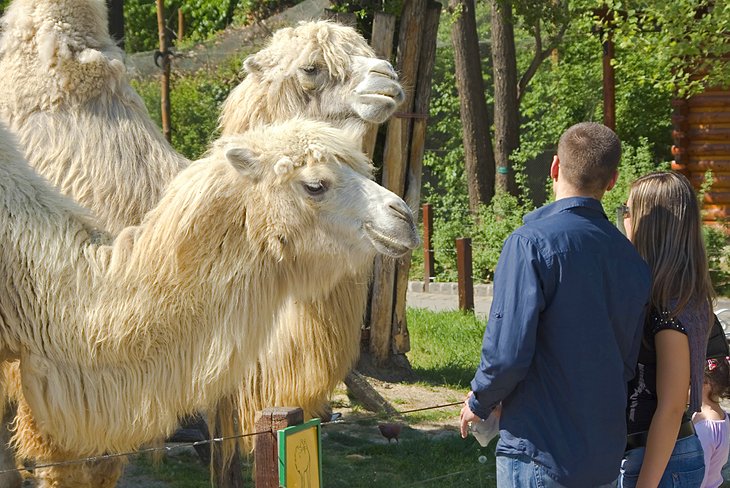
Said to be one of the world's oldest still-operating zoos , Budapest Zoo & Botanical Garden (Fovárosi Állat- és Növénykert) is one of the top things for families to do when visiting the city. Established over 150 years ago, the park is home to over 1,070 different species of animals, and has the rare distinction of being located in the heart of its host city, just around the corner from the Museum of Fine Arts.
In addition to its well-preserved Art Nouveau animal homes , this top-notch zoo park features a nature reserve, themed animal enclosures, and a variety of kid-friendly programming including feeding opportunities. If you're not in a big hurry to leave, hang around for one of the regular evening concerts.
Address: Budapest, Állatkerti krt. 6-12, 1146
Official site: https://zoobudapest.com/en
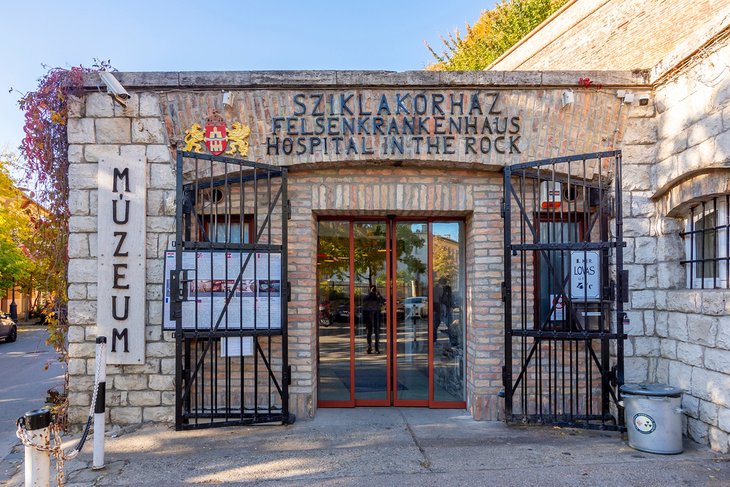
Underneath Castle Hill, the rock is a maze of caves and passageways that have been used for various purposes since prehistoric times. In World War II, some were fortified as an air raid shelter and emergency hospital. Now known as the Hospital in the Rock Nuclear Bunker Museum (Sziklakórház Atombunker Múzeum), this site was, at the time of the Cold War, further secured against nuclear contamination.
This former hospital and bunker is well worth exploring and features a variety of exhibitions on the kind of lifesaving efforts seen here during the Siege of Budapest in World War II. Another exhibit explores the devastating consequences of nuclear weapons. Admission is via guided tours only (English language tours available).
Address: Lovas 4/c, Budapest
Official site: www.sziklakorhaz.eu/en
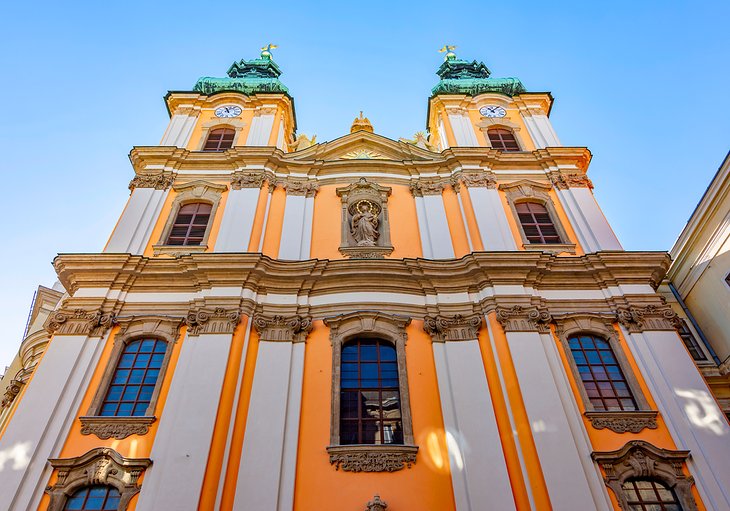
Budapest's University Church (Kisboldogasszony-templom) is widely regarded as the most beautiful Baroque church in the city. Although somewhat hidden—it stands in the south of Pest away from the main shopping streets—its main front faces onto a narrow side street, which scarcely does it justice.
Built between 1725-42 (the two mighty towers were not completed until 1771), the principal façade incorporates a triangular tympanum with representations of St. Paul and St. Anthony, as well as the arms of the Pauline Order (a palm between two lions and a raven).
The church has a single nave with pilasters and enclosed side-chapels, and its walls are clad in artificial marble. Highlights include the frescoes on the barrel-vaulted ceilings depicting scenes from the life of Mary (1776), the choir-stalls, and the sculptures of St. Paul and St. Anthony on the High Altar (1746). Also of note is the Pauline Monastery near the church.
Address: Budapest, Papnövelde u. 8, 1053
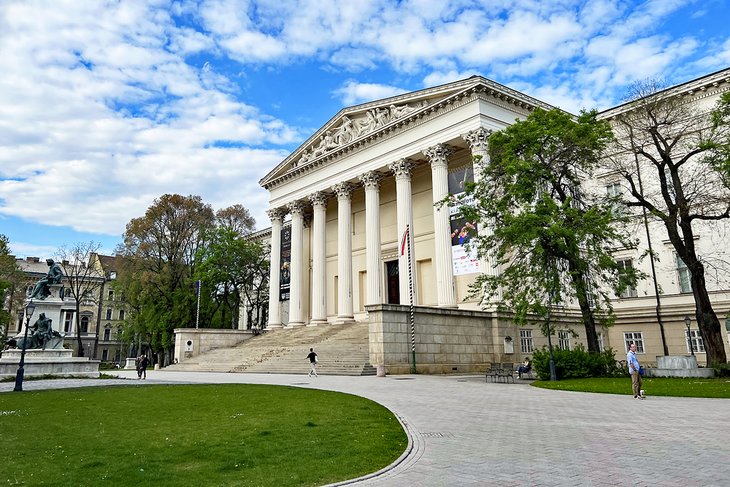
Although founded in 1802, the superb Hungarian National Museum (Magyar Nemzeti Múzeum) didn't move into its current home, a large classical building surrounding two courtyards, until 1847. In addition to its massive portico, a monument to the famous Hungarian poet János Arany impresses, as does its park-like gardens with their numerous busts of famous people.
Major exhibits comprise the Royal Regalia , including the magnificent Crown of St. Stephen with its precious stones and pearls, as well as Hungary's pre- and early history from the Stone Age through to Roman times and the early Middle Ages.
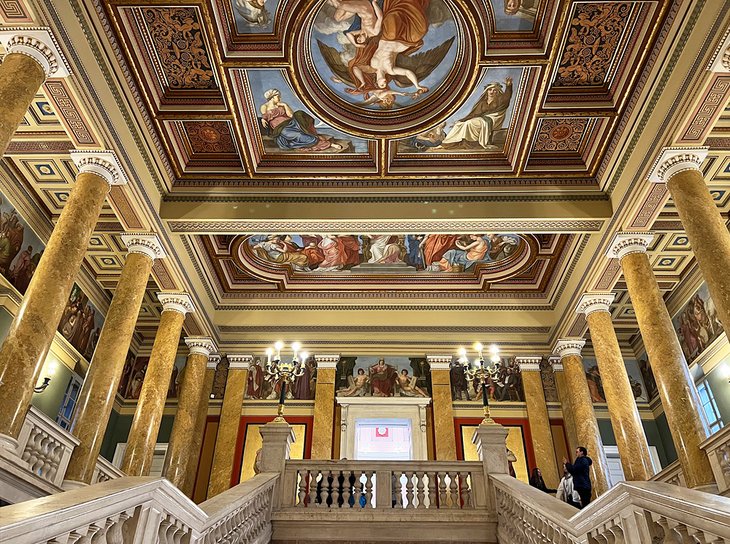
Also of interest are the exhibits and artifacts dealing with the country's many struggles for independence, as well as historic Hungarian and Turkish weapons.
For music buffs, Beethoven's grand piano, which later belonged to Franz Liszt, can be seen here.
Address: 1088 Budapest, Múzeum körút 14-16
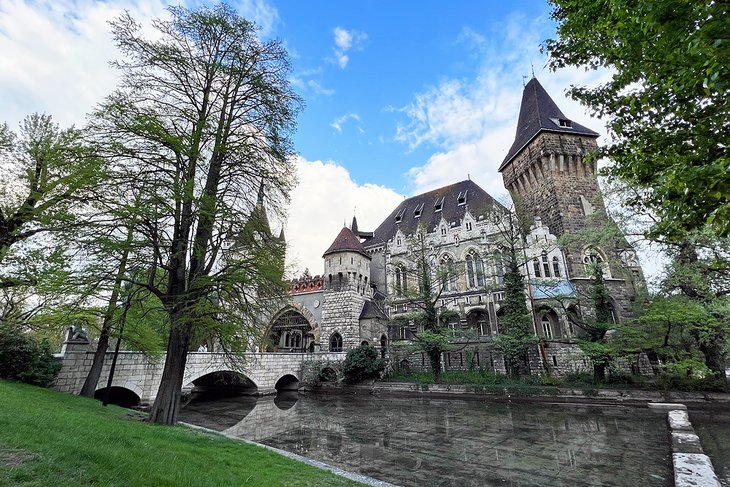
With its pretty lake, the 302-acre heavily wooded City Park (Városliget) is a popular recreational site for both Budapest locals and visitors. Laid out in the 19th century, the park has had many additions over the years.
Sightseeing highlights include the Museum of Fine Arts and the Palace of Art; the Municipal Zoological and Botanical Garden ; the excellent Transport Museum of Budapest ; Tivoli Pleasure Park , with its kids' rides and arcades; and the massive open-air Széchenyi Medicinal Bath .
Also worth seeing are the fairy-tale Vajdahunyad Castle and the 100,000-seat People's Stadium.
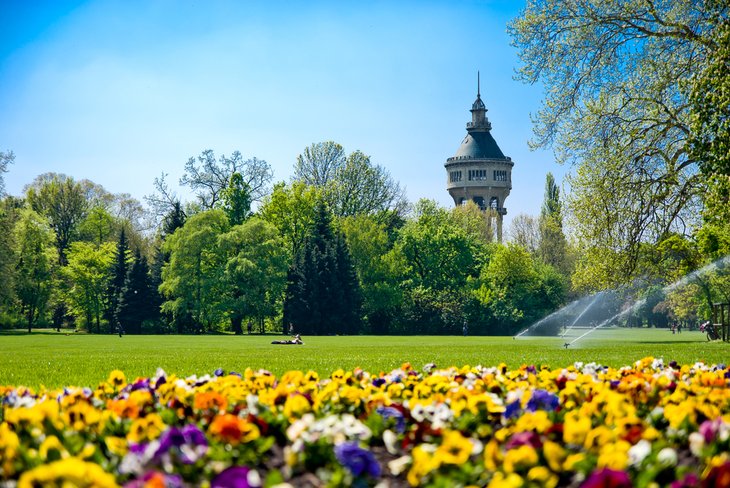
Margaret Island (Margitsziget), barely 2.4 kilometers long and 503 meters wide, is Budapest's main recreation and recuperative center for locals. Thermal spring-fed medicinal baths, carefully tended gardens and paths, as well as the ruins of many historic buildings also serve to attract many tourists, too.
A highlight of any visit is the Palatinus Baths , a huge spa complex that covers more than 17 acres and includes a bath with artificial waves, together with various medicinal, swimming, and children's pools capable of accommodating up to 20,000 bathers at a time.
Other island highlights are the pretty Rose Garden (Rózsakert); the Union Monument , a metal sculpture by István Kiss (1972) in the form of a flower; ruins of the Dominican convent, once home to Princess Margaret, the daughter of King Béla IV; the 51-meter water-tower, built in 1911, with its excellent viewing platform; and a large open-air theater.
Other things to do here include bike rentals or enjoying a meal at one of the many restaurants. If visiting at night, be sure to head to the Margaret Island Musical Fountain for its illuminations.
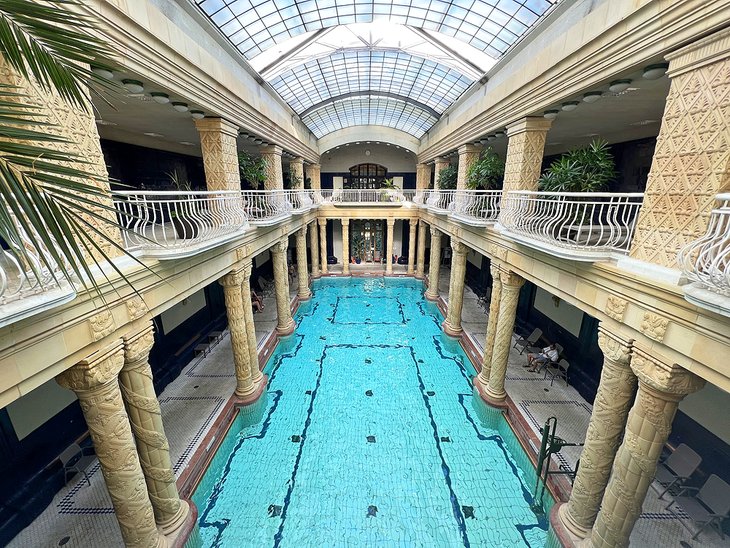
Gellért Spa is another famous thermal bath in Budapest. The Art Nouveau bath palace has welcomed bathers to take to its medicinal waters, fed from deep underground springs, since 1918 (check out the vintage photos on display!).
Inside you can soak your muscles in five thermal baths, get a refreshing chill in two plunge pools, and take a few laps in the stunning swimming pool, flanked by tropical plants and columns. The spa also boasts lovely outdoor facilities, including a wave pool and thermal sitting pool.
Address: Budapest, Kelenhegyi út 4, 1118
Official site: http://gellertspa.com/
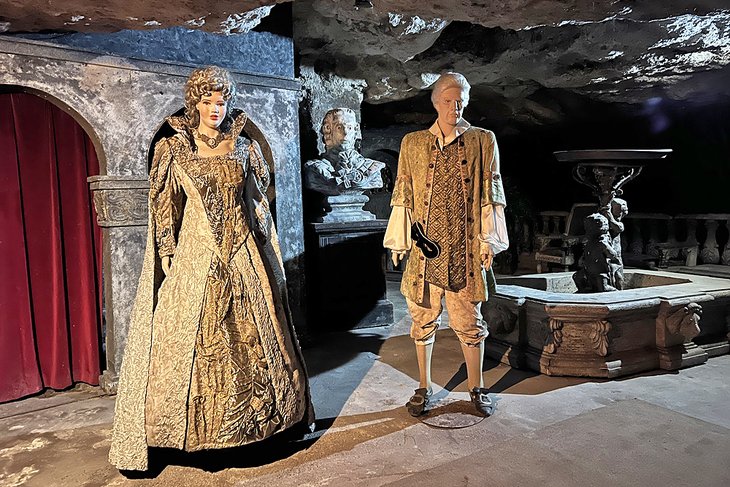
If you're looking for a unique thing to do in Budapest , check out the Labyrinth of Buda Castle.
Located in natural caves beneath Castle Hill , the underground attraction allows you to visit the dank chambers where the man now known as "Dracula" was imprisoned for many years during the 15th century.
You can also see a series of statues of historical Hungarian figures, and try your best to navigate the Maze of Darkness in pitch blackness. Whatever you do, don't let go of the garden hose flanking the wall – it's the key to finding your way around the maze.
Address: Budapest, Úri u. 9, 1014
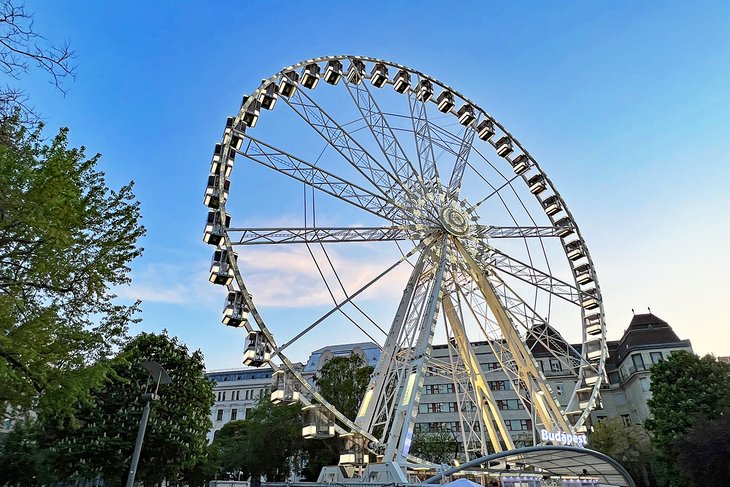
For the best views of the entire city, take a ride on the Ferris Wheel of Budapest in Erzsébet Square . Its 65-meter height allows you to get amazing vantage points of Buda Castle , St. Stephen's Basilica , and the Hungarian Parliament Building from any of the 42 partially open cabins.
You're guaranteed to take at least three full turns on the wheel for a ride that lasts up to 10 minutes.
Hot tip: Sunset is the best time to ride the Ferris Wheel of Budapest, so plan your visit accordingly.
Address: Budapest, Erzsébet tér 1051, 1051
Official site: https://oriaskerek.com/en/
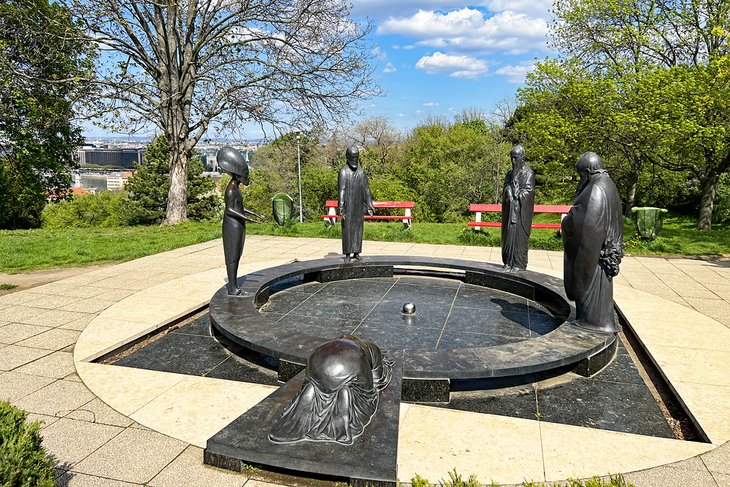
Atop Gellért Hill is a series of serene sculptures called the Garden of Philosophers. The installation was created in the 1990s by Hungarian sculptor Nándor Wagner who wanted his work to inspire a better understanding of the world's religions and philosophies.
It features Buddha, Abraham, Jesus, Laozi, and Akhenaten situated around a shiny orb. You can also see statues of Mahatma Gandhi, Saint Francis, and Bodhidharma along the sidelines.
The beautiful attraction offers the opportunity to take a few moments out of a day of sightseeing for quiet contemplation.
The best option when it comes to finding accommodations in Budapest is to focus on the Pest side of the Danube (the east bank), home to wide cobbled streets as well as attractions such as the Parliament Buildings and the Museum of Fine Arts.
Luxury Hotels:
- For stunning views over the Danube, try the Four Seasons Hotel Gresham Palace , popular for its large rooms with high ceilings and excellent indoor spa and pool.
- In the heart of Pest's palace district, historic Hotel Palazzo Zichy impresses from the get-go with its palatial foyer and sumptuously decorated, spacious rooms.
- Equally luxurious, the Corinthia Hotel Budapest boasts large, well-appointed rooms, some overlooking a lovely courtyard. Guests can also enjoy the terraced indoor pool.
Mid-Range Hotels:
- Steps from great shopping and dining, the Casati Budapest Hotel offers a relatively quiet, intimate experience of the city due to its small size (check out the sauna and gym in the brick-lined cellar).
- Another boutique hotel in the heart of Pest, Gerloczy Rooms de Lux offers larger rooms with high ceilings, the best with balconies overlooking a picturesque city square.
- A little more modern, the Bo18 Hotel Superior offers well-appointed rooms, along with amenities such as a gym, hot tub, and Finnish and infrared saunas.
Budget Hotels:
- Popular for its affordability and central location in the heart of Pest, Hotel Erzsebet City Center offers good-sized modern rooms.
- Although a little further east of Pest's inner city area, Hotel Chesscom offers large rooms and is close to public transport and the airport.
- Also close to public transport, the charming Kis Gellert Guesthouse offers excellent value in a quiet area of town.
- Sightseeing: For independent sightseeing and to get oriented with the city, the Budapest Big Bus Hop-on Hop-off Tour is a great option. This excellent tour option incorporates bus stops at all major tourist attractions. Tickets are valid for 24, 48, or 72 hours. If you are pressed for time or would like a more in-depth guided tour, the Budapest Half-Day Sightseeing Tour is your best bet. For a unique perspective on this scenic city try a Budapest Night Walking Tour and River Cruise to see the Buda Castle and the Chain Bridge lit up at night and capture some awesome photos.
- Day Trips: If you want to see more of this fascinating region than just Budapest, there are some wonderful day trip options. You can visit Slovakia's capital on this Private Bratislava Day Trip from Budapest . The 10-hour tour will show you popular attractions, like Michael's Gate and Bratislava Castle. Nature lovers can also hike the beautiful mountains surrounding Budapest on this One Day Wonder Hiking Trip . A private guide will take you to Prédikálószék peak and Ram Canyon at whatever pace is most comfortable for you, giving you time to appreciate the scenic waterfalls and forest.
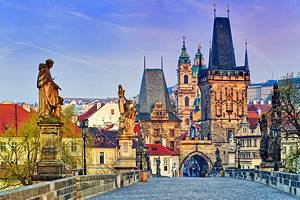
Some of the top destinations in Hungary can be visited on easy day trips from Budapest , which makes it a good base for visitors. A tour of Eastern Europe's capitals combines Budapest with visits to Bucharest in Romania , and the picturesque city of Prague in the Czech Republic. Like Budapest, Prague is crowned by a beautiful hilltop castle .
A good stopover en route to Prague is the art-filled city of Brno . Only 2.5 hours by train or a three-hour drive from Budapest is the cultural city of Vienna , on the Danube River in the heart of beautiful Austria.
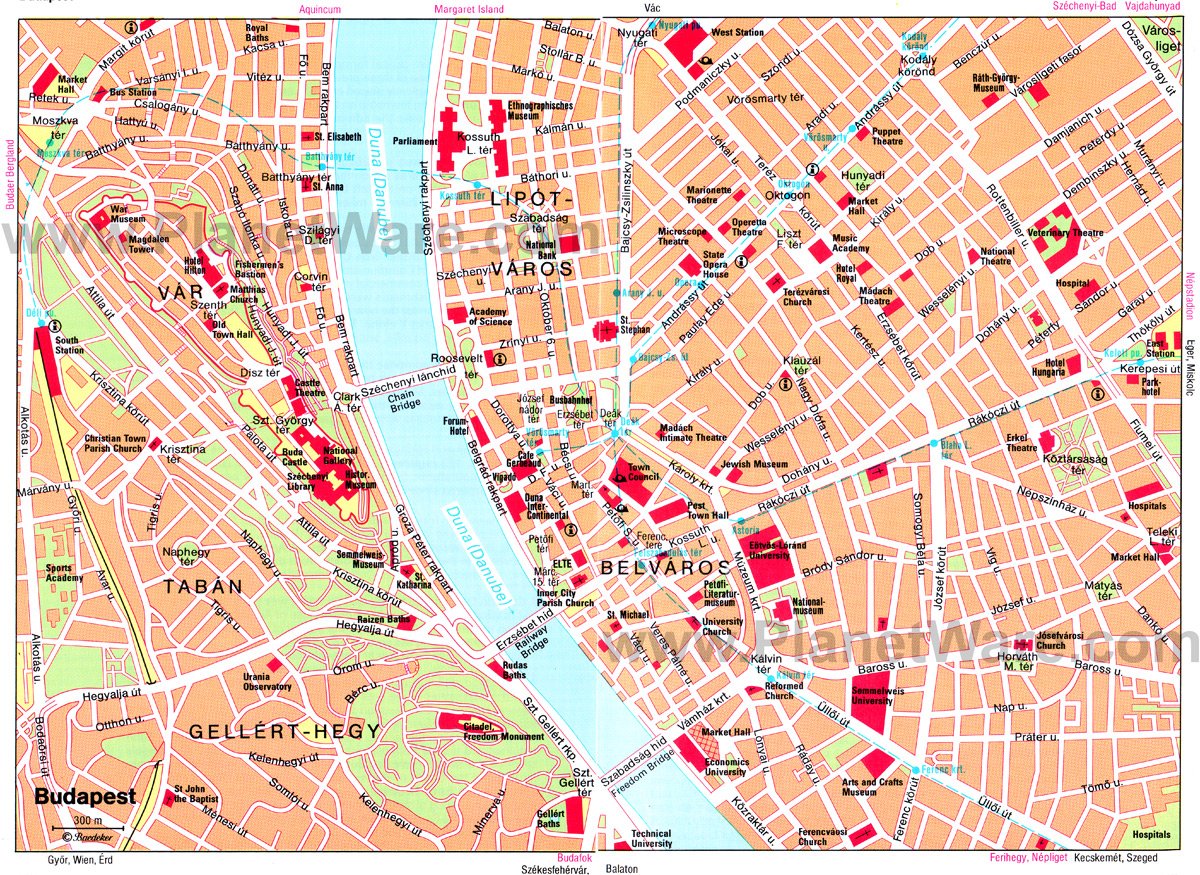
More on Hungary
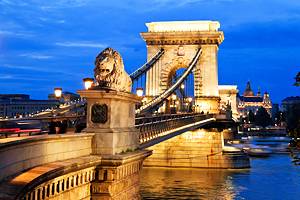
Maps of Hungary
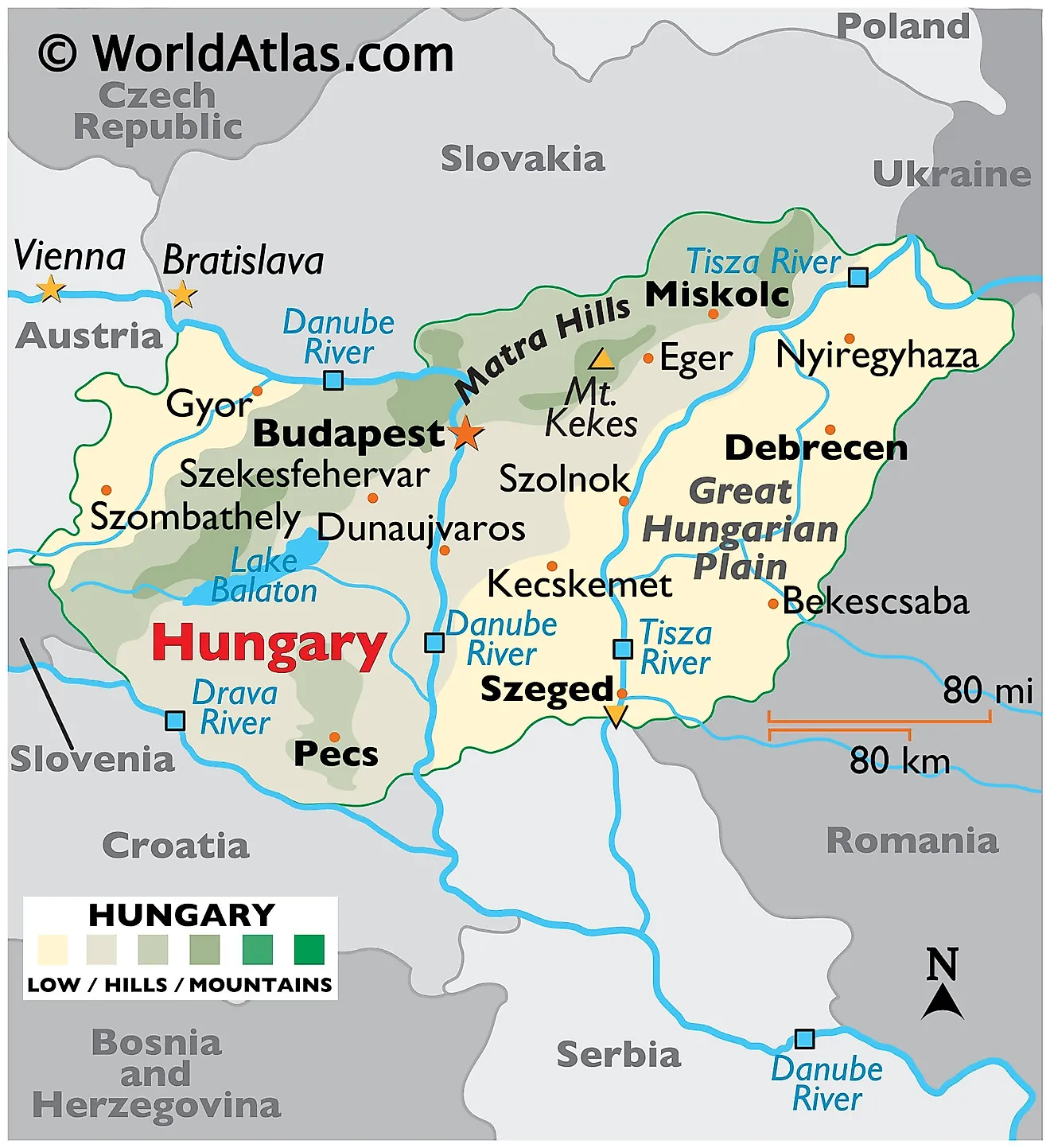
Hungary is a medium-sized, landlocked Central European country covering an area of 93,030 km2(35,920 sq mi).
As observed on the physical map of Hungary, it is mostly a flat country, dominated by the Great Hungarian Plain east of the Danube. The plain includes approximately 56% of the country's land. The terrain ranges from flat to rolling plains.
The land rises into hills and some low mountains in the north along the Slovakian border. The highest point, located in the Matra Hills, is Mt Kekes at 3,330 ft. (1,015m). A yellow upright triangle marks the position of this highest point on the map.
The lowest spot (marked by a yellow inverted triangle) is 77.6 m above sea level, located along the Tisza River in the south of Hungary, near Szeged.The Danube is the major river, as it divides the country almost in half, and is navigable within Hungary for 418 km. Additional rivers of note include the Drava and Tisza.Hungary has three major lakes. Lake Balaton, the largest at 78 km long and from 3 to 14 km wide, has an area of 592 sq km. As seen on the map, it is located in the west-central part of the country. It's central Europe's largest freshwater lake.
Counties of Hungary Map
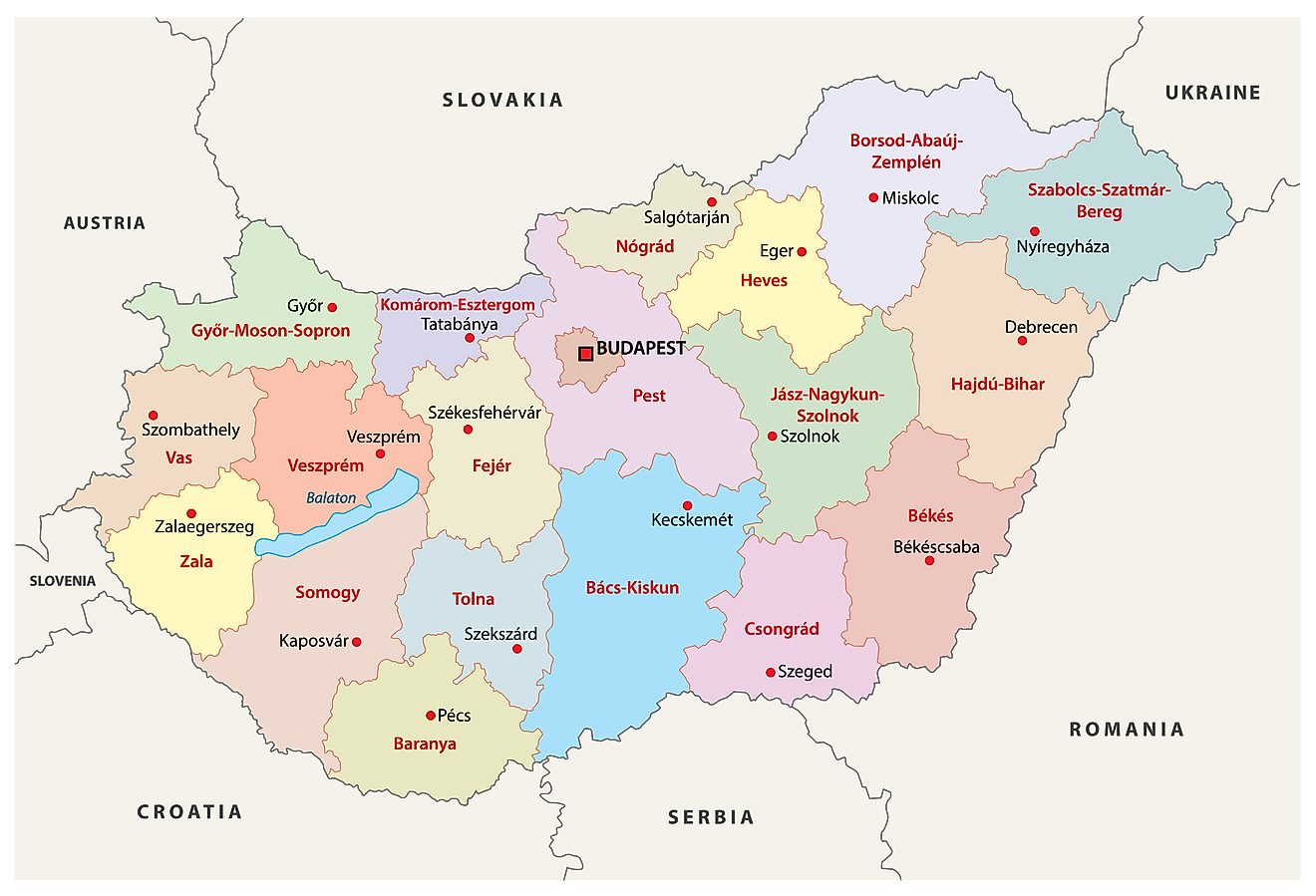
Hungary is administratively divided into 19 counties (megyek, singular - megye) and 1 capital city (fovaros). In alphabetical order, the counties are:Bacs-Kiskun, Baranya, Bekes, Borsod-Abauj-Zemplen, Csongrad, Fejer, Gyor-Moson-Sopron, Hajdu-Bihar, Heves, Jasz-Nagykun-Szolnok, Komarom-Esztergom, Nograd, Pest, Somogy, Szabolcs-Szatmar-Bereg, Tolna, Vas, Veszprem and Zala. Budapest is the capital city. There are also 23 cities with county rights, which are called ‘urban counties’(megyei jogu varosok, singular - megyei jogu varos). In alphabetical order, these are: Bekescsaba, Debrecen, Dunaujvaros, Eger, Erd, Gyor, Hodmezovasarhely, Kaposvar, Kecskemet, Miskolc, Nagykanizsa, Nyiregyhaza, Pecs, Salgotarjan, Sopron, Szeged, Szekesfehervar, Szekszard, Szolnok, Szombathely, Tatabanya, Veszprem and Zalaegerszeg.
The counties are subdivided into 174 districts while the capital city has 23 districts.
With an area of 93,030 sq. km, Hungary is a medium-sized member state of EU. Located at the center of the Carpathian Basin, on both the banks of the Danube River, Budapest is the capital, the largest and the most populous city of Hungary. It is the country’s major administrative, industrial and economic center.
Where is Hungary?
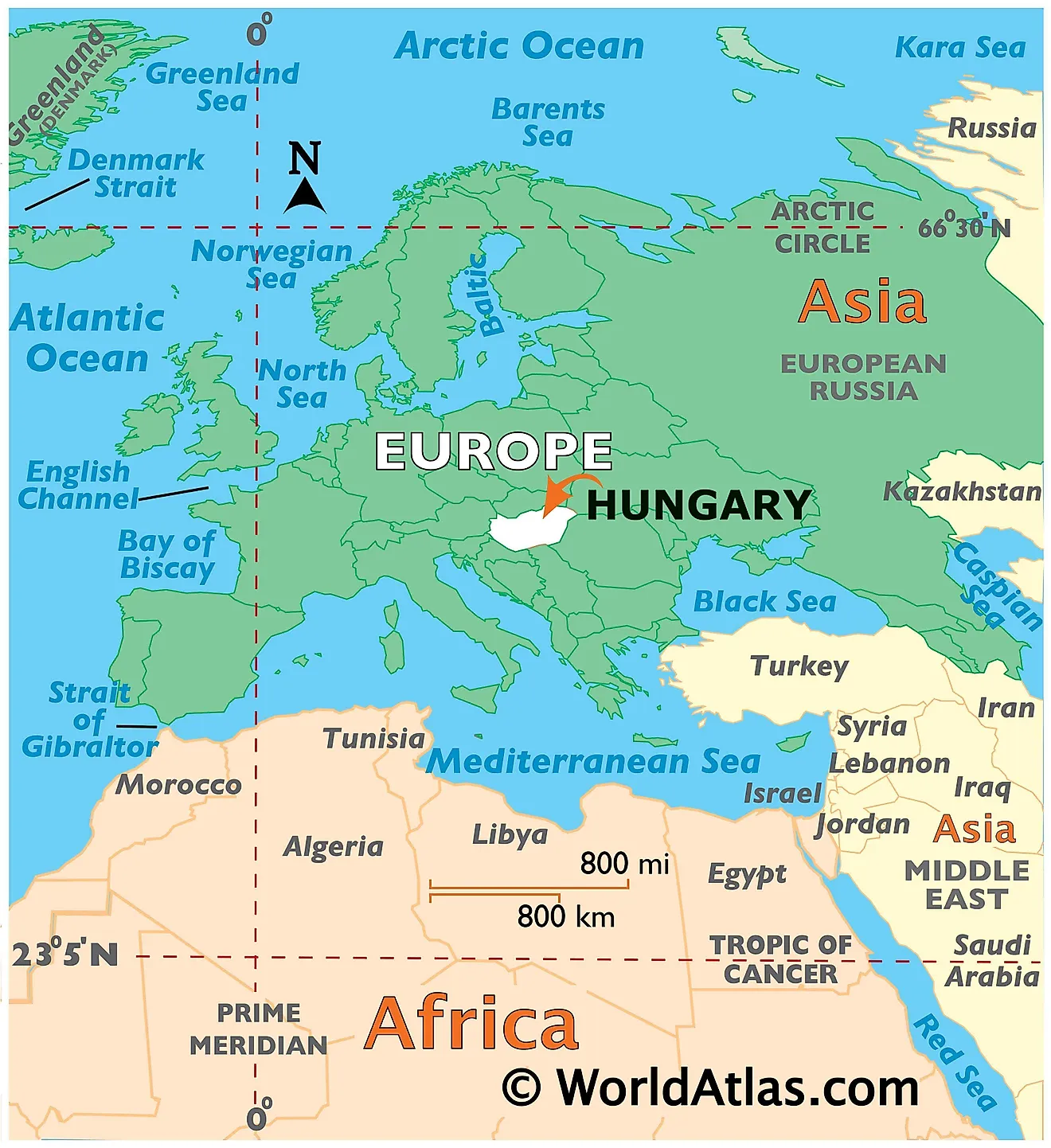
Hungary is a landlocked Central European Nation, situated in the Carpathian Basin. It is geographically positioned both in the Northern and Eastern hemispheres of the Earth. It is bordered by 7 Nations: by Slovakia in the north; Ukraine in the northeast; Romania in the east; Serbia and Croatia in the south; Slovenia in the southwest and Austria in the west.
Hungary Bordering Countries : Ukraine , Romania , Serbia , Slovakia , Austria , Croatia , Slovenia .
Regional Maps : Map of Europe
Outline Map of Hungary
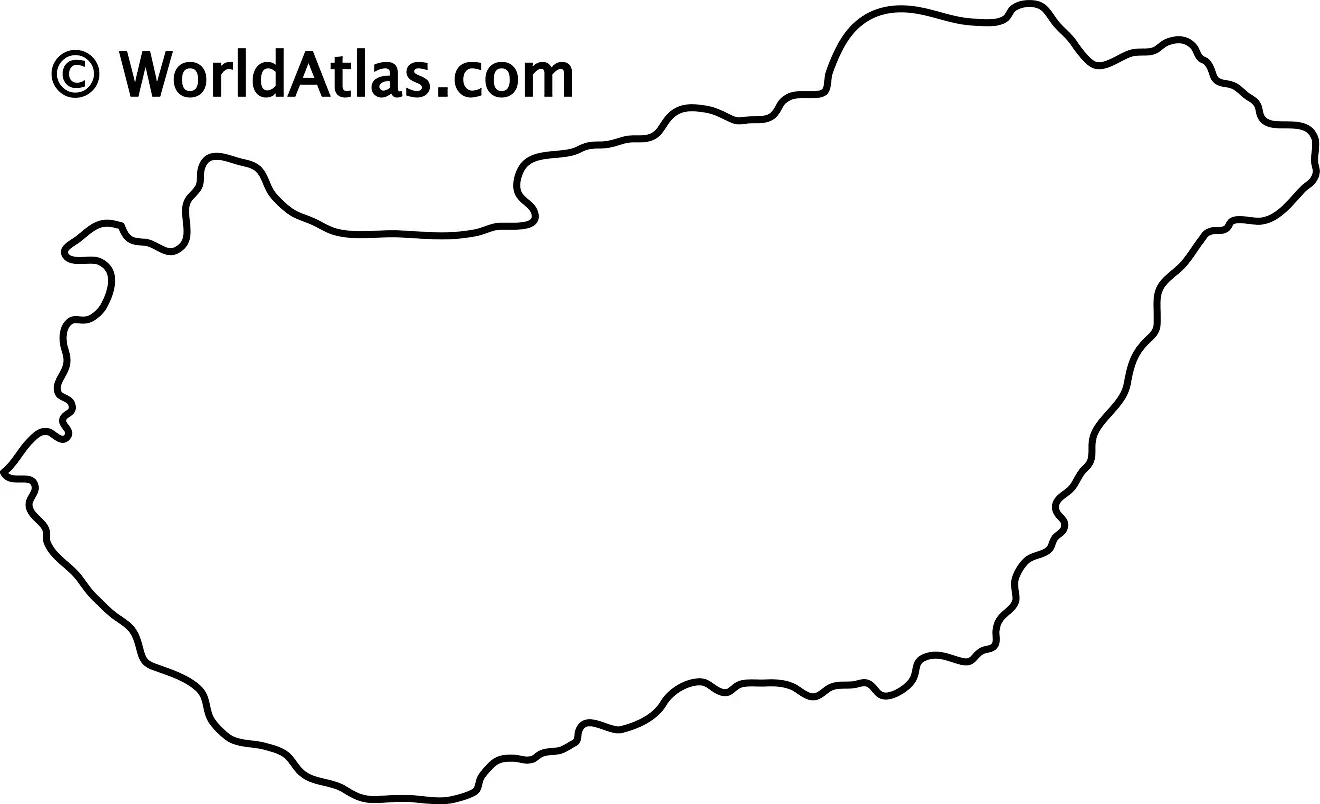
The blank outline map represents the territory of the sovereign landlocked nation of Hungary in Central Europe. The map can be downloaded, printed, and used for coloring or map-pointing activities.
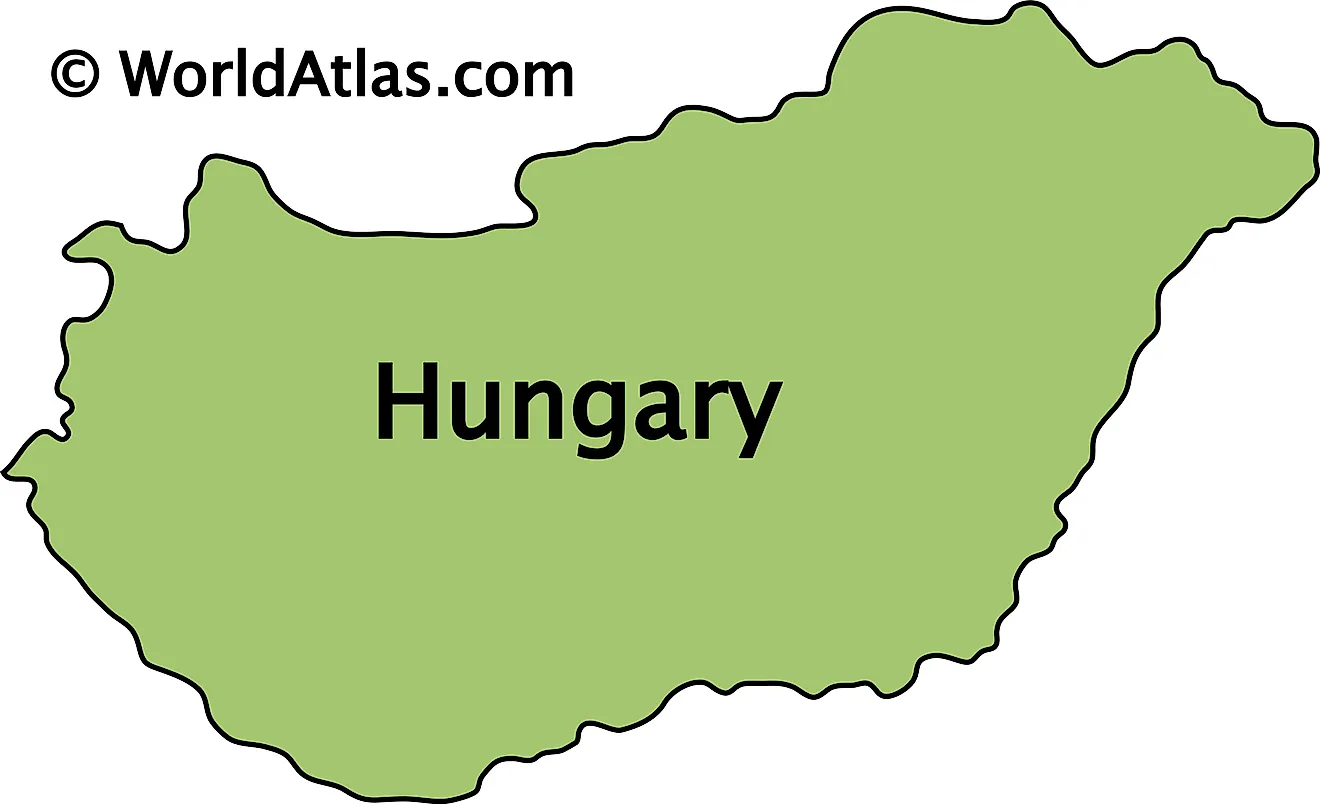
The outline map above is of Hungary, a landlocked country in Central Europe and a middle power in global affairs.
This page was last updated on February 25, 2021
Latest by WorldAtlas
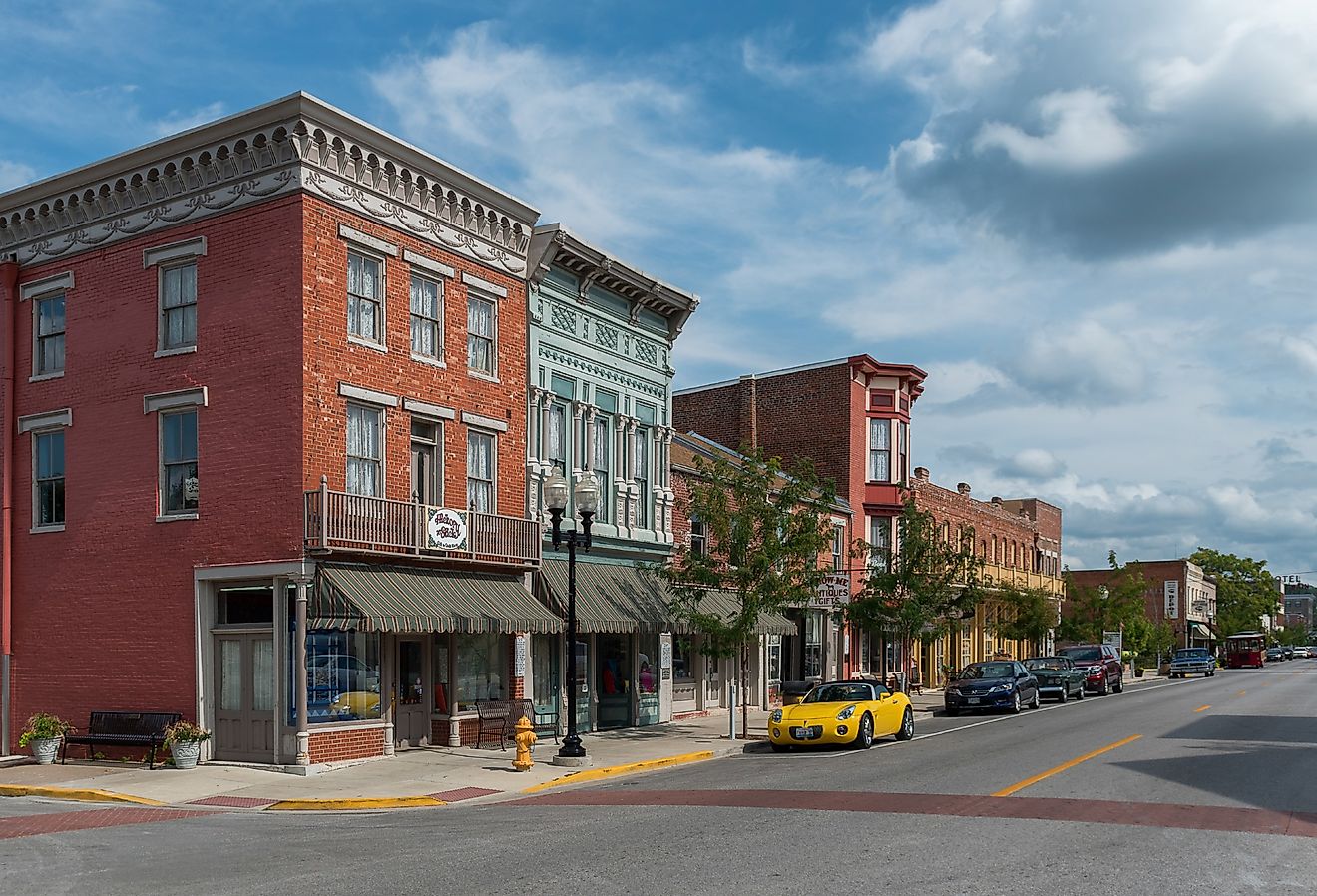
7 Cutest Small Towns in the Mid-South To Visit In 2024
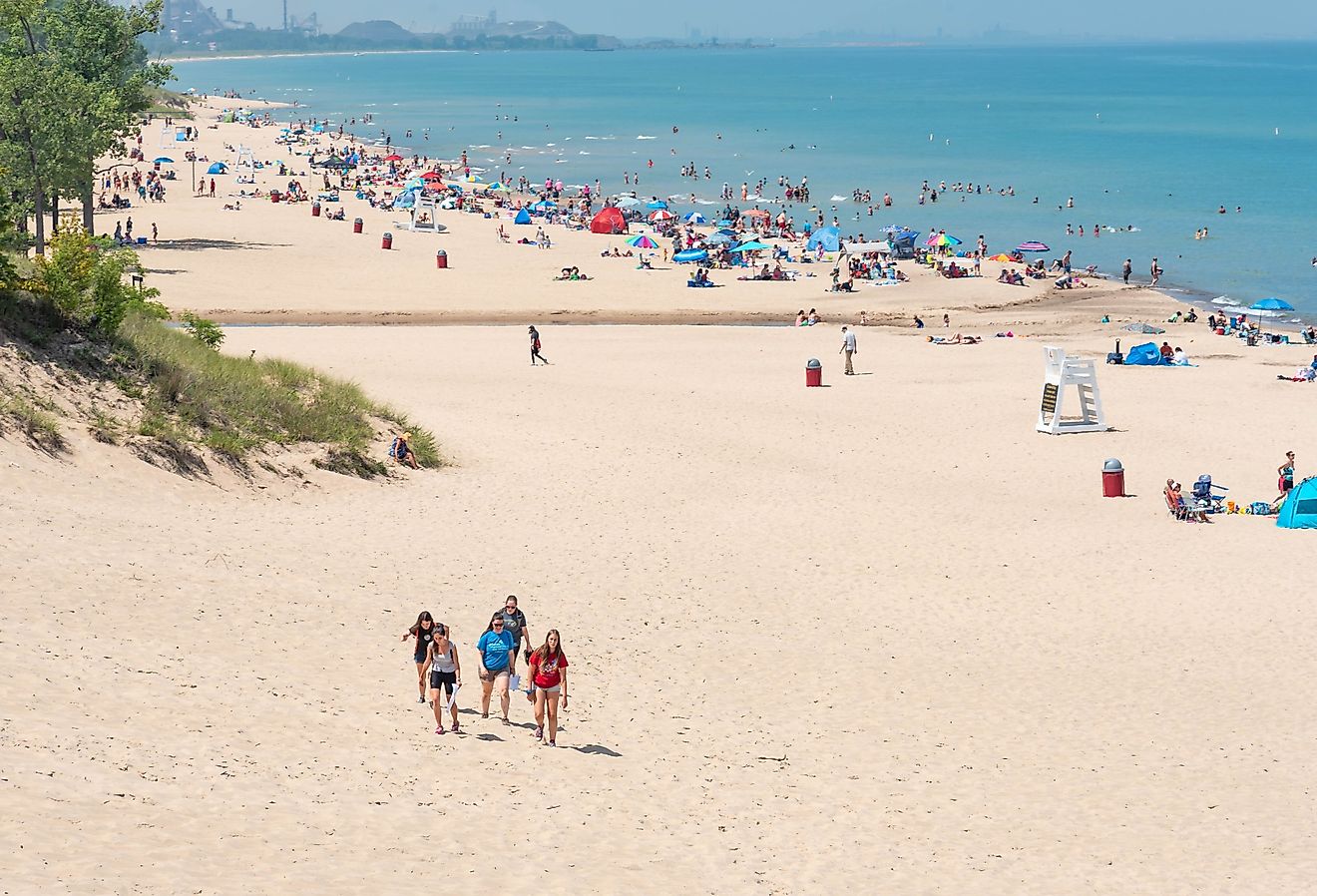
The Best Small Towns in Indiana for a Weekend Retreat

10 Most Dangerous Plants in Florida
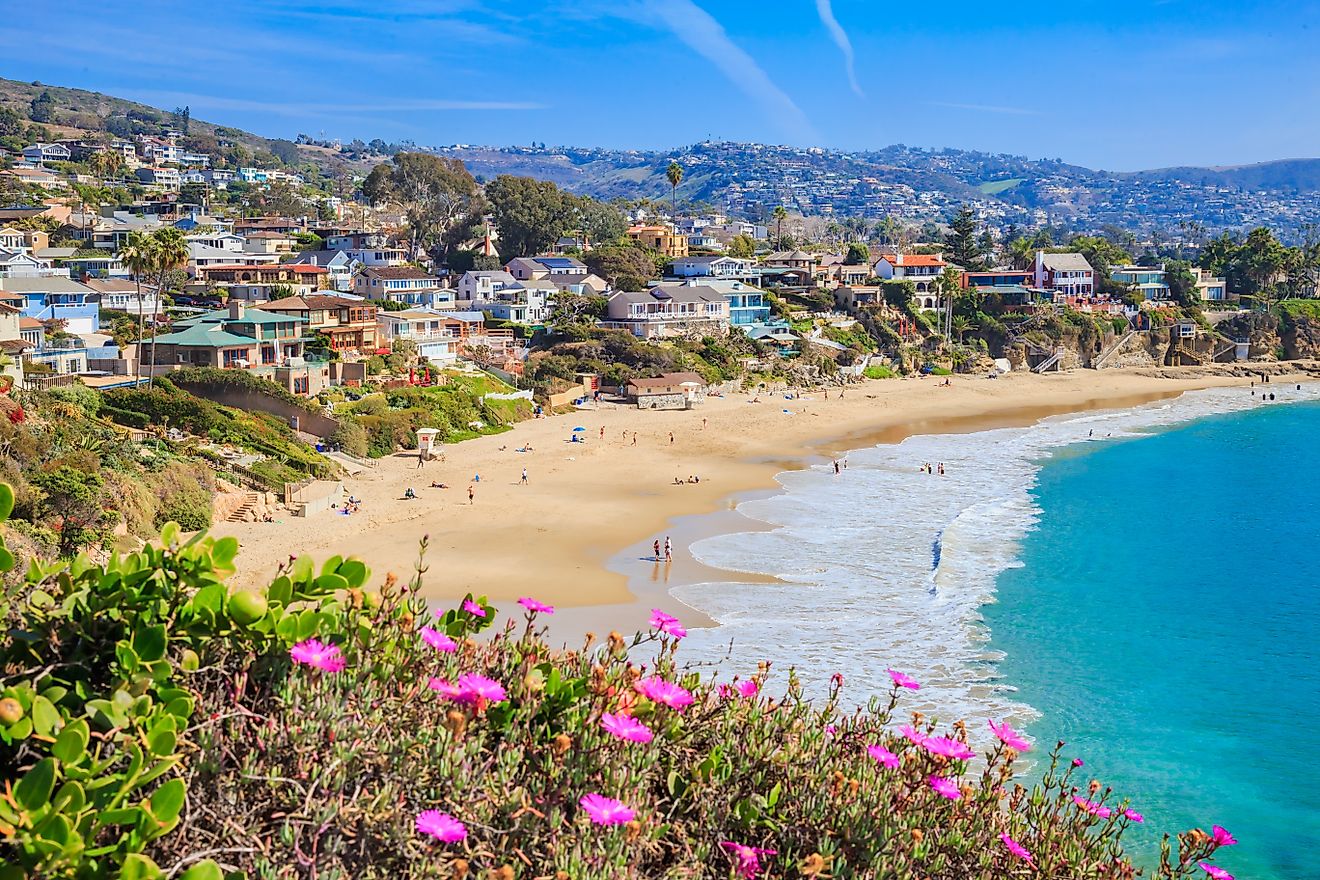
The Best Small Towns in Pacific Coast for a Weekend Retreat
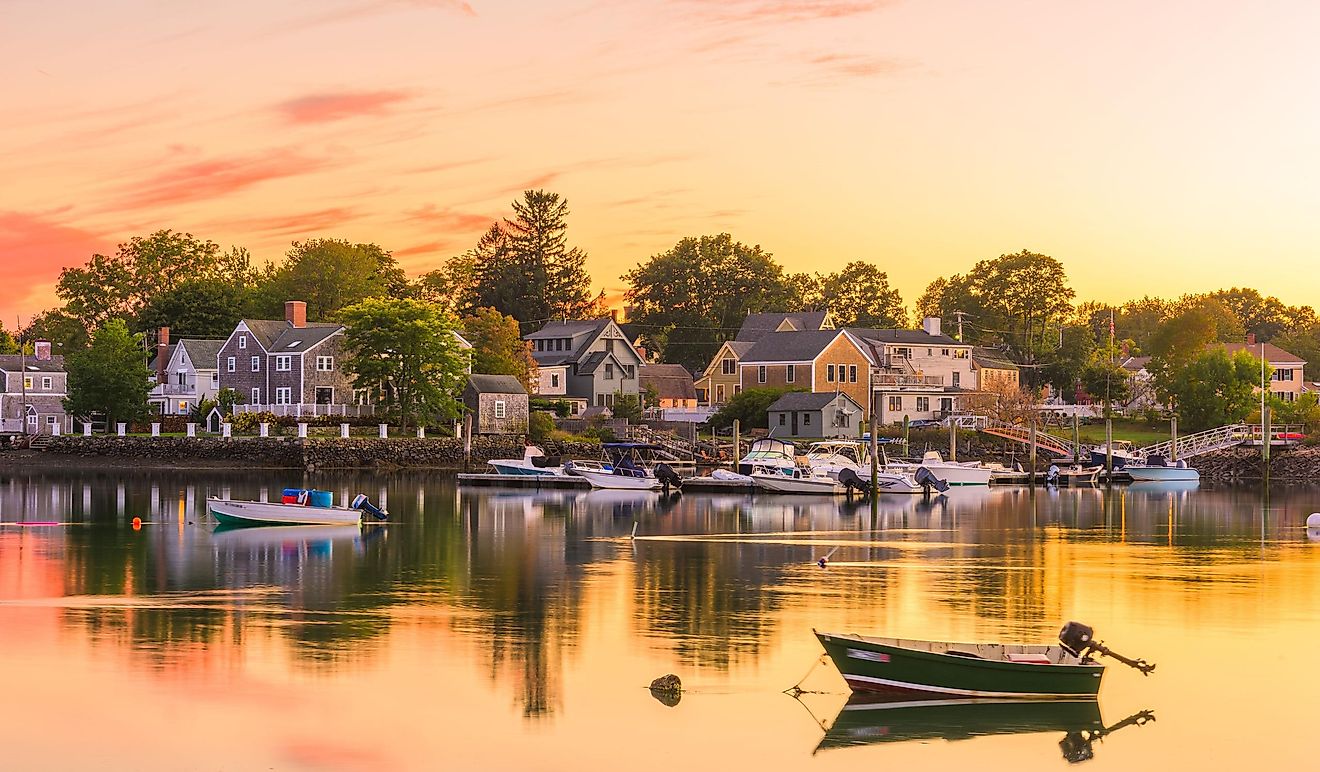
The Best Small Towns in New Hampshire for a Weekend Retreat
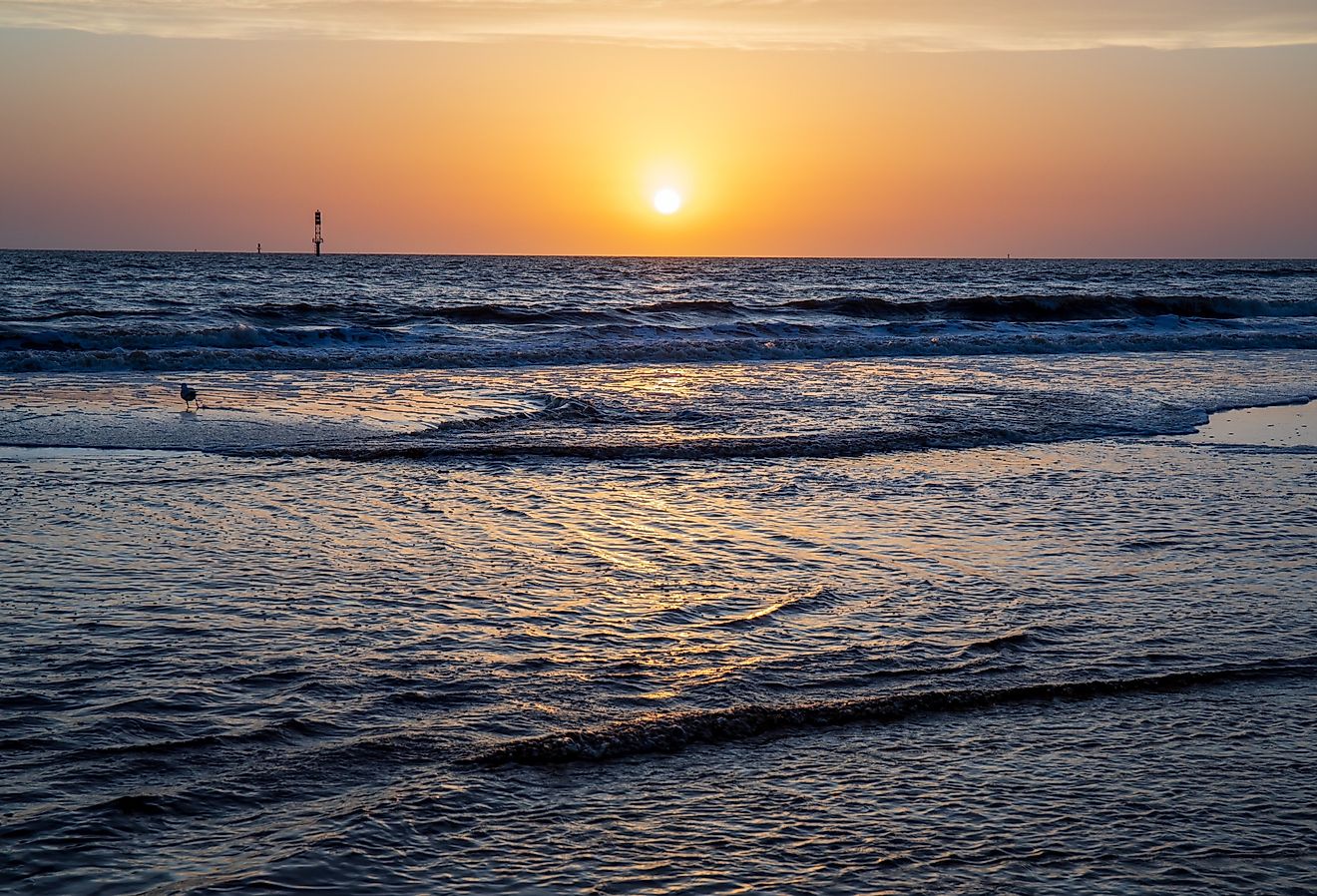
7 Cutest Small Towns In Gulf Coast To Visit In 2024
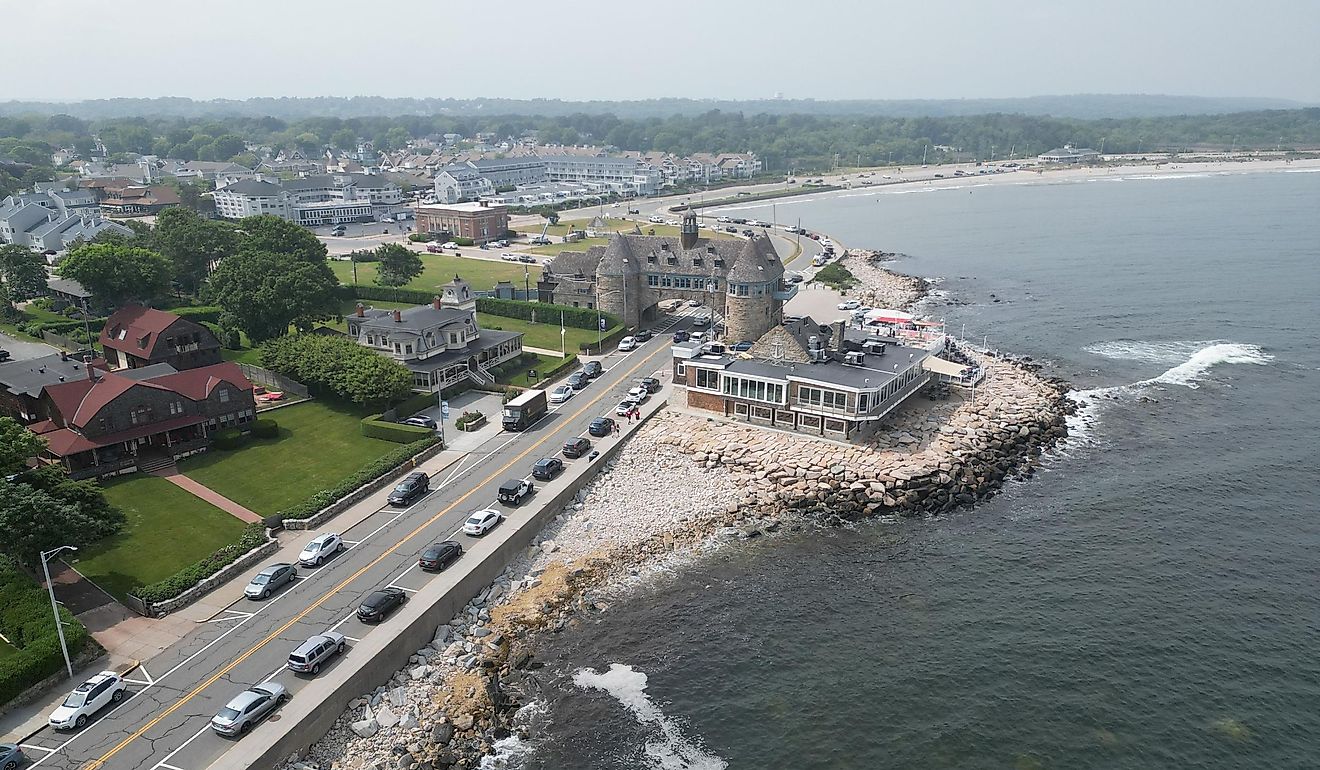
8 Cutest Small Towns In Rhode Island To Visit In 2024
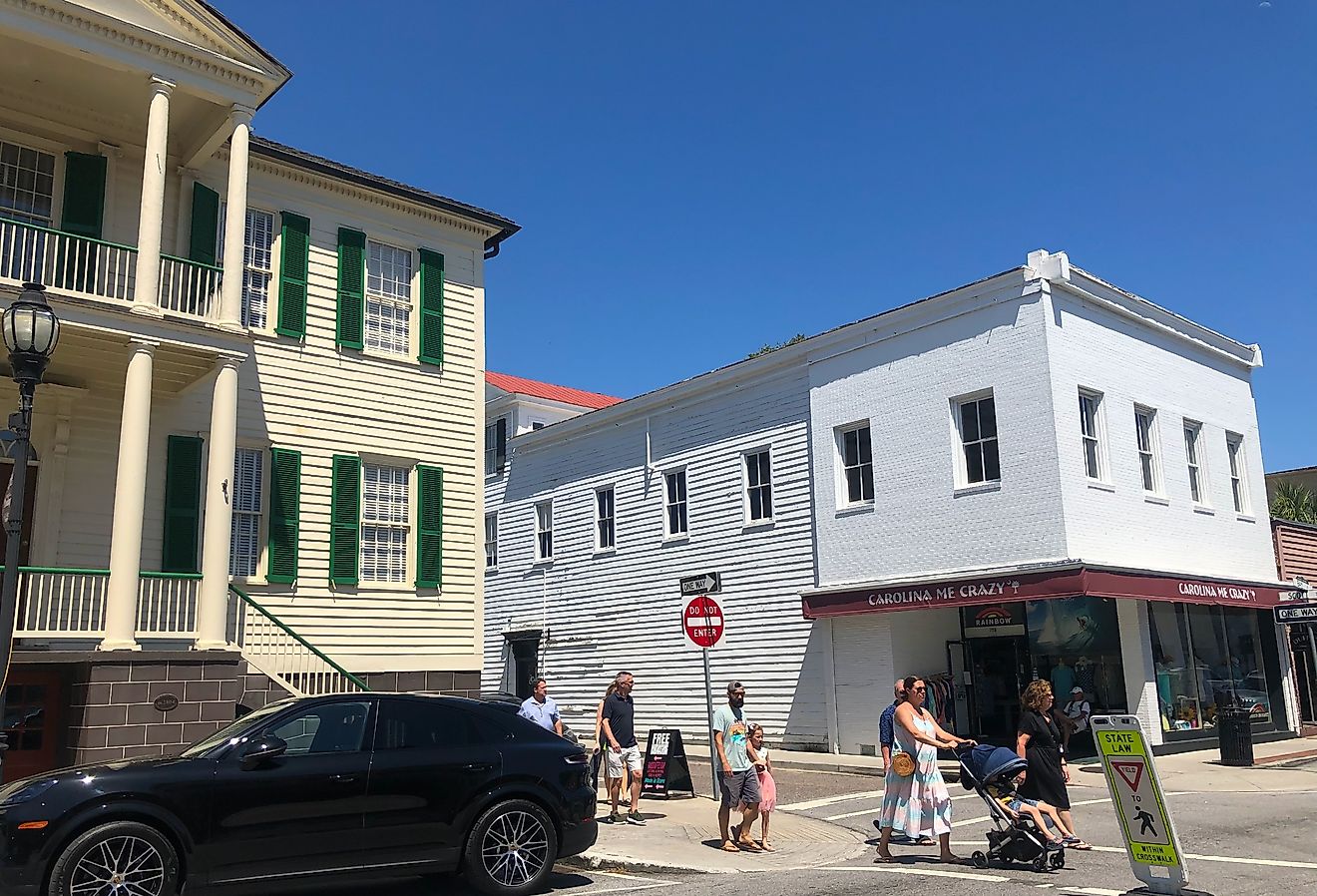
The Best Small Towns in South Carolina for a Weekend Retreat
Tourist Map Of Hungary
All destinations in hungary.
Click on an Destination to view it on map

Browse Package Collections
Top destinations for packages, nearby countries for packages.
Czech Republic
Nearby Countries

Get the best offers on Travel Packages
Compare package quotes from top travel agents
Compare upto 3 quotes for free
- India (+91)
*Final prices will be shared by our partner agents based on your requirements.
Log in to your account
Welcome to holidify.
Forget Password?
Share this page
Budapest Printable Tourist Map
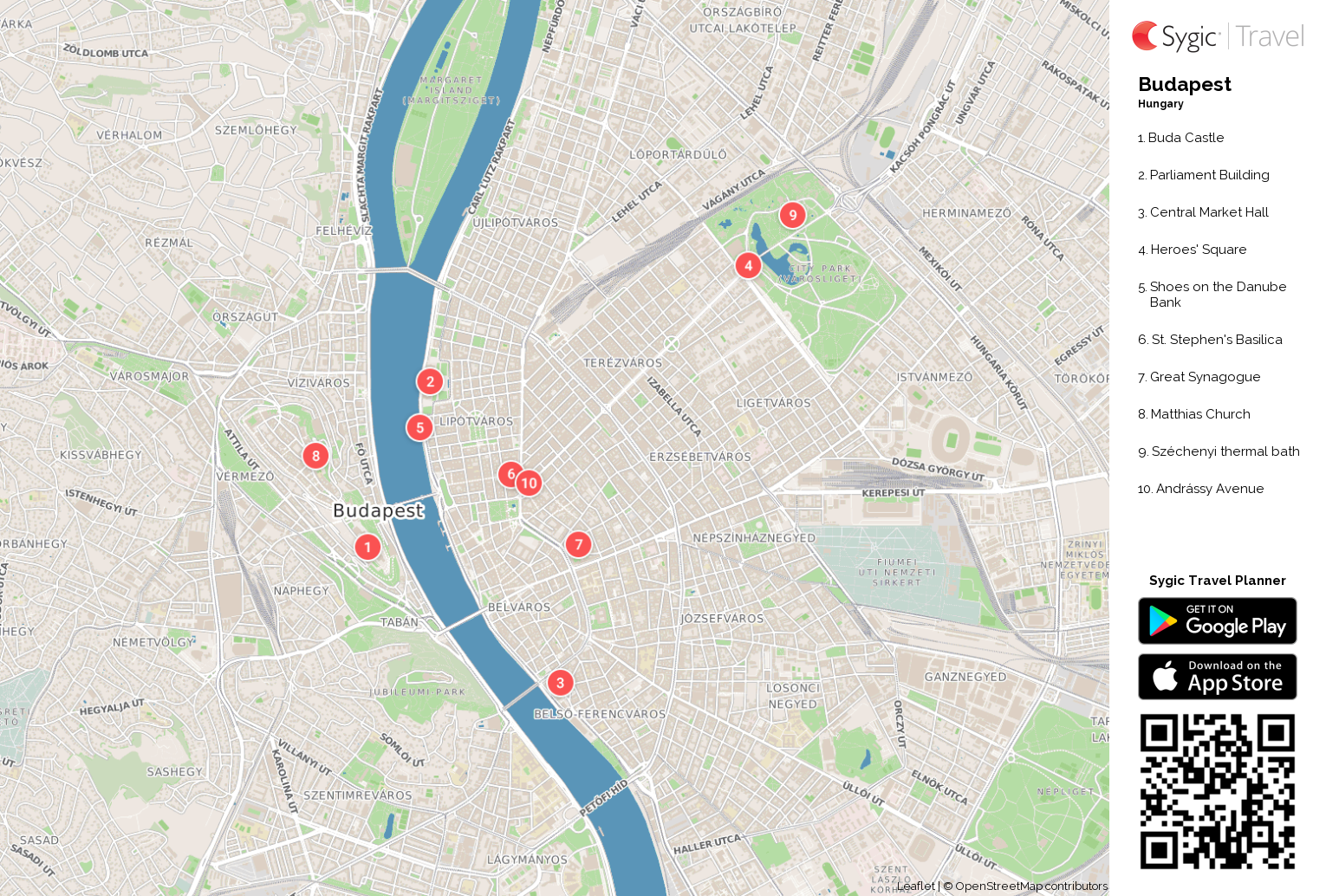
Budapest Map: The Attractions
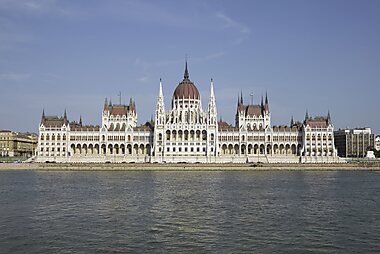
Parliament Building
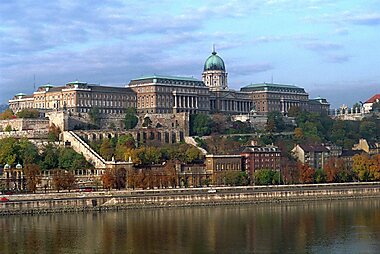
Buda Castle
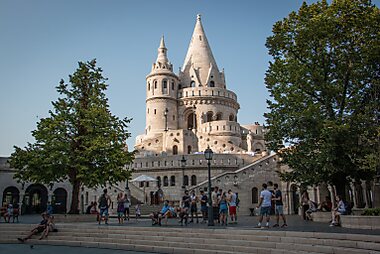
Fisherman's Bastion

St. Stephen's Basilica

Shoes on the Danube Bank
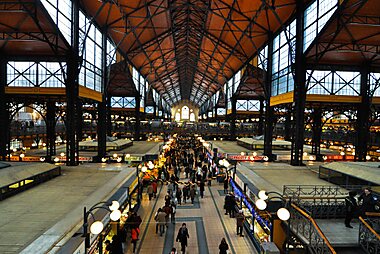
Central Market Hall
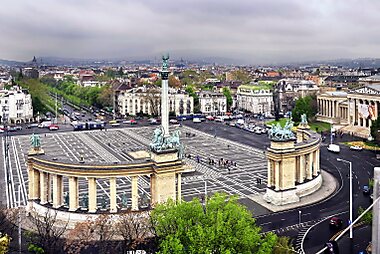
Heroes' Square
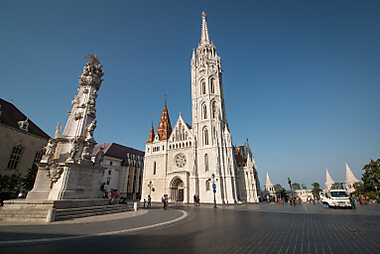
Matthias Church
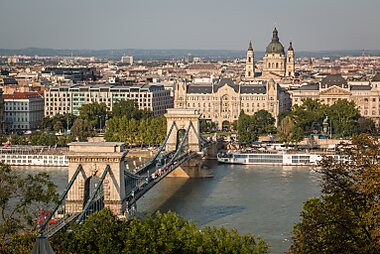
Széchenyi Chain Bridge

Great Synagogue
Sygic travel - a travel guide in your pocket.

More Tourist Maps
- Privacy Policy
- STOCK 360° TRAVEL VIDEOS
Update May 10, 2024
Information for u.s. citizens in the middle east.
- Travel Advisories |
- Contact Us |
- MyTravelGov |
Find U.S. Embassies & Consulates
Travel.state.gov, congressional liaison, special issuance agency, u.s. passports, international travel, intercountry adoption, international parental child abduction, records and authentications, popular links, travel advisories, mytravelgov, stay connected, legal resources, legal information, info for u.s. law enforcement, replace or certify documents.
Before You Go
Learn About Your Destination
While Abroad
Emergencies
Share this page:
Travel Advisory July 26, 2023
Hungary - level 1: exercise normal precautions.
Reissued with obsolete COVID-19 page links removed.
Exercise normal precautions in Hungary.
Read the country information page for additional information on travel to Hungary.
If you decide to travel to Hungary:
- Enroll in the Smart Traveler Enrollment Program ( STEP ) to receive alerts and make it easier to locate you in an emergency.
- Follow the Department of State on Facebook and Twitter .
- Review the Country Security Report for Hungary.
- Visit the CDC page for the latest Travel Health Information related to your travel.
- Prepare a contingency plan for emergency situations. Review the Traveler’s Checklist .
Embassy Messages
View Alerts and Messages Archive
Quick Facts
Six months validity recommended; three months validity beyond planned departure date from the Schengen Zone required.
One (1) page per stamp.
Not required for stays under 90 days.
Amounts of more than 10,000 Euros (or equivalent currency) must be declared.
Embassies and Consulates
U.S. Embassy Budapest
Szabadság tér 12 H-1054 Budapest Hungary Telephone: +(36) (1) 475-4400 Email: [email protected]
Destination Description
Learn about the U.S. relationship to countries around the world.
Entry, Exit and Visa Requirements
Hungary is a party to the Schengen Agreement, which allows for free movement between certain European countries. U.S. citizens may enter Hungary for up to 90 days for tourist or business purposes without a visa. If you plan to stay longer, please visit the Embassy of Hungary for the most current visa information.
Traveling Through Europe : If you are planning to visit or travel through European countries, you should be familiar with the requirements of the Schengen Agreement. Please review our U.S. Travelers in Europe page .
- Your passport should be valid for at least three months beyond the period of stay .
- You will need sufficient proof of funds and a return plane ticket .
- For additional information about visas for the Schengen area, see the Schengen Visa page .
The U.S. Department of State is unaware of any HIV/AIDS entry restrictions for visitors to or foreign residents of Hungary.
Find information on dual nationality , prevention of international child abduction and customs regulations on our websites.
Safety and Security
Terrorist groups and those inspired by such organizations are intent on attacking U.S. citizens abroad. Terrorists are increasingly using less sophisticated methods of attack – including knives, firearms, and vehicles – to more effectively target crowds. Frequently, their aim is unprotected or vulnerable targets, such as:
- High-profile public events (sporting contests, political rallies, demonstrations, holiday events, celebratory gatherings, etc.)
- Hotels, clubs, and restaurants frequented by tourists
- Places of worship
- Shopping malls and markets
- Public transportation systems (including subways, buses, trains, and scheduled commercial flights)
Terrorism: Terrorist groups and those inspired by such organizations are intent on attacking U.S. citizens abroad, including in Europe. For more information, see our Terrorism page.
Crime: Although Hungary is generally a safe place to visit, you should use caution and stay alert. Be especially careful in crowded tourist areas, train stations, buses, trams, and metros.
Passports, cash, and credit cards are favorite targets of thieves. The Embassy regularly receives reports of pickpocketing on the trains between Budapest and Vienna, so please be especially mindful of your belongings when traveling this route. There have been some instances in Budapest where U.S. citizens were overcharged exorbitant prices for food, beverages, or taxi services. Always verify the cost before making a purchase.
There have been incidents, although rare, where U.S. citizens were unknowingly drugged. Do not accept food or drink from anyone but a server. Additionally, the Embassy has received reports of racially motivated assaults. Please report all crimes to the local police. In an emergency dial 112 for help and contact the U.S. Embassy for follow-up assistance.
General tips to avoid becoming a victim of crime:
- Be aware of your surroundings.
- Do not walk alone at night.
- Be vigilant when visiting banks or ATMs.
- Stay alert in crowded locations frequented by tourists.
- Always keep your belongings secure.
- Do not accept food or drink from anyone but a server.
Victims of Crime: Hungarian authorities are responsible for investigating and prosecuting crimes committed in Hungary. Report crimes to the local police by calling 112 .
U.S. citizen victims of violent crime and sexual assault are encouraged to contact the U.S. Embassy for assistance. See our webpage about help for U.S. victims of crime overseas .
See our webpage on help for U.S. victims of crime overseas .
- Help you find appropriate medical care
- Assist you in reporting a crime to the police
- Contact relatives or friends with your written consent
- Provide general information regarding the victim’s role during the local investigation and following its conclusion
- Provide a list of local attorneys
- Provide our information on victim’s compensation programs in the U.S.
- Provide an emergency loan for repatriation to the United States and/or limited medical support in cases of destitution
- Help you find accommodation and arrange flights home
- Replace a stolen or lost passport
Demonstrations: Political gatherings and protests occur frequently in Hungary, mostly in Budapest. They may take place in response to political or economic issues, on politically significant holidays, and during international events. Ethnic nationalist groups have gained popularity in Hungary in the past years, in some cases advocating intolerance towards migrants and minorities, including Jews, Roma, and LGBTI+ individuals. Although these far-right groups do not engage in violence and are not explicitly anti-United States, you should avoid public demonstrations and confrontations with their members.
- Demonstrations can be unpredictable, avoid areas around protests and political rallies.
- Check local media for updates and traffic advisories.
- In a few instances where demonstrations have turned violent, authorities have used riot police to control crowds.
Domestic Violence: U.S. citizen victims of domestic violence are encouraged to contact the Embassy for assistance.
International Financial Scams: See the Department of State and FBI webpages for information.
Tourism: The tourism industry is generally well-regulated and rules enforced. Hazardous areas/activities are identified with appropriate signage and professional staff is typically on hand in support of organized activities. In the event of an injury, appropriate medical treatment is generally available throughout the country. Outside of major metropolitan centers, it may take more time for first responders and medical professionals to stabilize a patient and provide life-saving assistance. U.S. citizens are encouraged to purchase medical evacuation insurance .
Local Laws & Special Circumstances
Criminal Penalties: You are subject to local laws. If you violate local laws, even unknowingly, you may be expelled, arrested, or imprisoned. Individuals establishing a business or practicing a profession that requires additional permits or licensing should seek information from the competent local authorities, prior to practicing or operating a business.
- Always carry your passport with you in Hungary. Local police may require you to show documentation to establish your identity upon request. Hungarian police may take you into custody if you attempt to prove your identity with documents other than a passport.
- Hungary has a zero-tolerance policy for driving under the influence of alcohol or drugs. Penalties are severe, including significant jail time.
Some laws are also prosecutable in the United States, regardless of local law. For examples, see our website on crimes against minors abroad and the Department of Justice website.
Arrest Notification: If you are arrested or detained, ask police or prison officials to notify the U.S. Embassy immediately. See our webpage for further information.
Special Circumstances regarding Banking and Customs:
- Travelers’ checks are not universally accepted in Hungary. ATMs are readily available.
- It is not possible to cash personal checks in Hungary without a local bank account, which requires residency.
- Western Union is the most prevalent international money transfer company and has many locations throughout Hungary. You must have photo identification to receive a wire transfer.
- Visit the National Tax and Customs Administration of Hungary for information about import and export of potentially restricted items.
Counterfeit and Pirated Goods: Although counterfeit and pirated goods are prevalent in many countries, they may still be illegal according to local laws. You may also pay fines or have to give them up if you bring them back to the United States. See the U.S. Department of Justice website for more information.
Faith-Based Travelers: See the following webpages for details:
- Faith-Based Travel Information
- International Religious Freedom Report – see country reports
- Human Rights Report – see country report
- Hajj Fact Sheet for Travelers
- Best Practices for Volunteering Abroad
LGBTQI+ Travelers: There are no legal restrictions on same-sex sexual relations or the organization of LGBTQI+ events in Hungary. However, organizers may encounter disruptive behavior by far-right wing extremists at events supporting the LGBTQI+ community.
See our LGBTQI+ Travel Information page and section 6 of our Human Rights Report for further details.
Travelers with Disabilities: The law in Hungary prohibits discrimination against persons with physical or mental disabilities, and the law is enforced. Social acceptance of persons with disabilities in public is as prevalent as in the United States. The most common types of accessibility issues may include accessible facilities and ease of movement. Expect accessibility to be limited in public transportation, lodging, and general infrastructure. There can be a significant difference in accessibility between Budapest and the rest of the country.
Students: See our Students Abroad webpage and FBI travel tips .
Women Travelers: See our travel tips for Women Travelers .
Women Travelers: See our travel tips for Women Travelers .
The U.S. Centers for Disease Control and Prevention (CDC) also provides Traveler Health Information for Hungary .
For emergency services in Hungary dial:
- 104 for Ambulance Services
- 107 for the Police
- 105 for the Fire Department
- 112 for English-Speaking Emergency Responders (All Types of Emergencies)
The U.S. Embassy maintains a list of doctors and hospitals . We do not endorse or recommend any specific medical provider or clinic.
Ambulance services are widely available in Hungary, but training and availability of emergency responders may be below U.S. standards. All ambulances may not be equipped with state-of-the-art medical equipment.
Adequate health facilities are available in the capital and other major cities, but health care in rural areas may be below U.S. standards. Medical staff may speak little or no English. Generally, in public hospitals only minimal staff is available overnight in non-emergency wards. Psychological and psychiatric services are limited, even in the larger cities, with hospital-based care only available through government institutions.
Some hospitals and doctors require payment “up front” prior to service or admission. Credit card payment is not always available. Some private clinics and hospitals may require advance payment or proof of adequate insurance before admitting a patient. Travelers should make efforts to obtain complete information on billing, pricing, and proposed medical procedures before agreeing to any medical care. Patients bear all costs for transfer to or between hospitals.
We do not pay medical bills. Be aware that U.S. Medicare/Medicaid does not apply overseas. Most hospitals and doctors overseas do not accept U.S. health insurance.
Medical Insurance: Make sure your health insurance plan provides coverage overseas. Most care providers overseas only accept cash payments. See our webpage for more information on insurance coverage overseas. Visit the U.S. Centers for Disease Control and Prevention for more information on type of insurance you should consider before you travel overseas. We strongly recommend supplemental insurance to cover medical evacuation.
Prescription Medication: Always carry your prescription medication in original packaging, along with your doctor’s prescription. Check with the government of Hungary to ensure the medication is legal in Hungary. Always carry your prescription medication in original packaging with your doctor’s prescription. Prescription and over-the-counter medicines are widely available at pharmacies.
Vaccinations: Be up-to-date on all vaccinations recommended by the U.S. Centers for Disease Control and Prevention.
Further health information:
- World Health Organization
- U.S. Centers for Disease Control and Prevention (CDC)
Assisted Reproductive Technology and Surrogacy: If you are considering traveling to have a child through use of assisted reproductive technology (ART) or surrogacy, please see our ART and Surrogacy Abroad page . Hungarian law forbids surrogacy arrangements.
Travel and Transportation
Road Conditions and Safety: Roadside assistance, including medical and other services, is available. Dial 112 to speak to English-speaking emergency operators.
Highways and urban roads are generally in good condition. As in most European countries, you must pay a toll to use Hungary’s highways. Payments must be made either at a gas station or online .
- Areas under construction are not always adequately marked.
- Be on the alert when driving in rural areas. Rural roads are often narrow and poorly lit.
- Pedestrians, tractors, and farm animals often share the use of rural roads.
- Train crossings are not always well-designated.
Additional information on road conditions is available from “ Útinform ” at +36-1-336-2400.
Traffic Laws: Hungary has zero tolerance for driving under the influence (DUI) of alcohol or drugs. Prison sentences for DUI violations or accidents caused by impaired drivers are severe.
- Police often conduct routine roadside checks and administer breath-analysis tests.
- Police stop vehicles regularly to check documents.
- Use of hand-held cell phones while driving is not permitted.
- Car seats are required for infants.
- Children under the age of 12 may not sit in the front seat.
- Seat belt use is mandatory.
- You can drive in Hungary with a valid U.S. driver’s license for one year as long as you have a certified Hungarian translation of the license attached. After one year of residence, you must obtain a Hungarian driver’s license.
- International driver’s permits (IDP) issued by the American Automobile Association (AAA) are acceptable when used with a valid state driver’s license.
Hungarian police issue traffic violations in the form of a postal check that reflects the amount of the fine. You may pay the fines at any Hungarian post office. Police will confiscate the passport of a person who chooses to contest the fine and issue the person an “invitation letter” to appear at the police station to resolve the dispute. Police will return the passport after resolution and/or payment of the fine.
Public Transportation: Public transportation in Budapest is excellent. Budapest’s tram, subway, and bus service are reliable. Find more information online: Budapest Public Transport . Public transportation outside of Budapest is not as dependable.
- To avoid being a subject to on-the-spot fines in public transportation, you must follow rules for purchasing and properly validating your ticket.
- Taxis in Budapest are plentiful and generally inexpensive. All taxis are yellow, marked accordingly, and should have meters. The Embassy urges all travelers to insist on using a metered taxi, and to avoid entering into agreements with taxi drivers to an unmetered fare.
- Hungary’s train service is generally reliable. The Embassy regularly receives reports of pickpocketing on the trains between Budapest and Vienna. Be mindful of your belongings when traveling this route.
Aviation Safety Oversight: The U.S. Federal Aviation Administration (FAA) has assessed the Government of Hungary’s Civil Aviation Authority as being in compliance with International Civil Aviation Organization (ICAO) aviation safety standards for oversight of Hungary’s air carrier operations. Further information may be found on the FAA’s safety assessment page .
For additional travel information
- Enroll in the Smart Traveler Enrollment Program (STEP) to receive security messages and make it easier to locate you in an emergency.
- Call us in Washington, D.C. at 1-888-407-4747 (toll-free in the United States and Canada) or 1-202-501-4444 (from all other countries) from 8:00 a.m. to 8:00 p.m., Eastern Standard Time, Monday through Friday (except U.S. federal holidays).
- See the State Department’s travel website for the Worldwide Caution and Travel Advisories .
- Follow us on Twitter and Facebook .
- See traveling safely abroad for useful travel tips.
Review information about International Parental Child Abduction in Hungary . For additional IPCA-related information, please see the International Child Abduction Prevention and Return Act ( ICAPRA ) report.
Travel Advisory Levels
Assistance for u.s. citizens, hungary map, learn about your destination, enroll in step.

Subscribe to get up-to-date safety and security information and help us reach you in an emergency abroad.
Recommended Web Browsers: Microsoft Edge or Google Chrome.
Check passport expiration dates carefully for all travelers! Children’s passports are issued for 5 years, adult passports for 10 years.
Afghanistan
Antigua and Barbuda
Bonaire, Sint Eustatius, and Saba
Bosnia and Herzegovina
British Virgin Islands
Burkina Faso
Burma (Myanmar)
Cayman Islands
Central African Republic
Cote d Ivoire
Curaçao
Czech Republic
Democratic Republic of the Congo
Dominican Republic
El Salvador
Equatorial Guinea
Eswatini (Swaziland)
Falkland Islands
France (includes Monaco)
French Guiana
French Polynesia
French West Indies
Guadeloupe, Martinique, Saint Martin, and Saint Barthélemy (French West Indies)
Guinea-Bissau
Isle of Man
Israel, The West Bank and Gaza
Liechtenstein
Marshall Islands
Netherlands
New Caledonia
New Zealand
North Korea (Democratic People's Republic of Korea)
Papua New Guinea
Philippines
Republic of North Macedonia
Republic of the Congo
Saint Kitts and Nevis
Saint Lucia
Saint Vincent and the Grenadines
Sao Tome and Principe
Saudi Arabia
Sierra Leone
Sint Maarten
Solomon Islands
South Africa
South Korea
South Sudan
Switzerland
The Bahamas
Timor-Leste
Trinidad and Tobago
Turkmenistan
Turks and Caicos Islands
United Arab Emirates
United Kingdom
Vatican City (Holy See)
External Link
You are about to leave travel.state.gov for an external website that is not maintained by the U.S. Department of State.
Links to external websites are provided as a convenience and should not be construed as an endorsement by the U.S. Department of State of the views or products contained therein. If you wish to remain on travel.state.gov, click the "cancel" message.
You are about to visit:

Maps of Hungary
On HungaryMap360° you will find all maps to print and to download in PDF of the country of Hungary in Eastern Europe. You have at your disposal a whole set of maps of Hungary in Eastern Europe: detailed map of Hungary (Hungary on world map, political map), geographic map (physical map of Hungary, regions map), transports map of Hungary (road map, train map, airports map), Hungary tourist attractions map and and other maps of Hungary in Eastern Europe (black and white map).
All Hungary maps
To discover the country Hungary, the detailed map of Hungary and the maps of the regions and administrative are available. Take the opportunity to discover major cities and locate the capital. To learn a little more about the geography of Hungary, physical map and maps of mountains, rivers and elevation will be very useful. To help you move into the country, you may use transportation maps of Hungary. It includes the Hungary road map, train network and airports of Hungary. To visit Hungary in Eastern Europe, you will find the tourist attractions maps highlighting monuments of Hungary, but also the wine map of Hungary. You will also find other maps like: blank map of Hungary and some old maps of Hungary in Eastern Europe.
- Budapest Tourism
- Budapest Hotels
- Budapest Bed and Breakfast
- Budapest Vacation Rentals
- Flights to Budapest
- Budapest Restaurants
- Things to Do in Budapest
- Budapest Travel Forum
- Budapest Photos
- Budapest Map
- All Budapest Hotels
- Budapest Hotel Deals
- Last Minute Hotels in Budapest
- Things to Do
- Restaurants
- Vacation Rentals
- Travel Stories
- Rental Cars
- Add a Place
- Travel Forum
- Travelers' Choice
- Help Center
Budapest tourist maps. - Budapest Forum
- Europe
- Hungary
- Central Hungary
- Budapest
Budapest tourist maps.
- United States Forums
- Europe Forums
- Canada Forums
- Asia Forums
- Central America Forums
- Africa Forums
- Caribbean Forums
- Mexico Forums
- South Pacific Forums
- South America Forums
- Middle East Forums
- Honeymoons and Romance
- Business Travel
- Train Travel
- Traveling With Disabilities
- Tripadvisor Support
- Solo Travel
- Bargain Travel
- Timeshares / Vacation Rentals
- Central Hungary forums
- Budapest forum

8 replies to this topic

Honestly, Google maps. Why would you use anything else these days?
Thanks for the reply, PeterBouv. Looking for hard copy map to spread out on a desk

Several to choose from.
https://www.amazon.com/map-budapest/s?k=map+of+budapest

Thanks, Steve S. and cpfoutz. Much appreciated. I ended up buying Streetwise maps of three major cities. Will use paper maps and Google maps while we are there. Thanks again.

We are going to be in seven cities for a few nights each this fall. I am fine with Google maps but DH is not. Is there a tourist visitor centre with handout maps?
- Budapest airport lounges? 9:32 pm
- Which museum is better--Castle Museum or Hungarian National? 3:20 pm
- Train cost to Bratislava 2:17 pm
- New York Cafe...no longer taking daytime reservations today
- Student Traveling alone on May 27-30 today
- Parliament Building today
- Mol bubi yesterday
- Budapest tourist maps. yesterday
- Tipping question May 10, 2024
- Danube River cruise in July or August May 09, 2024
- Kacsa restaurant May 09, 2024
- Best mapping apps for walking and public transport May 09, 2024
- Early ride to BUD airport May 09, 2024
- Feedback on Eastern Europe itinerary (Lake Balaton included) May 09, 2024
- Train from Budapest to Prague 14 replies
- How long and where to stay in Budapest? 8 replies
- Best side to stay on ? Buda or Pest ?? 4 replies
- Buda or pest 7 replies
- How expensive is Budapest? 5 replies
- Train schedules Eger-Budapest and Budapest-Pécs-Budapest 4 replies
- Budapest to Krakow overnight train - safety? 7 replies
- Late-night arrival at T2 Budapest Airport: Public Transport 17 replies
- Is 3.5 days too much time in Budapest? 17 replies
- nightlife help 2 replies
Budapest Hotels and Places to Stay
- What is the best neighborhood and how do I pick the best hotel or apartment for me?
- How do I get from the airport to the city?
- Arriving at Keleti Train Station
- How much money should I bring/budget?
- How do I use the public transit system in Budapest? VALIDATE your ticket!
- How and where to buy international train tickets from Budapest?
- Should I get the Budapest Card (Budapest Kartya)? Is it a good value?
- Which are the best baths? Szechenyi? Gellert? Rudas? Others? How do they work?
- Are Budapest taxis as unscrupulous as the guidebooks say?
- Must See/Do Attractions in Budapest
- How to get a taxi in Budapest?
- Should I exchange money at the aiport currency exchanage?


IMAGES
VIDEO
COMMENTS
3. Eger [SEE MAP] Eger, northern Hungary's second largest city, is known for several things. Founded by Hungary's first Christian king, Saint Stephen, in the 10th century, the city is famous for its magnificent baroque buildings. The king founded an Episcopal cathedral, with Eger remaining an important religious center today.
15. Aggtelek National Park & Caves. Best Places to Visit near Hungary. 1. Buda Castle, Budapest. Buda Castle, Budapest. When you first set eyes on spectacular Buda Castle (Budavári Palota) in the Hungarian capital of Budapest, you'll appreciate why so many people consider the city the "Paris of the East."
8. Egerszalok Thermal Baths. Thermal baths and Hungary are like oil and the middle east. Everywhere around the country you can find thermal baths and they form one of the most amazing places to visit in Hungary. The one in Egerszalok became a tourist attraction because of its Salt Hill.
6 Hungarikums to place in your shopping basket for a true taste of Hungary. Contemporary art galleries in Hungary. 3+1 thermal baths that are also unique natural formations
Hungary. Sitting at the crossroads of Europe, quirky Hungary has managed to become cosmopolitan while remaining perfectly Hungarian. Classical music is revered here, and Hungarians have revived their elegant, Vienna-style café culture. In the countryside, even older traditions live on — and a renewed passion for winemaking thrives.
Cycling. Make Budapest your home base for the best experiences in Hungary. Mar 7, 2022 • 6 min read. Budapest is a symbol of Hungary's history, architecture, and identity, but there's more to experience beyond the capital. in partnership with getyourguide.
Buda Castle. 8,208. Castles. Historic castle featuring panoramic views, lush gardens, and cultural museums, set amidst the backdrop of scenic transportation routes and vibrant guard ceremonies. See ways to experience (217) 2023. 9. Hungarian State Opera House (Magyar Allami Operahaz) 7,805.
Map of Hungary. Country: Hungary: Time zone: UTC+1 (Central European Time) Area code + 36: Website: Official Tourist webpage: There is a long history of tourism in Hungary, and Hungary was the world's thirteenth most visited tourist destination country in 2002.
Regions in Hungary. Split in two by the Danube, Hungaryblends the beauty of old Europe with a touch of eastern magic. As our map of Hungary shows, it's right on the edge of Central Europe, sandwiched between seven other countries. The first port of call for most visitors is Budapest, where trolleybuses and trams rattle past splendid Art ...
Hungary (Hungarian: Magyarország) is a small landlocked country in the south-eastern region of Central Europe.It features a gorgeous capital city, Budapest, and the largest lake in Central Europe, Balaton.Hungary offers many diverse destinations: relatively low mountains in the north-west, the Great Plain in the east, lakes and rivers of all sorts, and many beautiful small villages and hidden ...
Map of Hungary Tourist Attractions. Browse 3,294 attractions, meet 350 travelers, 94 tour guides and discover 2,430 photos. This map features 3271 tourist attractions in Hungary. TouristLink also features a map of all the tourist attractions in Europe and has more detailed maps showing just tourist attractions in Budapest or those in Debrecen.
The Hungary tourist map shows all tourist places and points of interest of Hungary. This travel map of Hungary will allow you to easily plan your visits of landmarks of Hungary in Eastern Europe. The Hungary tourist map is downloadable in PDF, printable and free. There is a long history of tourism in Hungary. Tourism increased by nearly 7 per ...
We've made the ultimate tourist map of Budapest, Hungary for travelers! Check out Budapest's top things to do, attractions, restaurants, and major transportation hubs all in one interactive map. Visiting Budapest? See our Budapest Trip Planner. How to use the map. Use this interactive map to plan your trip before and while in Budapest.
Interactive map of Budapest with all popular attractions - St Stephens Basilica, The Chain Bridge, House of Parliament and more. Take a look at our detailed itineraries, guides and maps to help you plan your trip to Budapest.
Whatever your sightseeing preferences, get the most out of your Hungary travel itinerary with our guide to the top tourist attractions in Budapest, Hungary. On This Page: 1. Buda Castle & Castle Hill. 2. Hungarian Parliament Building & Crown Jewels. 3. St. Stephen's Basilica.
Hungary is a medium-sized, landlocked Central European country covering an area of 93,030 km2 (35,920 sq mi). As observed on the physical map of Hungary, it is mostly a flat country, dominated by the Great Hungarian Plain east of the Danube. The plain includes approximately 56% of the country's land. The terrain ranges from flat to rolling plains.
Tourist Map Of Hungary . View In Full Screen . All Destinations in Hungary . Click on an Destination to view it on map . 1. Budapest 2. Esztergom 3. Veszprem 4. Hajduszoboszlo 5. Balatonfured 6. Zalakaros 7. Heviz 8. Eger ...
Get the free printable map of Budapest Printable Tourist Map or create your own tourist map. See the best attraction in Budapest Printable Tourist Map. Česká republika Deutschland United States España France Italia 대한민국 Nederland Polska Brasil Россия Türkiye 中国
Act now and visit Hungary and its capital, Budapest! Add to your list the lake Balaton, and the world famous hungarian thermal bathes. Apply our website to plan your trip.
Free Travel Guides & Maps. Download free maps, travel guides, brochures and learn more about Hungary! 1 document . Active tourism. 1 document . Arts & Culture. 5 documents . Bucket list. 1 document . Gastronomy. 16 documents . Maps. 1 document . Relax & Wellness. 1 document . Treasures of Budapest for industry professionals.
Call us in Washington, D.C. at 1-888-407-4747 (toll-free in the United States and Canada) or 1-202-501-4444 (from all other countries) from 8:00 a.m. to 8:00 p.m., Eastern Standard Time, Monday through Friday (except U.S. federal holidays). See the State Department's travel website for the Worldwide Caution and Travel Advisories.
On HungaryMap360° you will find all maps to print and to download in PDF of the country of Hungary in Eastern Europe. You have at your disposal a whole set of maps of Hungary in Eastern Europe: detailed map of Hungary (Hungary on world map, political map), geographic map (physical map of Hungary, regions map), transports map of Hungary (road map, train map, airports map), Hungary tourist ...
2,200 Reviews. View Hotel. Budapest, Central Hungary. View all hotels. Beyond destination forums. Looking for recommendations of hard copy tourist maps of Budapest for planning and also negotiating city while there. Readability, compactness, tourist sites, and mass transportation routes are key factors. Thank you in advance.